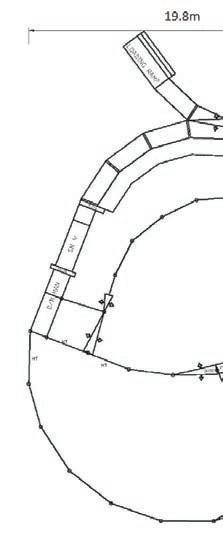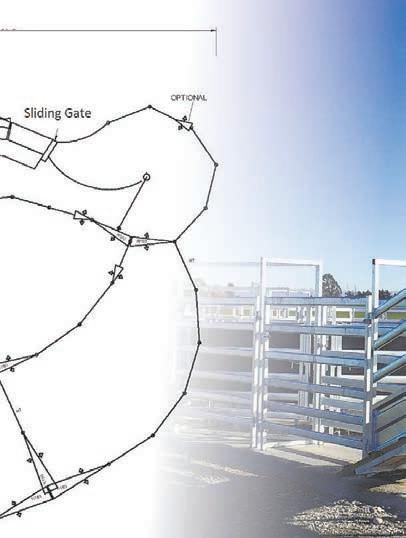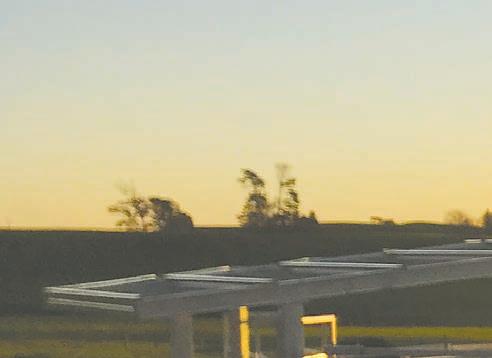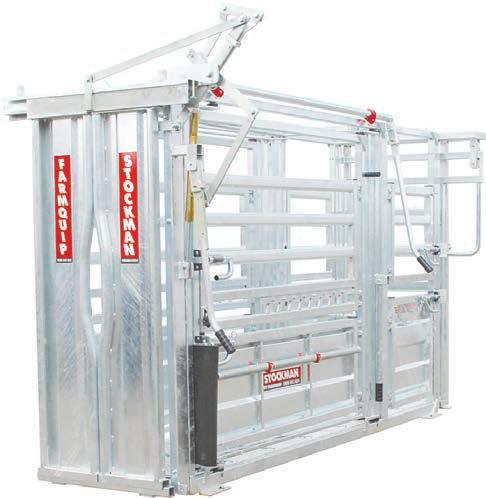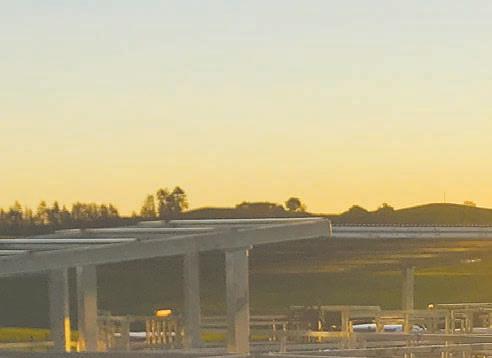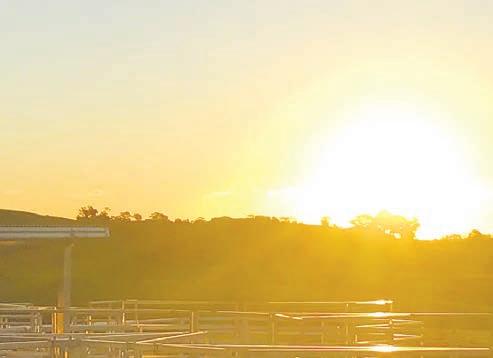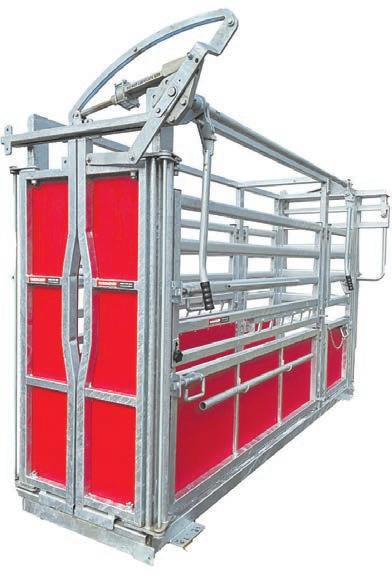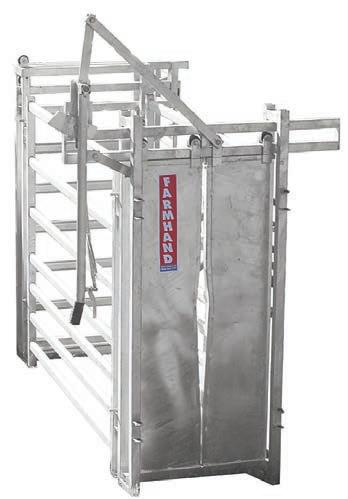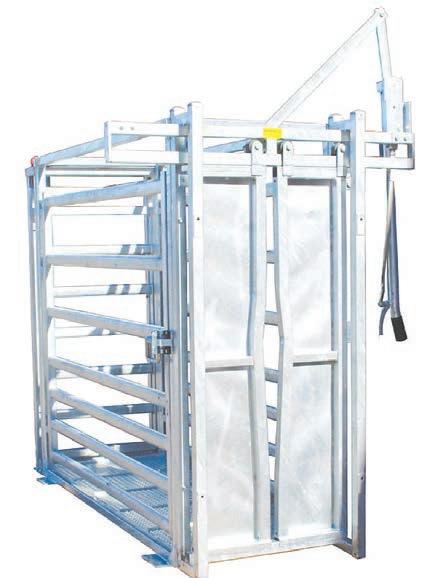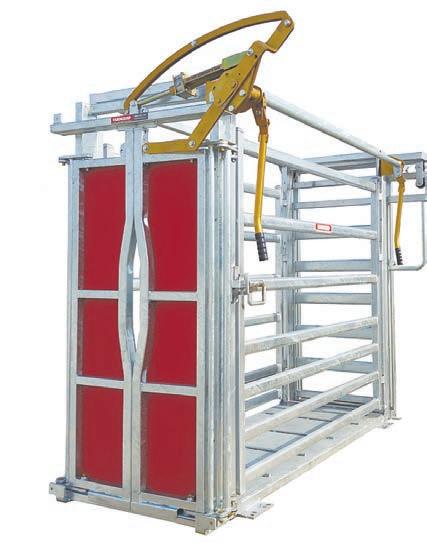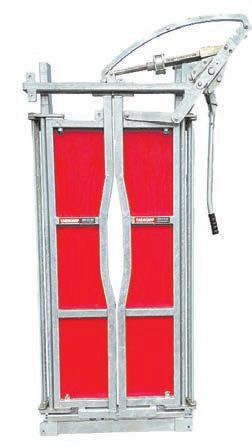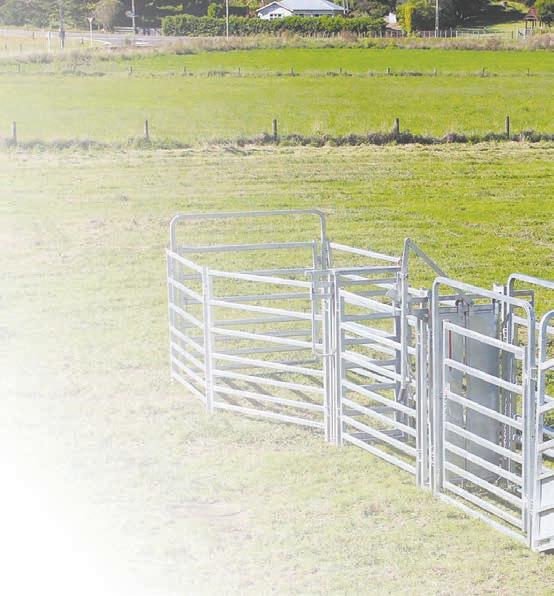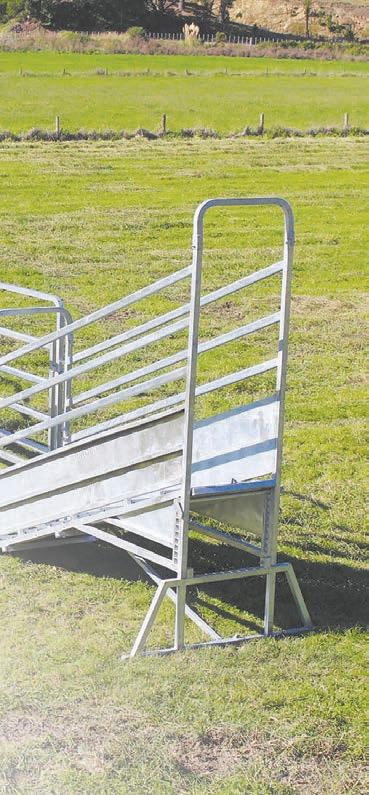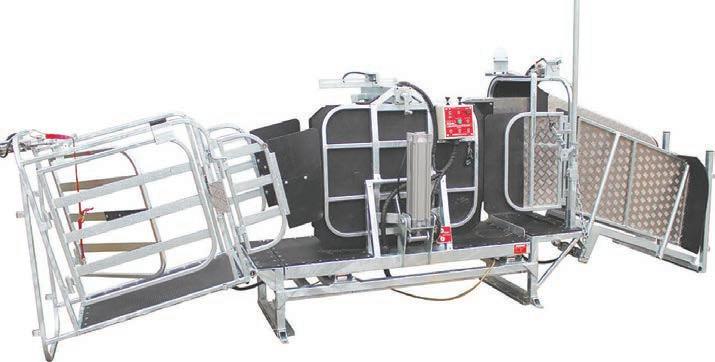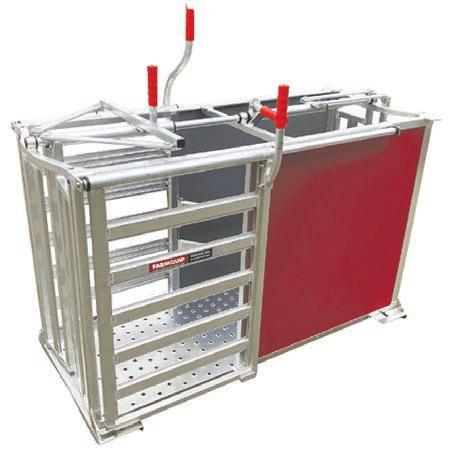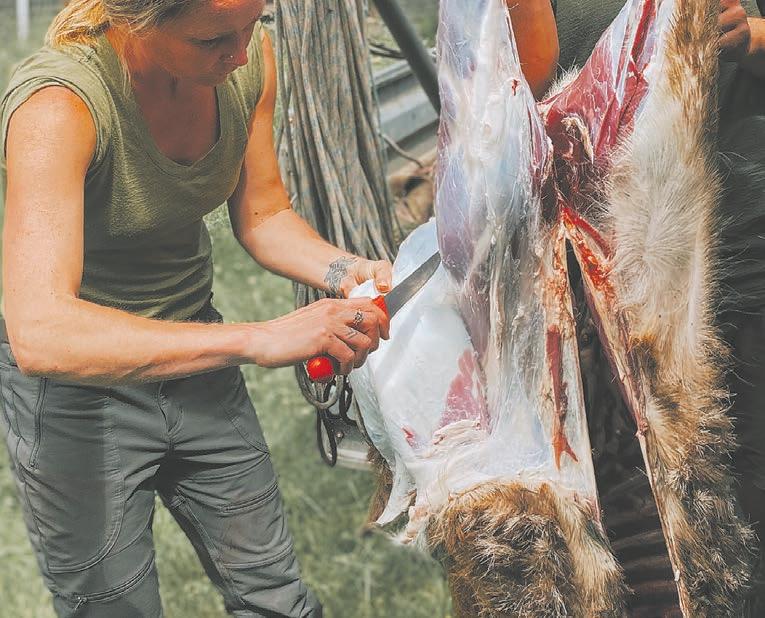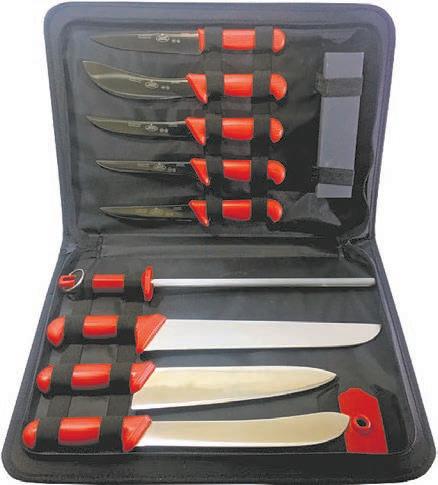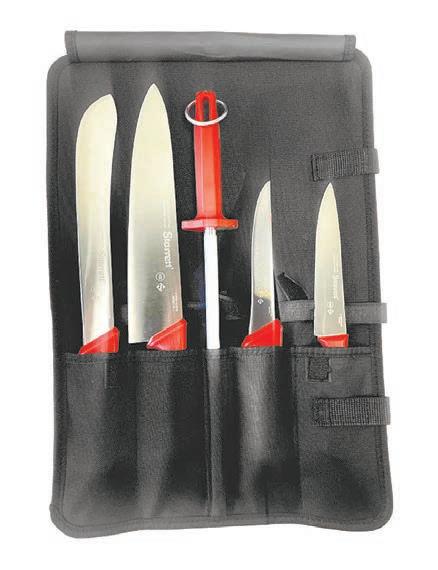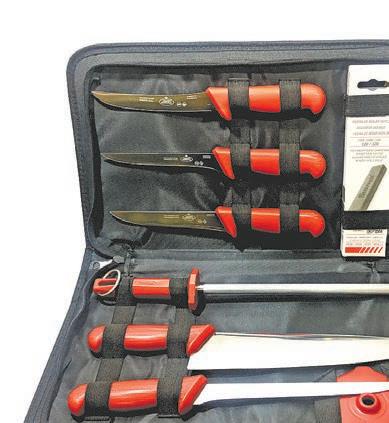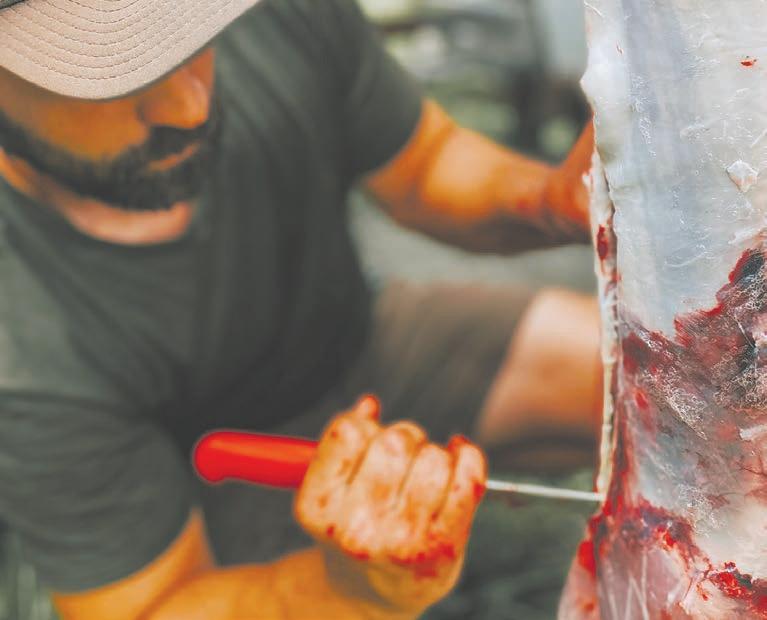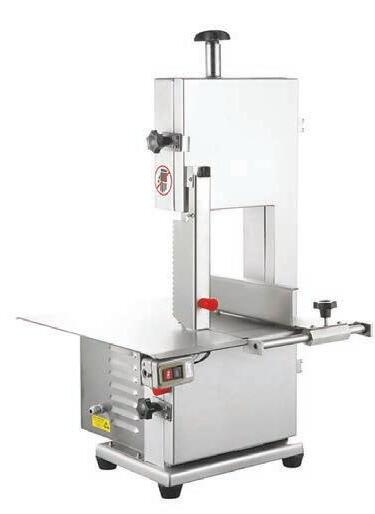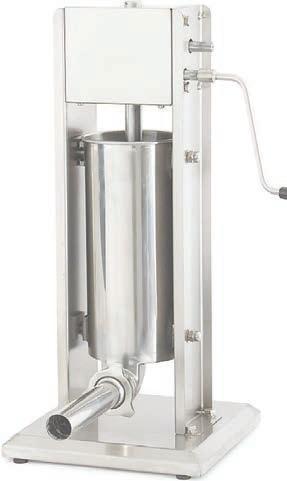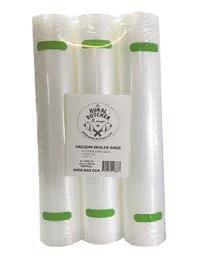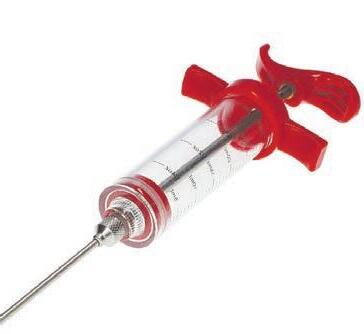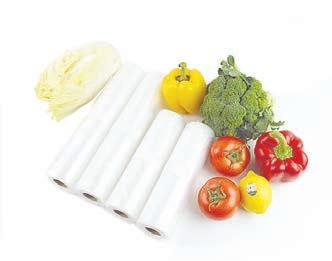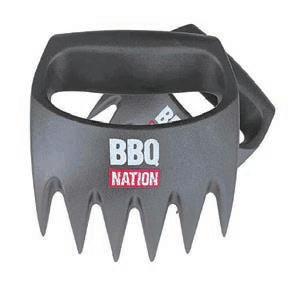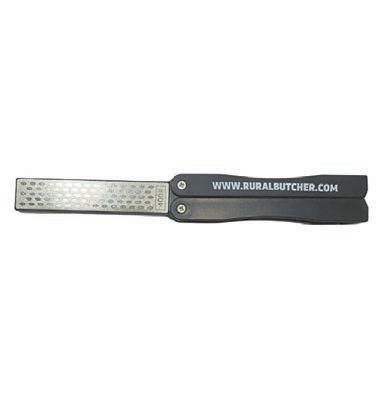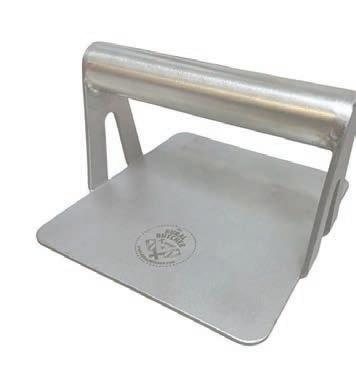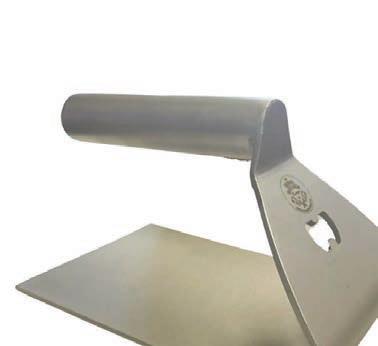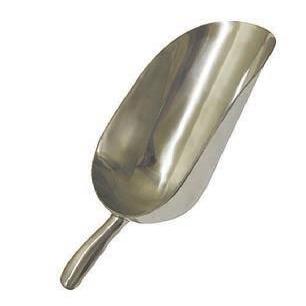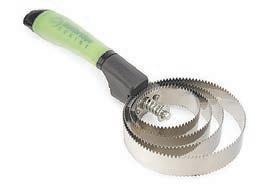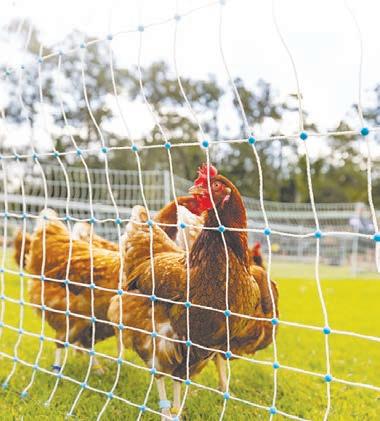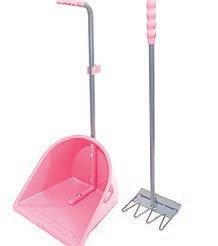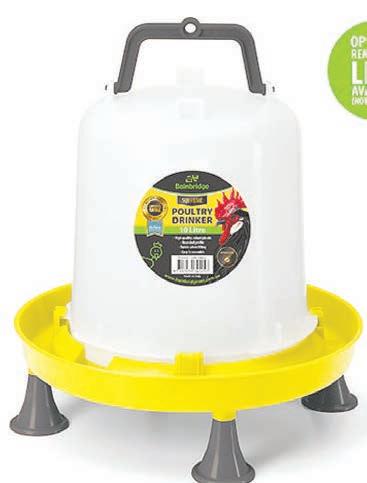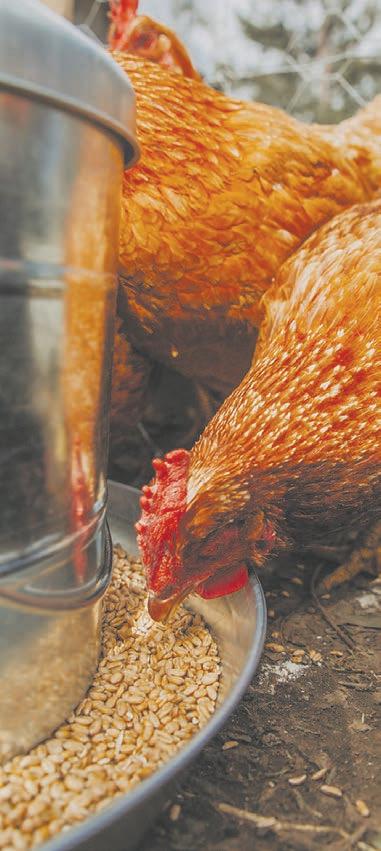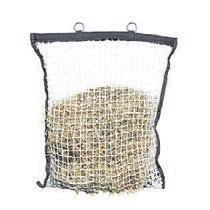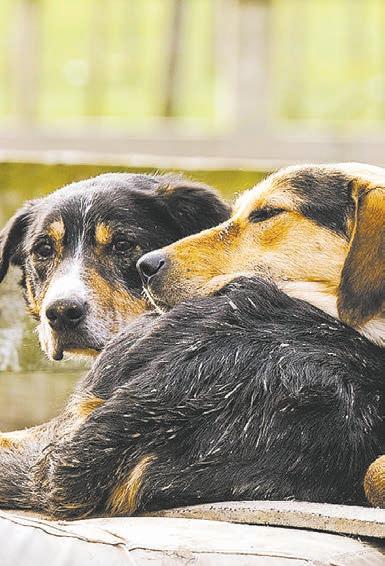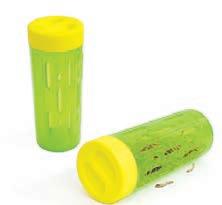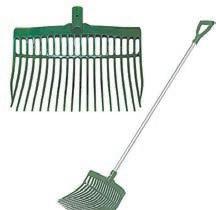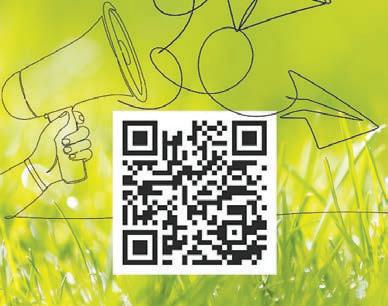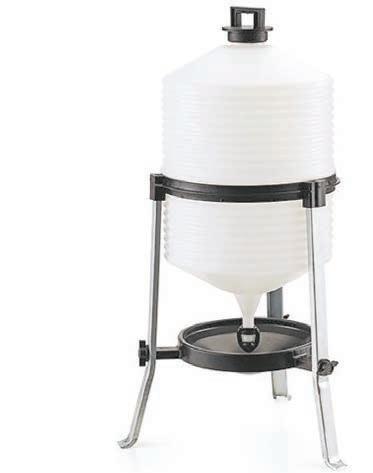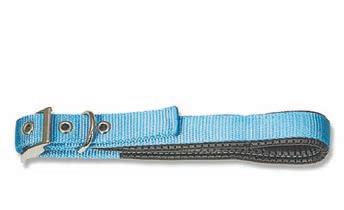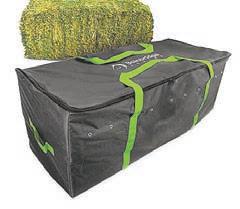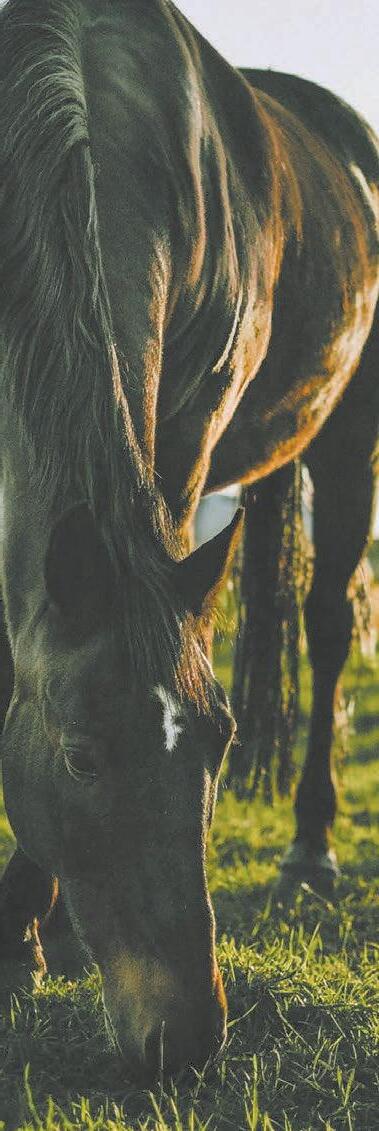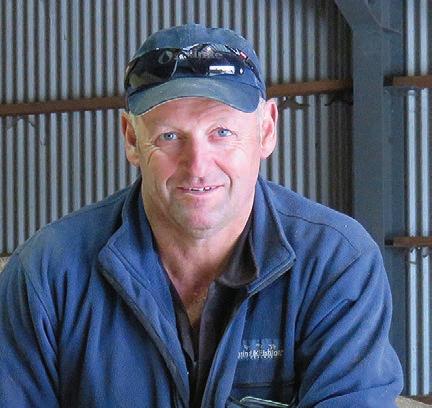

Resounding mandate for Fonterra

OVERWHELMING
support from Fonterra shareholders and a high voter turnout have delivered a “really strong, resounding mandate” to proceed with the sale of its global consumer and associated businesses, Mainland Group, to Lactalis, Fonterra chair Peter McBride says.
An 88.47% majority of the cooperative’s shareholders voted in favour of the sale, which will see this part of the co-operative’s business sell for $4.22 billion.
The vote saw 80.59% of shareholders participate, based on milk solids voted.
The final votes on the divestment were cast at a virtual special meeting last Thursday. McBride told Farmers Weekly that Fonterra management was pleased to have received a strong mandate for the sale and he was very satisfied with the result.
“Any turnout over 75% of shareholders on a resolution like that is a really strong, resounding mandate.”
It showed that Fonterra shareholders cared about the future of the business. They were highly engaged and farmers had taken the time to be well informed on the topic, he said. Looking back on the past 18
months since the divestment process was first publicly mooted, he said it had been a journey where the idea had morphed and evolved.
Huge effort had been put in by the co-operative’s senior management team to get to where it is today, he said.
“It’s been a huge amount of work and there’s still a huge amount of work to do in terms of the separation of the business.”
McBride said the decision to divest the Mainland Group businesses is significant, and the board had not taken it lightly.
“We have examined the strategic context we operate in, our strengths and how as a co-op we create value for our farmer owners.
“The divestment will usher in an exciting new phase for the co-op.
We will be able to focus Fonterra’s energy and efforts on where we do our best work. We will have a simplified and more focused business, the value of which cannot be overstated.”
Regulations required that more than 50% of shareholders vote yes in order for the sale to proceed.
Completion of the divestment remains subject to securing regulatory approvals and the separation of the Mainland Group business from Fonterra, both of which are well underway.
The approvals include getting the nod from the Overseas
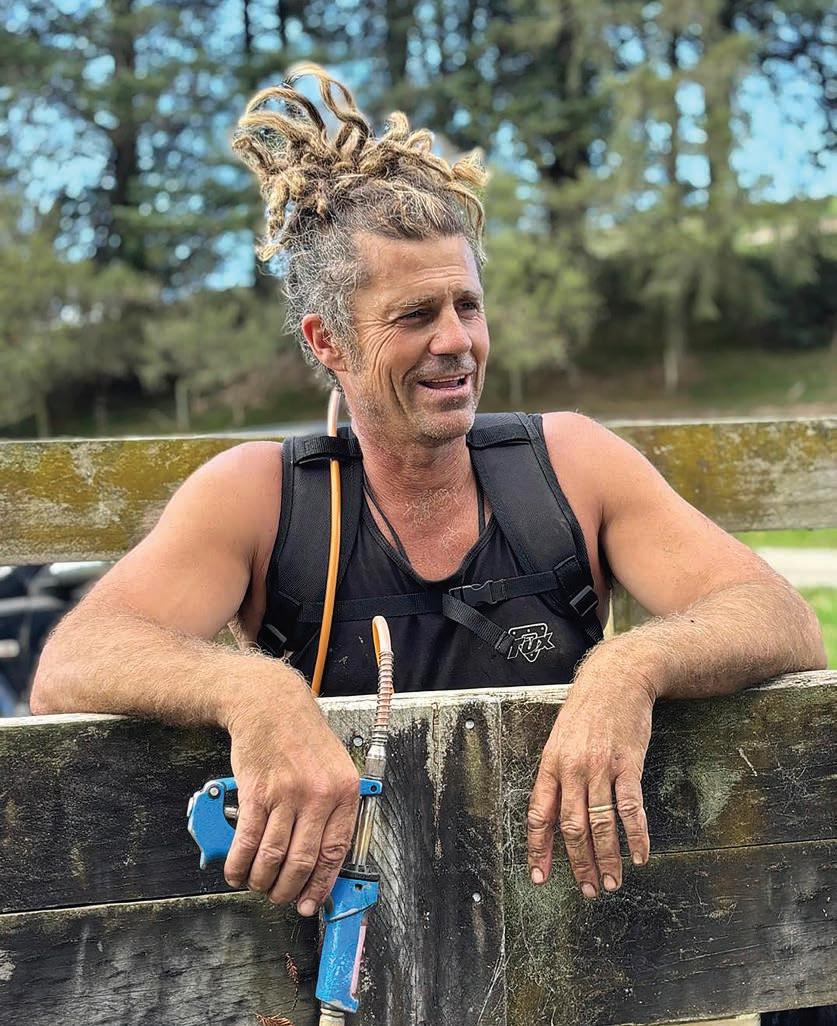

Hawke’s Bay farmer Dave McCurdy has avoided the dreaded haircut, having vowed to not visit his barber until all of his fences are repaired after Cyclone Gabrielle swept through. That was almost three years ago.
Scorching Hot Saw nets Jordan gold
New Zealand’s top axeman, Jack Jordan, has won the Stihl Timbersports World Championship individual event for the first time, going one better than he did at last year’s event.
Curiosity better investment than outrage, says Phil Morrison.






Gerald Piddock NEWS
Fonterra







How big is the Cali Thistle problem? This big.


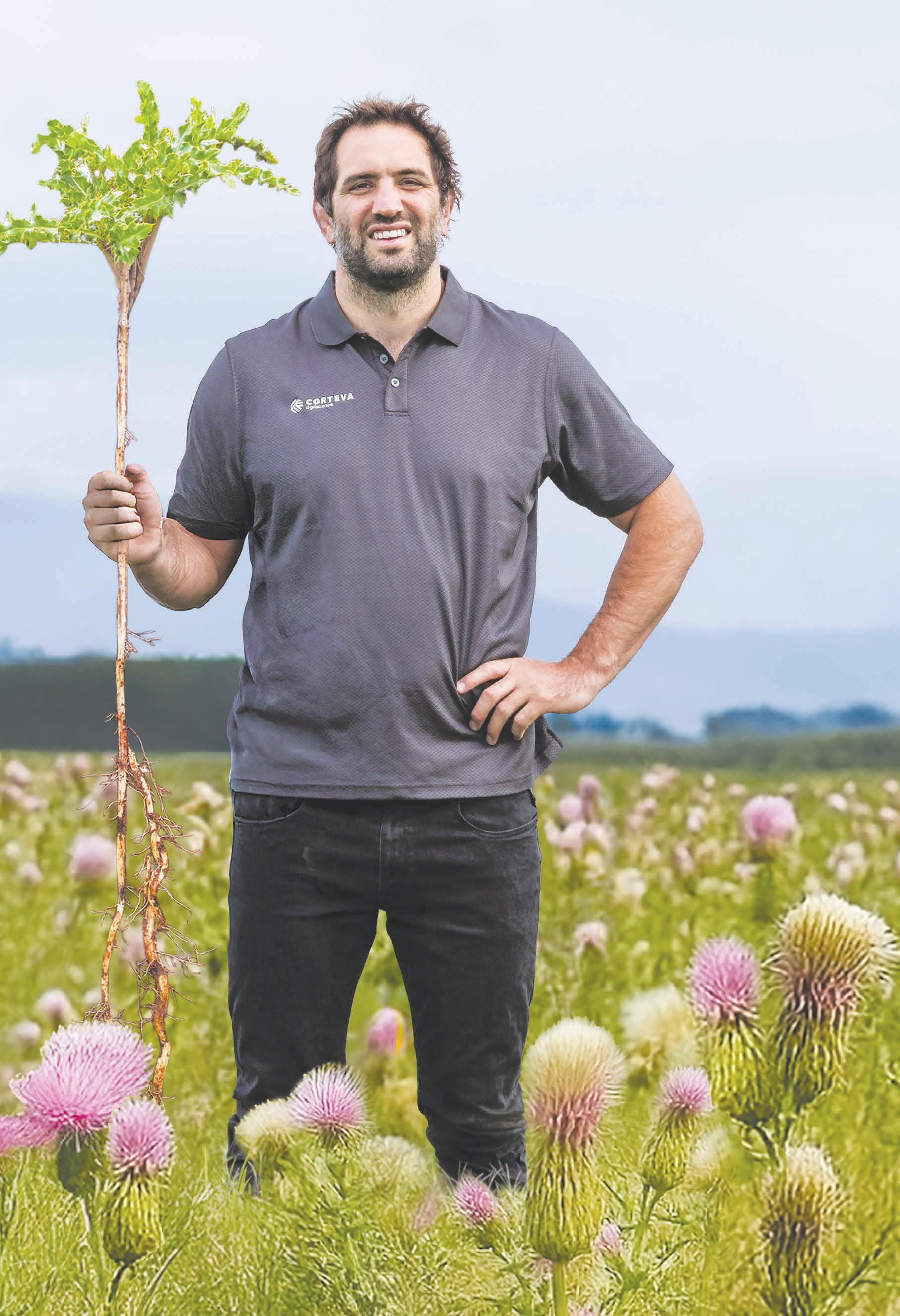
Samuel Whitelock
Plant Science Graduate, Lincoln Universit y.


As fa r m e rs k n ow, Ca l i fo r n i a n T h istl e
is i n c red i b l y d i ffi c u l t to e ra d i ca te.
T h a t ’s d u e to i ts u n usu a l l y d ee p ro ot
syste m , w h i ch ca n b u r row as d ee p
as 2 . 4 m et res – th a t ’s ta l l e r th a n
S a m u e l Wh i te l o ck .
N ot o n l y t h a t , l ef t u n c h e c ke d , e a c h ste m ca n
p ro d u ce u p to t h e l e n g t h of a fo ot y fi e l d i n ro ot
eve r y ye a r ; u p to 4 ,0 0 0 k i l o m et res p e r h e c ta re !
A n d t h e fa c t t h a t t h ey a re p e re n n i a l s, u n l i ke t h e i r
a n n u a l t h i st l e co u si n s, m e a n s t h ey j u st ke e p co m i n g b a c k ( a s yo u k n ow to o we l l ! )
B u t yo u ca n ta c k l e t h e p ro b l e m o n ce a n d fo r a l l , w i t h To rd o n Pa st u re B oss.
We re co m m e n d fo l l ow i n g a t h re e - s p ra y p ro g ra m m e, w i t h To rd o n Pa st u re b oss a s t h e a n c h o r p ro d u c t ,
fo l l owe d by a se co n d a p p l i ca t i o n of p h e n ox y
( M C PA ) a n d t h e n s p ot s p ra ys of To rd o n Pa st u re B oss, fo r l a st i n g resu l ts
A n d of co u rse To rd o n Pa st u re B oss ca n b e u se d o n a w i d e ra n g e of ot h e r h a rd -to - k i l l p a st u re we e d s.
S e e o u r we bsi te fo r d eta i l s.

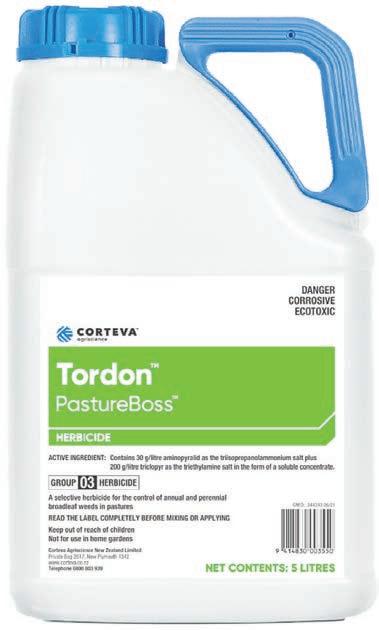

To view the Technical Manual or download the label scan the QR code.
Always read the label before use
Al ays re th l bel be r us
Get in touch
EDITORIAL
Bryan Gibson | 06 323 1519
Managing Editor bryan.gibson@agrihq.co.nz
Craig Page | 03 470 2469 Deputy Editor craig.page@agrihq.co.nz
Claire Robertson
Sub-Editor claire.robertson@agrihq.co.nz
Neal Wallace | 03 474 9240
Journalist neal.wallace@agrihq.co.nz
Gerald Piddock | 027 486 8346
Journalist gerald.piddock@agrihq.co.nz
Annette Scott | 021 908 400 Journalist annette.scott@agrihq.co.nz
Hugh Stringleman | 027 474 4003
Journalist hugh.stringleman@agrihq.co.nz
Richard Rennie | 027 475 4256
Journalist richard.rennie@agrihq.co.nz
Nigel Stirling | 021 136 5570
Journalist nigel.g.stirling@gmail.com
PRODUCTION
Lana Kieselbach | 027 739 4295 production@agrihq.co.nz
ADVERTISING MATERIAL
Supply to: adcopy@agrihq.co.nz
SUBSCRIPTIONS & DELIVERY 0800 85 25 80 subs@agrihq.co.nz
PRINTER
Printed by NZME
Advertise
SALES CONTACTS
Andy Whitson | 027 626 2269
Sales & Marketing Manager andy.whitson@agrihq.co.nz
Janine Aish | 027 300 5990
Auckland/Northland Partnership Manager janine.aish@agrihq.co.nz
Jody Anderson | 027 474 6094
Waikato/Bay of Plenty Partnership Manager jody.anderson@agrihq.co.nz
Palak Arora | 027 474 6095
Lower North Island Partnership Manager palak.arora@agrihq.co.nz
Andy Whitson | 027 626 2269
South Island Partnership Manager andy.whitson@agrihq.co.nz
Julie Hill | 027 705 7181
Marketplace Partnership Manager classifieds@agrihq.co.nz
Andrea Mansfield | 027 602 4925
National Livestock Manager livestock@agrihq.co.nz
Real Estate | 0800 85 25 80 realestate@agrihq.co.nz
Word Only Advertising | 0800 85 25 80 Marketplace wordads@agrihq.co.nz
PUBLISHERS
Dean and Cushla Williamson Phone: 027 323 9407 dean.williamson@agrihq.co.nz cushla.williamson@agrihq.co.nz
Farmers Weekly is Published by AgriHQ PO Box 529, Feilding 4740, New Zealand Phone: 0800 85 25 80 Website: www.farmersweekly.co.nz
ISSN 2463-6002 (Print) ISSN 2463-6010 (Online)
Contents
Focus
News in brief
NZ to host
1-19
20-21
23-25
Farmers . 26-29
30-51
52-54
54-57
NZ
58-59
60-63
64
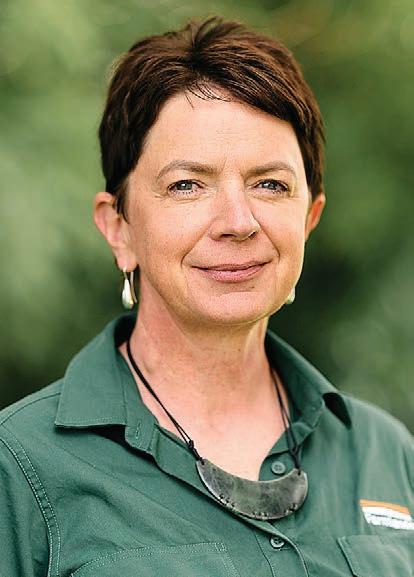
CAUTIOUS OPTIMISM: While farmgate returns are high, Farmlands chief executive Tanya Houghton says that may not mean farmers and growers suddenly want to spend a lot more money.
P9


The International Dairy Federation will hold its World Dairy Summit in Auckland in November 2026.
The event runs on November 15-20 and will have a theme of Healthy People, Healthy Planet, Healthy Economies, with a pastoral focus and a commitment to diversity and inclusion among speakers and topics. The IDF is a leading source of scientific and technical expertise for the global dairy industry.
Comvita steady
It’s been a steady start to the 2026 financial year for Comvita with the mānuka honey business reporting a modest increase in revenue and its business trading modestly ahead of budget.
Revenue for the financial quarter was $45.6 million, exceeding a budget of $43.8m and prior year of $42.3m, it said in a statement on NZX.
Tech funding
New Zealand agritech company Mindhive Global has secured funding to accelerate its development in global leather manufacturing.
Mindhive’s technology transforms leather quality assessment from manual inspection into precision AI-driven grading that delivers verified hide data within seconds. The Series A funding was led by agritech venture capital firm Cultivate Ventures, with strong participation from existing shareholders.
Scholarships open
Students considering a future in the red meat sector have until November 26 to submit applications for Meat Industry Association scholarships.
The MIA offers scholarships of $5000 for undergraduates and $10,000 for postgraduate students. Applications are welcome from tertiary students studying subjects relevant to the red meat processing industry.
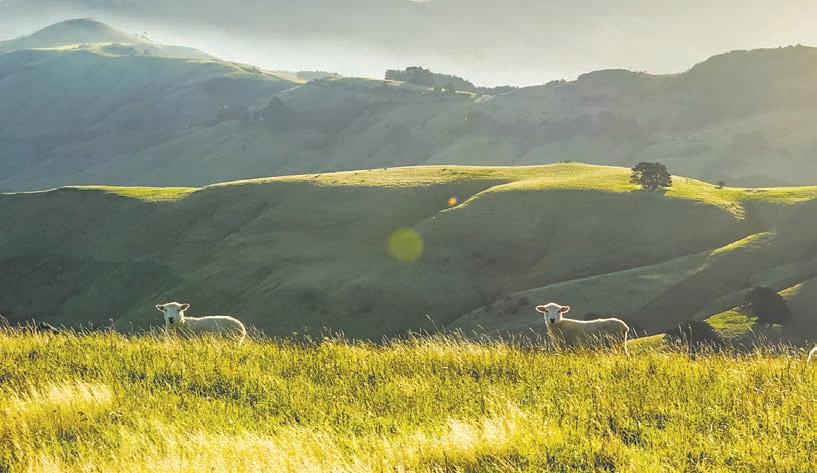
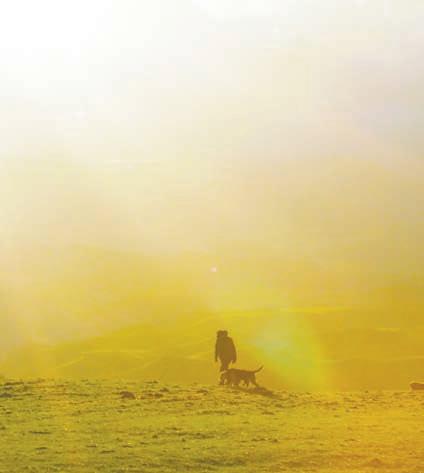
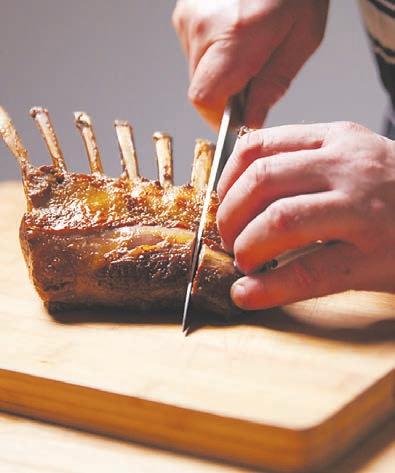

Canty irrigators wrecked in gale havoc

Gerald Piddock NEWS Weather
CANTERBURY irrigators are facing a repair bill in the tens of millions of dollars after the recent gale force winds severely damaged pivots and RotoRainer systems across the region.
A proper assessment of the extent of the damage is still being carried but the winds caused many pivots, RotoRainers and effluent irrigators to tip over, twisting their metal structures, Irrigation New Zealand CEO Karen Williams said.
There’s been significant damage in north Canterbury, with pockets of severe damage elsewhere in the region.
Some farmers followed best practice and anchored their irrigators before the weather passed through, but even that was not enough to prevent damage, Williams said.
“Some have got pretty mangled whole pivots and some it’s just a span or two, and some have their corner arms severely affected.
Continued from page 1
Investment Office and the Financial Investment Review Board in Australia. The sale has already received approval from the Australian Competition and Consumer Commission.
Subject to these steps being completed, Fonterra expects the transaction to complete in the first half of the 2026 calendar year.
Fonterra is targeting a tax-free capital return of $2 per share to shareholders and unit holders, equivalent to $3.2bn, once the sale is complete.
Another shareholder vote will be required for the payment of the capital return with more detail on the timing and process for the capital return due in early December.
McBride said this briefing will be
“It’s pretty extensive and we’ve been communicating daily with our two key service industry companies, PGG Wrightson and Water Force, and they were out assessing on Friday [October 24].”
Initial reports were for about 200-300 spans, which quickly leapt to 500 over the weekend. Others had the figure as high as 700, Williams said.
You make this massive investment to offset risk, and we have had a severe weather event that’s really undermined that.
Karen Williams Irrigation NZ
“At approximately $30K per span, we’re currently looking at $21 million plus. The lost production while these irrigators are not operating will also be very significant.
“It’s a significant event and really stressful on the cusp of the irrigation season. You make this massive investment to offset risk,
separate from Fonterra’s annual meeting, scheduled for that same month.
At last Thursday’s meeting McBride, CEO Miles Hurrell and Co-operative Council chair John
and we have had a severe weather event that’s really undermined that.”
The assessments by PGW and Water Force will determine what parts are required, how to prioritise the repairs with the stock on hand and what will needed to be imported.
They will communicate with suppliers to ensure that pipeline is coming through. Early indications are that they have a decent supply of parts on hand, Williams said.
There have been discussions about how the industry can better support and prioritise the shipping of those parts and whether skilled migrant labour is required to assist with the repairs.
“The rubber will really start to hit the road in the coming two to three weeks when we have a full assessment done and we can really understand what that looks like against what supplies are like.
“It’s really imperative we keep talking at that point – that, if we are short, what are the ways and mechanisms to help each other to try and speed this up.”
It will be challenging, given
Stevenson gave one final pitch to farmers.
McBride thanked farmers for their engagement through the sale process.
“Following a highly competitive
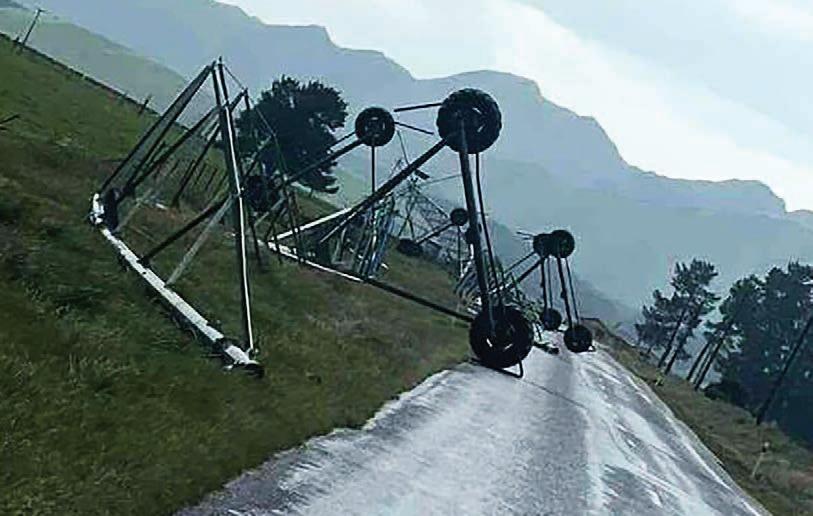
the extent of the damage and the extremely narrow window to get equipment repaired with summer fast approaching.
“It’s peak growing season and the perfect storm would be that suddenly it goes really dry in North Canterbury.”
Williams urged affected farmers to get their insurance claims sorted as soon as possible.
sale process with multiple interested bidders, your board is confident that a sale to Lactalis is the highest value option for the co-operative including over the long term.”
For everybody else, keeping the communication and support lines open is key.
“The best thing we can all do, for everyone who is backing our farmers, is just to keep talking and planning and plotting to mitigate the negative impact of this as much as possible.”
MORE: See page 6
ANCHOR’S AWEIGH: Fonterra chair Peter McBride says the high voter turnout shows Fonterra shareholders care about the future of the business.

He acknowledged the emotional connection many had to the brands and said many may mourn their change of ownership.
“But it is a fantastic deal, where the co-op gains more than just $4.2bn.”
It would usher in an exciting new phase for the co-op, he said.
He also acknowledged the risks that came with the deal. The supply agreement with Lactalis is not exclusive and there is a risk that in time, Lactalis may chose a different supplier.
However, “customer loyalty cannot be written into a contract forever – it’s earned.”

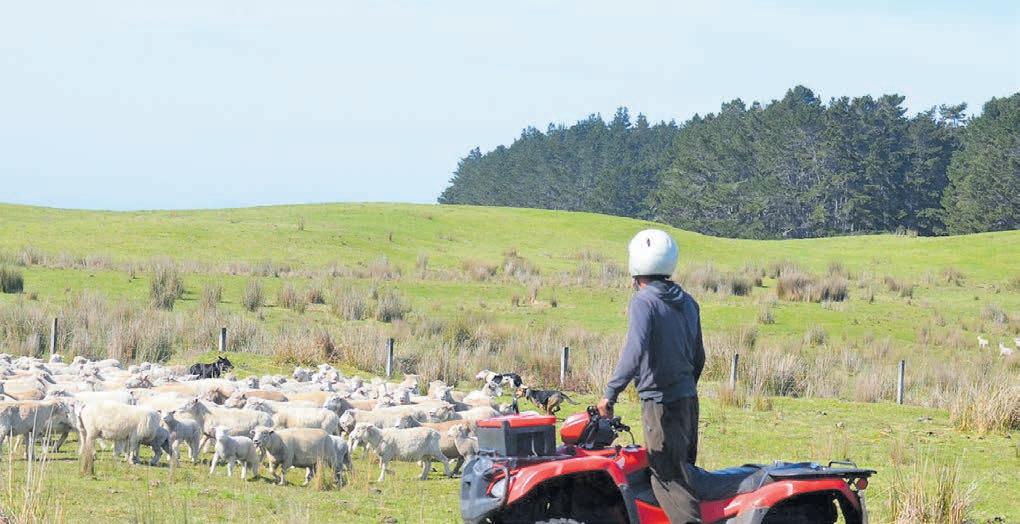
TORN: Gale force winds damaged irrigators across Canterbury, where pivot and RotoRainer repair bills are expected to total tens of millions of dollars.
Generators power through storm outages

Gerald Piddock NEWS Weather
HALF an hour of extreme wind was enough to knock out the power on Southland dairy farmer
Bruce Eade’s farm for six days.
The storm, just before Labour weekend, caused widespread

damage across South Island farms, leaving thousands without power.
“It came and went and tore through everything on the way,” he said.
Eade had his power turned back on just before 6pm on October 28, after relying on three generators to keep his milking shed, robot barn and household running.
The weather also temporarily knocked out both his phone signal and internet, making communication with his milk supplier, Fonterra difficult.
His dairy farm at Kelso, north of Gore, uses both milking robots and a herringbone to milk the herd and lost power on October 23.
Half of the herd are kept indoors and are milked on the robots, and the other half are milked through the herringbone.
He has a stationary dieselpowered generator as a back-up for the robots and that automatically started when the grid power went out, running for 135 hours until it was restored.
“We just had to make sure it was filled up with diesel and it ran the whole system – the vat and the fridge.”
He used a tractor-generator to run the herringbone shed, sharing it with his neighbour.
“We were all prepared to get into it. It was just the logistics of swapping between sheds and milking times and things like that.”
On the domestic side, he had a petrol generator that was shared between himself, his parents and his staff for their housing.
Those staff “mucked in”, relying on a barbecue gas bottle for cooking over that period, he said.
“Everyone was comfortable, given the circumstances. The snow we got on Sunday night-Monday morning, we didn’t need that. We had a ‘What are they going to throw at us next?’ mindset.”
Having the generators is a necessary back-up when you are running a multimillion-dollar asset such as a dairy farm, he said.
“We made the right choice back in the day. Generators aren’t a sexy purchase, and you can’t go fishing in a generator, but when it comes to this situation, it paid dividends.”
It has also become apparent that there are a large number of farms in the region without generators, based on what he has seen in the

past several days, he said.
“That’s going to change now.
“I would go out on a limb and say 75% of people didn’t have them.”
Often, those farmers sharing their generator with others had the generator wired to their specific farm – meaning an electrician had to re-wire it so it could work on other farmers’ sheds before it could be used.
“I think the thing that caught
out everyone who didn’t have a generator was the fact that there was the mindset of ‘It won’t happen to us and if it does it will be localised and half a day’.
“The fact that it wiped out most of Southland and South Otago in one swoop is what buggered everybody. The sheer number of places without power, there just wasn’t the generators or the people power to go around.”
Research backs strong profit gains from Halter
Staff reporter TECHNOLOGY Dairy
AN AGFIRST-Transform Agri
study of Halter’s virtual fencing technology on 10 dairy farms across the country shows that when combined with strong farm management, significant gains in most areas of farm performance are possible.
The study by the two consultancy firms showed the technology enabled gains in pasture use, labour efficiency, animal performance, and environmental outcomes.
On average, these gains resulted
in an increase in farm profit before tax of 13.2%. The farms also harvested 8.9% more pasture and produced 9.5% more milk solids per hectare.
Six-week in-calf rates improved by 4.7%, while empty rates reduced by 2.1%. Several farms reduced staffing needs or hours worked, freeing time for higher-value tasks.
Staff reported less fatigue, shorter workdays, and improved job satisfaction.
Staff across all farms also highlighted improved work-life balance, with more predictable rosters and less repetitive manual work.
Freed-up time allowed teams to
focus on monitoring, planning and animal care. From a recruitment perspective, several farms noted that Halter has made farming roles more attractive to new, tech-savvy employees.
Farmers reported earlier detection of health issues and
We chose these farms because they’re highperforming, and we wanted to capture this new level of farm performance.
Steve Crowhurst Halter

smoother calving management. Reduced stress on animals contributed to better recovery post-calving.
Farms reduced nitrogen use, improved crop utilisation, and were able to exclude environmentally sensitive areas from grazing during adverse conditions.
AgFirst CEO James Allen said the impact of Halter is largely dependent on the ability of a farm to use the information and technology in decision-making and management.
“What these farms show is that Halter can enable significant gains to be made by effectively optimising the farm’s
resources. Halter helps build more sustainable, resilient, and productive dairy businesses.”
Halter’s head of corporate accounts and partnerships, Steve Crowhurst, said the results of the study aligned with the feedback Halter received anecdotally from farmers.
“The findings reflect what farmers tell us: when paired with good management and a willingness to change how they farm, Halter increases profitability. Our technology helps farmers be more efficient with their pasture, make more informed decisions, and create more balanced, sustainable rosters.’’



























POWER: Southland dairy farmer Bruce Eade’s stationary generator ran for 135 hours to keep his milking robots working during the power cut.
OPTIONS: Bruce Eade’s dairy farm at Kelso, north of Gore, uses both milking robots and a herringbone to milk the herd, and lost power on October 23.
NZ dairy returns to old haunts with UK foray

Fonterra
NEW Zealand dairy is reestablishing itself as an exporter to the United Kingdom, 50 years after it was driven out by tariffs and quotas.
Fonterra has opened a small office in London, seeking to capitalise on the recent free trade agreement, and is encouraging the UK food service and manufacturing sectors to use its dairy products.
The first ever shipment of frozen New Zealand dairy products left for the UK in 1882, and for almost the next 100 years the country took almost every pound of cheese and butter NZ produced.
In 1973 the UK joined the European Union and with that came new trading conditions that made it uneconomic for NZ dairy exports.
Fonterra’s UK country manager, Alex Hume, said the 2023 signing of a NZ-UK free trade agreement means the time is ideal for
Fonterra to return to the UK, the world’s second largest net dairy importer.
“We have a gold-standard trade deal which gives us significant access, with all quotas and tariffs removed from 1 January 2028,”
Hume told Farmers Weekly.
He sees potential for butter, cheddar and anhydrous milk fat, the latter aimed at the protein market and end users as diverse as newborns, sportspeople and others looking for nutrition to enhance their health.
Hume said there remains a lingering memory and respect in the UK for NZ dairy products, which has translated to quick market gains for Fonterra, including supplying the UK’s second largest cheddar customer.
He said it is not a market Fonterra would operate brands in, given the complexity and competitiveness.
He said the best opportunity to extract long-term value is through selling high-value ingredients, working with strategic partners.
Fonterra sold the Anchor butter business in the UK to Arla in 2009.
“Fonterra’s pending divestment
EUROPE’S CHANGING LANDSCAPE
will tighten the focus on what we are doing up here,” he said.
“If anything, we want to do more up here.”
NZ’s grassfed provenance story resonates with customers, and he sees opportunity for organic dairy products from consumers seeking what they consider pure and natural dairy.
It’s good to be back to write the next chapter.
Alex Hume Fonterra
“Having the NZ provenance story is very important over here to help differentiate us.”
Fonterra cheese also has an enviable reputation, gained from winning multiple cheese and dairy titles at the prestigious International Cheese and Dairy Awards, which have been held

annually in the UK since 1897.
“This confirms that Fonterra is right up there with the best in the world,” said Hume.
UK dairy production in 2024-25 was about 14.2 billion litres, but with a population of 70 million and one of the highest rates of milk consumption per capita in the world, 44% of that milk is consumed as liquid and 33% as cheese.
NZ dairy production in the same year was 16.3 billion litres.
Hume said NZ dairy exports
will complement UK seasonal production.
“It’s good to be back to write the next chapter.”
• Wallace’s Meeting the Market tour has been made possible with grants from Fonterra, Silver Fern Farms, Rabobank, Zespri, Alliance Group, Meat Industry Association, Wools of NZ, Beef + Lamb NZ, NZ Merino, the European Union and Gallagher.
https://www.farmersweekly.co.nz/ meeting-the-market/
MORE: See pages 14-17
Wool companies team up to find efficiencies
TWO of New Zealand’s leading wool companies, Wools of New Zealand and PGG Wrightson, are exploring ways to consolidate aspects of their wool logistics operations.
The move is in response to overcapacity across New Zealand’s wool logistics infrastructure, following a long-term decline in production volumes. This has driven up operating costs.
By exploring ways of working together, Wools of New Zealand and PGW aim to reduce costs, improve asset utilisation and help secure a stronger future for wool growers and the sector.
Both companies will continue to independently operate and compete for wool, ensuring farmers retain full choice over who they choose to transact with.
Wools of New Zealand chief executive John McWhirter said the discussions are about two companies taking the lead to
deliver the structural change the industry needs.
“As a 100% farmer-owned company, our growers expect us to be proactive in leading change that supports a strong future for New Zealand wool.
“Coming together to seek solutions is an important step towards a more sustainable and competitive future for New Zealand’s wool sector, a key contributor to the country’s economy.”
PGG Wrightson Wool general manager Rachel Shearer said the discussions make sense at a time


when the wool supply chain is under pressure, and illustrate the companies’ faith in the fibre and its future.
“Farmers are facing rising costs, and like them, we must control our costs too.
“Continuing to support a large, under-utilised infrastructure is simply not sustainable. It doesn’t serve our farmers or shareholders well.
“This joint approach represents a practical example of industry leadership to discuss how to reduce duplication, improve
efficiency and ensure the infrastructure that remains is fit for the future.”
Continuing to support a large, under-utilised infrastructure is simply not sustainable. It doesn’t serve our farmers or shareholders well.
Rachel Shearer PGG Wrightson
BACK IN TOWN: Alex Hume heads Fonterra’s new London office as the dairy co-operative seeks to re-establish itself in the United Kingdom.
Photo: Pexels
Neal Wallace in London MARKETS
You could get business from the farm to a billboard with $1 deals YOUR
Ta l k to o n e of o u r b u s i n e s s ex p e r t s i n - sto re to d a y.


Farmlands profits enjoy welcome boost

Bryan Gibson NEWS Agribusiness
FARMLANDS Co-operative is back in the black, posting a net profit after tax of $2.8 million for the 2025 financial year – up from a loss of $9.3m (restated) in FY24.
Revenue and gross profit
increased to $847.3m and $185.4m, up from $740.3m and $158.9m respectively last year, driven by growth in the core rural supplies business and a full year of trading from the nutrition manufacturing investment, SealesWinslow.
Its operating EBITDA was $33.5m, up 64%, while turnover was $2.55 billion.
Chief executive Tanya Houghton said it’s a great outcome and “a result indicating some of the hard work that our Farmlands team have been doing on delivery against our strategy”.
Houghton said the acquisition of Seales Winslow is paying off and it is now the single biggest category of the business.
The co-op initiated a strategy reset a couple of years ago and that is now paying off, with both farmer and growers and Farmlands staff vewing it positively.
The recent launch of Farmlands Flex, which offers solar infrastructure and buying power
to customers, is also exceeding expectations.
“Within five months, we [have become] the largest procurer in New Zealand of solar panels and batteries in what’s called the commercial and industrial space, and it’s just going to get stronger,”
Houghton said.
“It’s so impressive to see the awareness that is there and the knowledge and understanding of how being in control of power is critical.”
Houghton said that despite vastly improved farmgate returns in the dairy and sheep and beef sectors, farmers are still spending with caution.
“As much as commodity prices are up through FY25 and even now into early FY26, that doesn’t directly correlate to our farmers and growers suddenly wanting to spend a lot more money.
“So while, certainly, there is an improvement in sentiment and the commodity prices obviously help, I think the results are more of a reflection of some really great improvements that we’ve been making at Farmlands.”
Looking ahead, Houghton is cautiously optimistic about what FY26 will bring.
“What we are seeing already is that farmers are wanting to spend in areas that really impact their productivity. So, for example,
farmersweekly.co.nz/podcasts
nutrition, calf meal, calf milk replacer are doing really well at the start of the season.”
The biggest question mark is the weather.
“We’ve got areas that are very dry at the moment and so there’s going to be a late spring in terms of what that means for use of chemicals etcetera. We’re also seeing very wet areas. We’re going to see areas where people are going to have to be re-sowing. So we’re cautiously optimistic.”
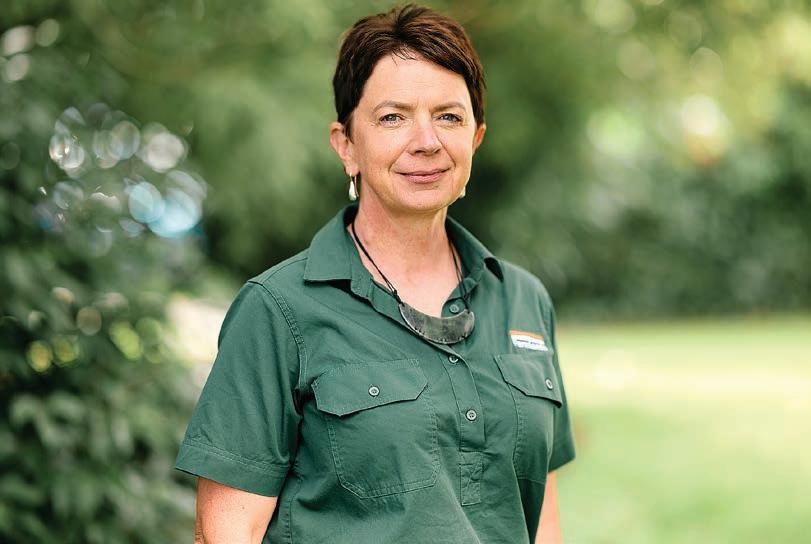
CAUTIOUS OPTIMISM: While farmgate returns are high, Farmlands chief executive Tanya Houghton says that may not mean farmers and growers suddenly want to spend a lot more money.
Upgraded halal deal with Malaysia
Staff reporter NEWS Production
STEPS by the government to reduce non-tariff barriers facing halal-certified exports to Malaysia have been welcomed by the meat sector.
Halal processing is a cornerstone of the New Zealand meat industry’s business model and smoothing the pathway for halal certified red meat products
will strengthen long-standing relationship with Malaysia and will help unlock new export opportunities, Meat Industry Association of New Zealand chief executive Sirma Karapeeva said.
“New Zealand has been exporting halal-certified meat for nearly 50 years. Halal processing allows our industry to export red meat to Muslim countries and consumers around the world and find the best market for each part of the carcase.
“While there are still steps to
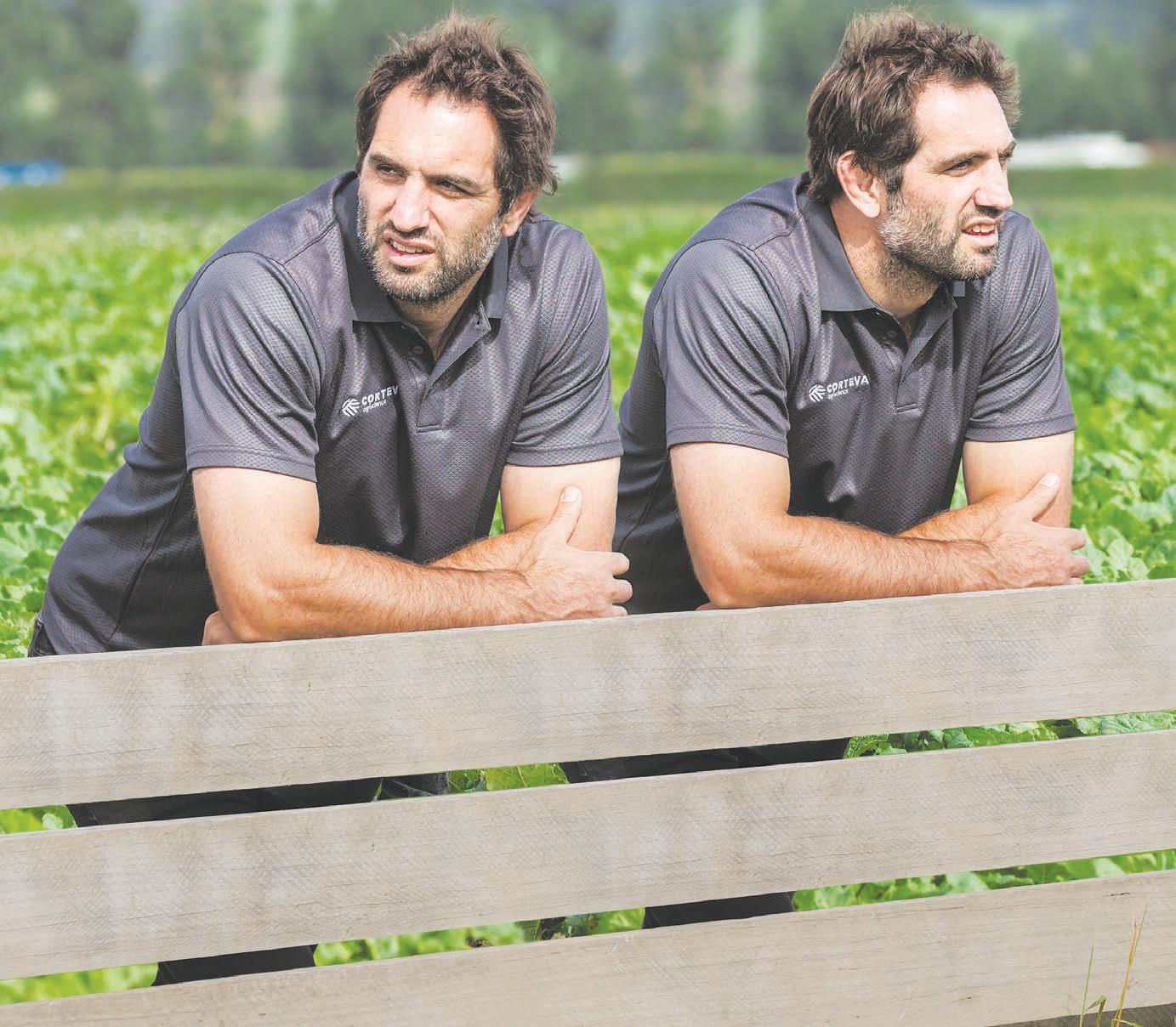

J ust kidding, we know there’s no B ill Whitelock B ut with Cor teva’s new TwinG uard produc t you’ll be able to tackle damaging pests with t wice the power you’ve had before.
formalise the arrangement, it has the potential to bring significant opportunities for our red meat exports in a market of 35 million people.”
New Zealand exported halal certified products to 63 countries worldwide last year, accounting for $2.9 billion of export revenue.
Halal-certified exports from New Zealand to Malaysia were worth $65 million, increasing to $79m in the year ending September 30 2025, she said.
TwinG uard from Cor teva is the advanced solution for control of damaging pests in forage brassica crops.
TwinG uard protects your brassica crop by combining the proven actives Isoclast® and Jemvelva® to target key pests like nysius, aphids and caterpillars.
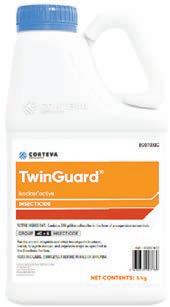

With fast and effective control, IPM compatibilit y and a low environmental impact, TwinG uard is your go-to solution for reliable brassica crop defence
Talk to your local rep today about how TwinG uard can work for you

Govt needs to get on board with beetles

Gerald Piddock NEWS Environment
DUNG Beetle Innovations cofounder Dr Shaun Forgie warns the business may have to close if more farmers do not start investing in the insects for their environmental benefits.
The Auckland-based company, which has been in business since 2014, imports 11 dung beetle species. It sells these to the primary sector as a cost effective, non-invasive tool for reducing animal manure on pasture and revitalising soils.
Around 15% of New Zealand farmers would be classified as innovative and first adopters and another 15% who wait to see the results from that initial 15%, Forgie said.
He said he suspects that this 30% minority has already largely been serviced.
The majority will not use the beetles unless there is government support – which is what happened in Australia.
“If you want to get dung beetles across the country to
improve the GDP, you need to make them free to all farmers, otherwise only 15-30% will adopt it.
“I think that’s what’s happened in New Zealand.”
Australia is onto its seventh annual dung beetle release programme, and the Western Australian government estimates the beetles contribute a billion dollars to its economy.
Scaling up beetle usage would also help improve water quality but that would require government backing, which Forgie estimates would cost around $60 million over 10 years.
“That’s less than [1%] of the money they spend on planting trees.”
While the natural caution of the farming sector is partly to blame, the company has also fallen victim to a mindset of talking and not doing.
“We procrastinate the hell out of everything without actually getting on with anything.”
Forgie said that over the years he has done countless presentations to local and central government as well as farmer groups on how
dung beetles can positively impact the primary sector and environment.
While they are always well received, this has not translated into enough sales at a scale to keep the business sustainable.
In December Forgie spoke before a parliamentary Select Committee on how the beetles could help reduce drench resistance in livestock.
“I said to them, the single biggest way you can knock that process out is by getting rid of the reservoir of poop on the pasture surface, which contains the shed eggs of these gut parasites.”
While his presentation was well received, he said, there was no follow-through action. If nothing changes, Forgie estimates they will have to close down in the next 12 months. He is also in discussions with some regional councils about potentially buying some or all of the business and operating it as a community-run project.
“That will help immeasurably, but if we don’t get that increase in sales from the general farming public, we won’t survive past next year.”
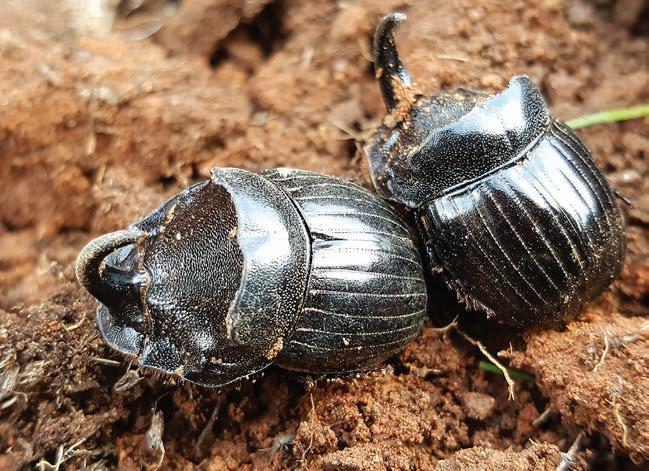
DEMAND: Dung Beetle Innovations may have to close in the next 12 months if more farmers don’t use the beetles, company cofounder Dr Shaun Forgie says.
Decades of top genetic research honoured

Annette Scott NEWS Genetics
LINCOLN University’s Gene-Marker laboratory team has been recognised for the major impact it has had on the New Zealand sheep and cattle sectors.
The three-person team, led by Professor Jon Hickford, with Dr Huitong Zhou and Dr Freeman Fang, were awarded the prestigious Grasslanz Knowledge and Technology Transfer Award 2025 at the recent New Zealand Institute of Agricultural and Horticultural Science forum held at Lincoln University.
The award acknowledged decades of research translating genetic research into real-world tools.
The Lincoln University Gene-Marker laboratory has made significant contributions to the sheep and cattle sectors by transferring its research findings into 13 commercial genemarker tests and providing testing service to sheep and cattle breeders worldwide since 1999.
To date the team has conducted more than 220,000 gene tests for more than 1000 breeding clients across 14 countries.
Hickford said their strong twoway engagement with industry partners and farmers has bridged the gap between cutting-edge science and on-farm breeding decisions, resulting in long-term benefits across animal health, economic gains and environmental outcomes.





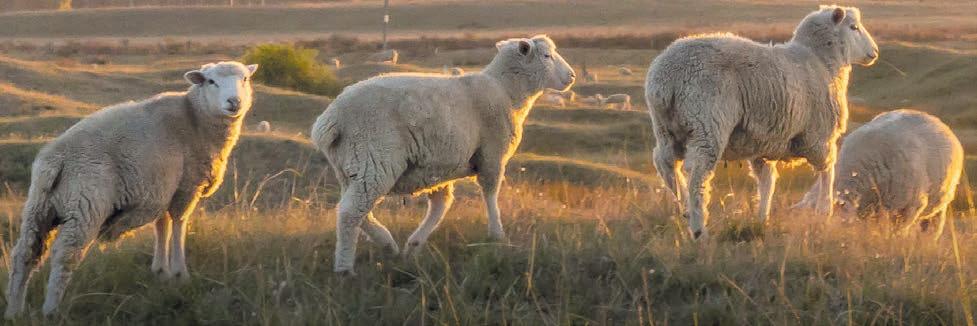
Ruralco back in black after tough few years

Annette Scott NEWS Agribusiness
AFTER two difficult trading years, Ashburton-based farm supplies co-operative Ruralco has recorded a $1.25 million profit for the 2025 financial year.
Ruralco chief executive Tony Aitken said the result is due to a disciplined approach to re-set and refocus the business for longterm sustainability.
“The last 12 months has seen continued efforts to minimise expenses, reduce debt, and put strategies in place to increase sales and profitability, while also increasing close connections with our shareholders, listening to what they need from Ruralco to lower farming input costs.”
Trading profit of $175,000, together with

LOCAL HEROED: Tony Aitken says resetting the company’s strategy to be locally focused has been a positive move for Ruralco.
Carpet merger under spotlight

Hugh Stringleman NEWS Food and fibre
GODFREY Hirst parent company Mohawk has applied to the Commerce Commission for clearance to purchase Bremworth carpet company.
The commission has responded with a statement of preliminary issues in relation to Mohawk’s application.
The principal concern is whether the proposed acquisition would be likely to substantially lessen competition in the relevant market.
Godfrey Hirst submits that the market for floor coverings is much larger than just wool and synthetic carpets and that soft and hard flooring solutions should be considered in the same product market.
“Customers can substitute timber, vinyl, lino, laminate, rugs and other floor coverings instead of carpet,” the commission says.
“Nevertheless, the applicant submits that the real issue facing carpet manufacturers is that carpet sales volumes are declining.”
The commission will consider whether the Godfrey Hirst approach to the market dimension is appropriate or perhaps define narrower markets.
It will also consider what would happen to Godfrey Hirst and Bremworth if the acquisition did not go ahead.
Submissions must be lodged by November 11 and the commission intends to report by December 22, subject to extension if necessary.
accounting adjustments, make up the $1.25m profit.
These accounting adjustments include a $1.155 million gain on the sale of the co-operative’s Rakaia buildings.
“Achieving a trading profit of $175k for the 2025 financial year has been particularly pleasing as it indicates continued shareholder confidence in Ruralco,” Aitken said.
“We exist to deliver choice and real value through service, relationships and savings that matter in Mid Canterbury’s highly competitive farm supplies market.
“We have continued a careful assessment of our cost structures, and made prudent,
and at times difficult, decisions.”
This has included reduced staffing across the business, and the sale of the Rakaia buildings.
Aitken said while Ruralco has divested itself of the bricks and mortar at Rakaia, it is still very committed to the area, negotiating a long-term tenancy arrangement, recognising it plays a vital role in supporting local shareholders.
Debt reduction has also been a strong focus over the past financial year with the business taking a stronger stance on recovering bad debtors and putting processes in place to protect Ruralco from potential bad debt risk.
“Resetting its strategy to be locally focused has been a positive move for the co-operative. Ruralco holds a unique place in Mid Canterbury’s farming landscape.”
Ruralco’s annual report for 2025 has been released ahead of the co-operative’s 62nd annual general meeting to be held on November 18, 2025.
Four candidates have been nominated for two director vacancies on the board with current director Rhea Booker retiring by rotation and seeking re-election, and Mid Canterbury farmers Richard Fitzgerald, Cole Groves and Matthew Paton also up for election.










7,0 0 0+ p e o p le tun e d int l to Yo







When the season turns, the right tools make all the difference.
Thousands of farmers tapped into Dair yNZ’s trusted resources from calving to cropping, repro to pasture planning
Get connected and get it working for your farm today dair ynz.co.nz/get-connected o o ur s e a s o n a o lkit s la st ye ar. e g ot this .




It’s science-backed, farmer-shaped, and funded by your levy
If you ’ re not using it, you ’ re missing out



Dreadlock holiday
hair the day my fences are fixed’

Annette Scott PEOPLE Sheep and beef
DAVE and Binks McCurdy run a diverse farming operation that includes livestock, a guided deer hunting operation and a luxury accommodation lodge on their central Hawke’s Bay property.
Key to their sheep farming has been Lumina Lamb, a programme that provides its suppliers with a premium return over and above commodity prices.
“To be honest if I wasn’t associated with Lumina, I probably wouldn’t be farming sheep now,” Dave said.
The McCurdys run 3500 Headwater ewes as part of their 1000 hectare Rissington property
that also carries 120 Stabiliser cows and a sizeable deer herd, across steep to rolling hills, irrigated flats and gorges – “a bit of everything”.
In 2014 the couple moved north from Southland, where they initially started with the Lumina programme.
“We’ve been in Lumina for 17 years, one year short of the 18-year-long programme. We brought the ewes up with us.”
Why Lumina?
“We got sick of the same old, same old; every year put lambs on the truck, wave goodbye and don’t give a rat’s arse about where they go,” Dave said.
“With Lumina it’s the challenge and satisfaction with the end product. We’ve met so many chefs. In America, Asia and in Australia,
there’s a 15% chance that they’re eating our lamb, and they’re loving it.
“That’s real satisfaction, exciting, and reward for what we put into producing it.”
Producing niche product has its challenges.
“It has to be chicory and red clover for minimum 35 days for finishing lambs.”
The lambs are all smart-tagged and scanned onto the chicory, which is what increases the omegas, the polyunsaturated fatty acids. That goes hand in hand with the intramuscular fat (IMF) – the marbling that enhances the cooking and eating.
“All the lambs are IMF tested so if there’s any outliers, they won’t make the box.”
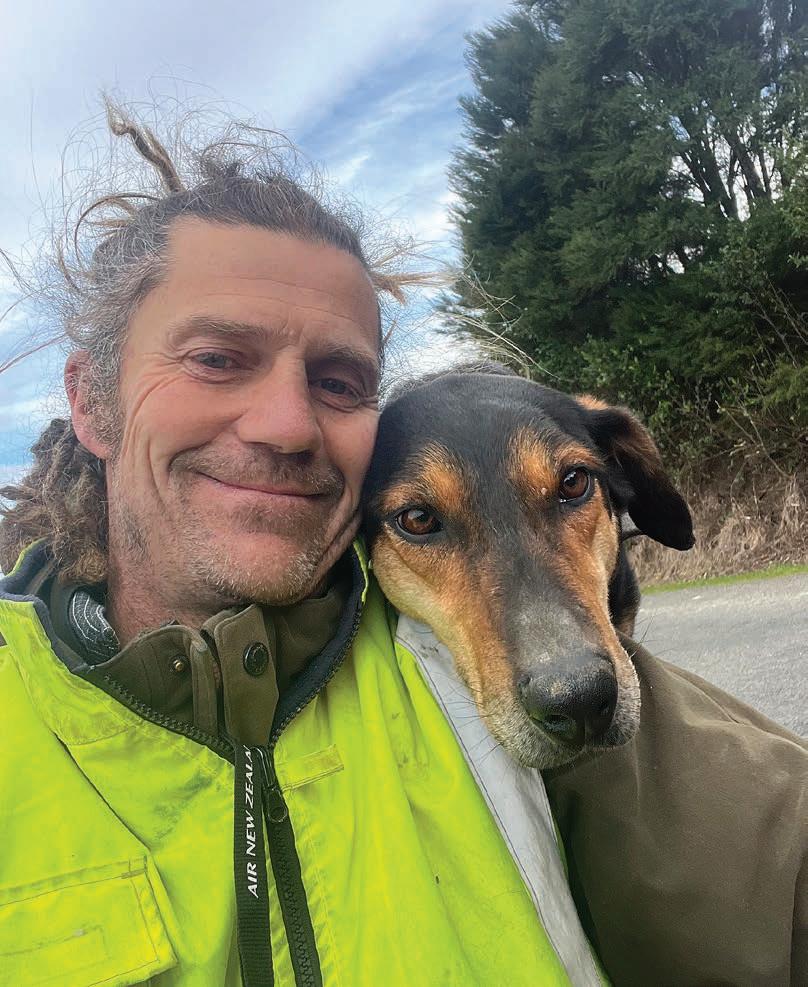
SUPPORT: Key to the McCurdys’ sheep farming has been Lumina Lamb, a programme that provides its suppliers with a premium return over and above commodity prices.

Most of the Lumina product goes to Asia and Singapore, with North America and the United Arab Emirates growing markets.
“Australia has opened up a bit, but there’s not a lot going to Europe or the United Kingdom; that may be a possibility in the future.
“But we’ve sold everything that we can at the moment, so it’s not a big issue.”
While there is a small opening in NZ, it’s not where the money is.
“The money’s overseas, but we have to have some in NZ because when we have the customers coming, we have to have Lumina on the plate for them.”
Dave sees a positive future for NZ lamb.
“If we want to be the best lamb in the world, we have to get it right. We’re in it (Lumina) now, we’re producing what the chefs love, and it’s amazing as farmers to be a part of.
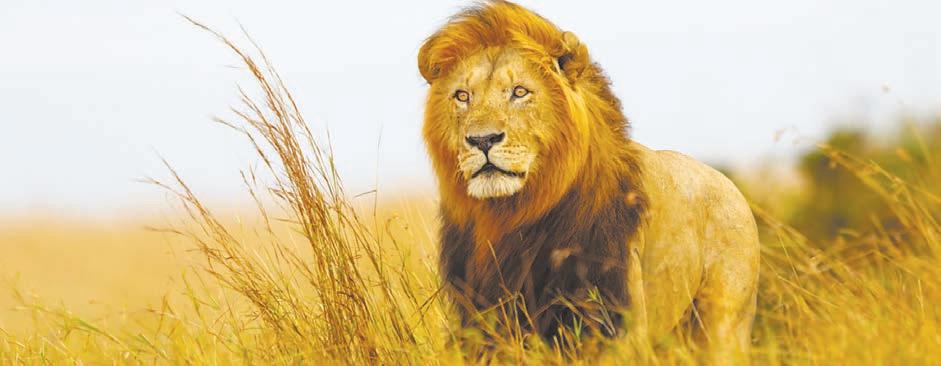
“That’s the satisfaction that makes it worthwhile, and that you sometimes need to get out of bed in the morning.
“It’s a lot more intensive than it was just getting through a lambing in Southland,” Binks said.
“It’s the flavour and how the chefs love working with it, is what we absolutely love.”
There were wild deer on the property when the McCurdys arrived.
“We managed to trap a few and get a bit of breeding programme going to get some decent heads.”
Then, in conjunction with a newly developed glampsite, guided hunting was initiated.
The first hunters were booked for March 14, 2023, but Cyclone Gabrielle hit on February 14.
“It all washed away,” along with 300 of the couple’s prized Lumina lambs.
“The river wiped them out in the valley, now named the Valley of Death.”
The cyclone saw a change of tack as Binks and Dave worked their way through recovery.
In meeting and hosting people who genuinely appreciate outdoor pursuits, the McCurdys found another reason to get out bed.
“We had an old house on the farm so we’ve now done that up and we’re doing hunting packages with people staying at the lodge for weekends, holidays, and we get wedding parties coming in.
“We love farming but we love the lodge and hunting just as much. Foods are a large part of us; we love that too.”
She said the cyclone changed their outlook a bit.
“You don’t think it affects you, at the time you just cope, but a year down the track when you stop


DREADED HAIRCUT: Dave McCurdy, with dog Fizz, vowed to not cut his hair until all of his fences were repaired after Cyclone Gabrielle swept through. That was three years ago.
and think, it did actually have a remarkable impact on us.”
Dave carries a clear reminder that recovery is not complete.
“About day three of the cyclone we were having a beer with some neighbours when one said to me, ‘When are you going to get a haircut?’ It was two inches long.
“I said, ‘Okay, I’ll get it cut when I get all my fences fixed.’ It was 8.5km of fencing. I still have 1km to go and it’s coming up three years.”
That’s why Dave is sporting a thriving head of dreads.
“It started as a bit of joke but now as soon as people see me, they say ‘You still haven’t finished the fencing.’ One day soon I will, and I’ll sell it [his dreads] for charity.”
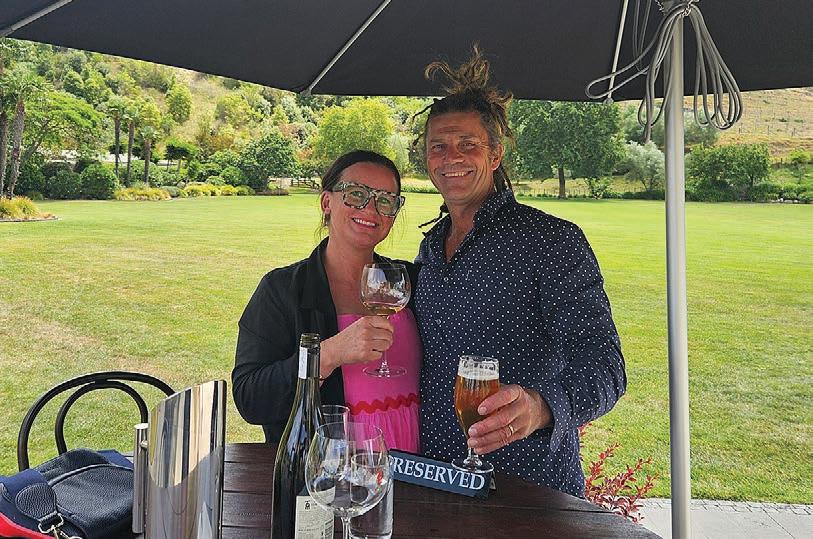

All the lambs are IMF tested so if there’s any outliers, they won’t make the box.
Dave McCurdy Rissington
With Lumina all the way
RENOWNED the world over for its delicate taste, tender texture, and reliable consistency, Lumina Lamb is the product of Headwaters genetics, codified farming systems, rigorous standards, and meticulous processing through Alliance.
The Lumina Lamb programme provides its suppliers with a premium return above commodity prices.
With gross market returns at over $50 per carcase, the product is highly valued by markets and food service channels around the globe.
This year the individual premium return for each lamb from suppling farms will deliver about $24/lamb.
Continued focus on innovation and quality has seen a significant increase in returns this year with projections of up to an additional $5/head per lamb each year over the next five years, Headwaters Lumina chief executive Steve Brown said.
The intention is to innovate using the superb eating quality, investigating international market opportunities.
“Dave and Binks [McCurdy] have been an inaugural part of the programme since its inception and have been integral in the growth and development of Lumina in its growth to global markets.
“Dave has been a longstanding committee member of the Headwaters farmer working group, which provides advice to management for the improvement of farming systems.
“Their passion and enthusiasm for the programme have been invaluable, enabling and working with new farmers to seamlessly enter the system.
“They were the first farm in the North Island and have been foundational in the establishing of our North Island Headwaters community.
“It’s also been great for Dave to be able to travel to some of our international markets to connect with our global chefs and to help us share the passion and commitment of our farmers in the product they create.”
Being able to share first-hand the breeding, feeding and farm management practices is invaluable in helping to position the product and to return the premium to farmers.
You’ve got this.
Dair yNZ delivers tools, science, and advice that helps you make better decisions ever y day
From pasture management to emissions compliance, we ’ re in your corner As a New Zealand dair y farmer, you ’ ve got access to the best and most comprehensive dair y intel – built over generations and backed by Dair yNZ research
Make sure you ’ re getting the value you ’ ve paid for Get connected and get it working for your farm today


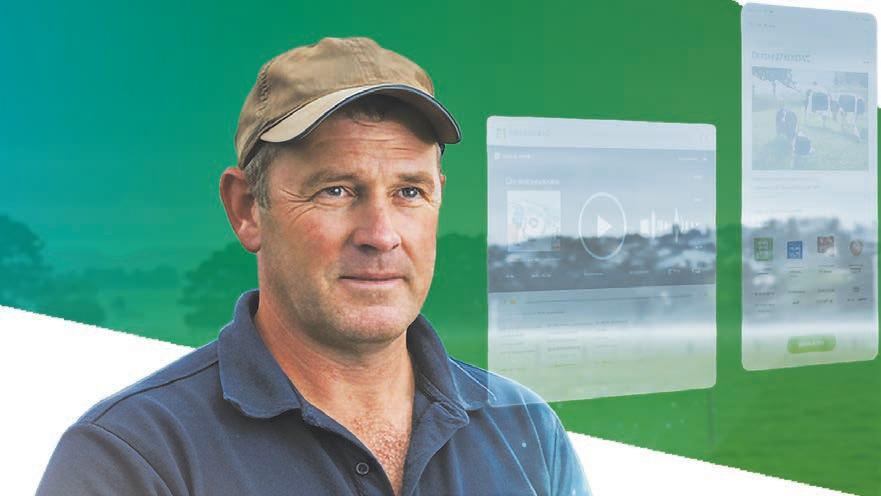




Get connected at dair ynz co nz/get-connected


MOVE: Dave and Binks McCurdy moved north from Southland in 2014, where they initially started with the Lumina programme.
INCOME: The McCurdys have refurbished an old house on the farm into a luxury lodge.
Shifting food trends change UK landscape

THE United Kingdom diet is switching from meat and two vegetables to Mediterranean fare, and the traditional staples of cauliflower and cabbage appear to bearing the brunt of that shift.
Hannah Daley, head of health and sustainable diets at the Institute of Grocery Distribution (IGD), said diets are being influenced by staple Mediterranean fare that includes more tomatoes, olive oil and grains.
There has also been a shift to pasta and convenient meals.
People are also eating less red meat due to the cost and health considerations. Daley said demand for chicken is growing.
“We may not have reached peak chicken yet.”
Yoghurt remains popular due to demand from an increasingly active population.
The IGD is a nonprofit that seeks to improve the UK’s agrifood supply chain by identifying and addressing challenges and trends.
It does that through collaborating with business, policymakers, and thought leaders while also providing insights through research, and foresight.
Daley said another trend in the UK has been greater government regulation on the positioning in store and selling of unhealthy foods.
These include banning the promotion of certain foods before 9am and multiple sales, such as buy one get one free.
Foods classified as unhealthy can constitute 20% of sales for some retailers.
offered, connecting better with the community, offering experiences such as instore dining, reduced packaging and offering prefills and refills.
Matthew Stoughton-Harris, IDG’s head of resilience, said the high cost of living continues to be an issue for UK consumers and is prompting countries to secure their food supply chains.
“In the UK, inflation has been exceptionally high since March 2023 and food has taken the brunt given its share of consumer spend.”
A report by the organisation last month identified the steps needed to create a healthier more sustainable food system.
Those steps included businesses reframing dietary change as a growth opportunity, upskilling staff and using key performance indicators.

differentiation between brands and private labels becomes increasingly blurred in the eyes of shoppers,” the report notes.
Toby Pickard, IGD’s retail futures senior partner, said supermarkets need to reinvent themselves to combat the growth of online orders, which means fewer people are visiting stores.
This could include improved in-store efficiency, improving the experience for shoppers through the type of products
Sales of products should include nutrition data, environmental and health metrics, backed by farmto-fork partnerships with shared reporting and metrics to reduce volatility.
Health and environmental impacts should be considered alongside margins, new technology and nudging consumers towards




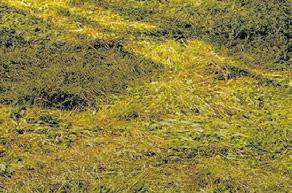
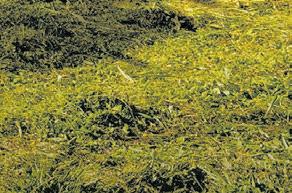


healthier choices through placement, promotions and marketing in stores and on digital channels.
In another report, IGD found that branded products can drive growth, determining that 53% of global consumers are buying more private label products than ever before.
“As these alternatives improve their design and features, the
The prevalence of brand and category switching mean brands must work hard to stand out in a highly fragmented marketplace.
An earlier report noted that despite external challenges and a subdued retail environment, the UK convenience food market grew 1% in the first half of this year. By 2030, the sector, which includes pre-prepared meals, is expected to grow to NZ$130 billion, representing a projected five-year growth rate of 2.7%.
EUROPE’S CHANGING LANDSCAPE
INFLUENCE: Hannah Daley, head of health and sustainable diets at the Institute of Grocery Distribution (IGD), said diets are being influenced by staple Mediterranean fare that includes more tomatoes, olive oil and grains.
Photo: Pexels
Neal Wallace in London MARKETS Food and fibre
We may not have reached peak chicken yet.
Hannah Daley Institute of Grocery Distribution
Farm to feet operation rests on NZ wool

Neal Wallace in Aalborg PEOPLE Food and fibre
THEY were a formidable team.
Nanny Glerups was the creative inspiration and sewer and her late husband Ove the engineer, builder and Gotland sheep breeder.
Their patience and trust in each other brought to life handcrafted Glerups 100% wool felt slippers as they constantly pursued the perfect design and production process for what was then still a hobby.
For nearly 20 years they tinkered part time in a shed on their farm in northern Denmark, while Nanny worked as a physical education teacher and Ove a thatcher and part-time farmer, running a flock of 300 Gotland sheep.
“From the beginning I aways had a focus of not working against the wool but working with the wool,” said Nanny.
She sought to use wool’s known comfort and temperature control qualities, attributes a growing body of customers also wanted, with orders regularly placed for her to make a pair.
Initially she was making only one pair a day, but there was a problem.
Nanny found that the attributes of Gotland wool allowed the fibre to move and eventually fall out of the slipper.
“Gotland wool is very silky smooth so it moves and works its way out of the felt,” Nanny said. “It was necessary for me to find another wool to blend with Gotland wool.”
That fibre needed to provide grip and they initially found that in wool from the United Kingdom, buying one bale at a time as that was all they could afford.
Nanny recalls going to a country fair about that time and getting an order for 200 slippers.
Her production capacity had increased to two a day, with much of the process – compressing the fibres together to make the felt –done by hand.
It would take 100 days to fill the contract.
When Ove reached his early 50s, Nanny said, the physical nature of thatching and the risk of climbing around roofs proved too much. Demand for Glerups slippers was
growing and in 1993 they decided to turn this hobby into a full-time job.
It was still physical work so they contracted a processor to card the wool, but for it to be a viable business, they needed to bring that process in-house.
In 1995 Nanny found a carding machine in the UK, built in 1936, and the couple borrowed the equivalent of $13,500 to buy it.
Affectionately dubbed The Old Lady, it is still operating today.
“The carding machine was very, very good, a big change for us.”
With aching shoulders and back from years of physical activity, Nanny remained active in the business, overseeing production and quality control while Ove used his building skills.
The difficult decision was made in 2005 to shift manufacturing to Romania due to soaring costs in Denmark. A new factory was built.
Production continued to ramp up and the business grew to the point where in 2013 Ove and Nanny’s son Jesper and sales manager Allan Timm bought into the company and took over the day-to-day running.
The head office is still at the Glerups farm in repurposed buildings.
They started hunting for a reliable and consistent supply of wool, which they found on the
EUROPE’S CHANGING LANDSCAPE
other side of the planet, with New Zealand Merino contracted to supply the wool from ZQ certified growers.
Timm said it matters that their NZ suppliers have the same family values and relationship-based approach as Glerups.
“Our DNA is ‘two feet in the soil’. We remember where we have come from and what the company was founded on,” he told Farmers Weekly.
Respect for people, animals and nature is also part of their DNA, rooted in the approach of Nanny and Ove.
Timm said they operate a cradleto-cradle business where nothing is wasted and for which they have earned international certification.
“The certification is proof of what we do, it backs up the facts.”
In the early days boxes were reused and nowadays any that are damaged or broken are shredded to create packaging.
Nanny is still involved, experimenting with new environmentally friendly dye.
Today the company employs about 100 people, including 65 in Romania and the rest in Denmark.


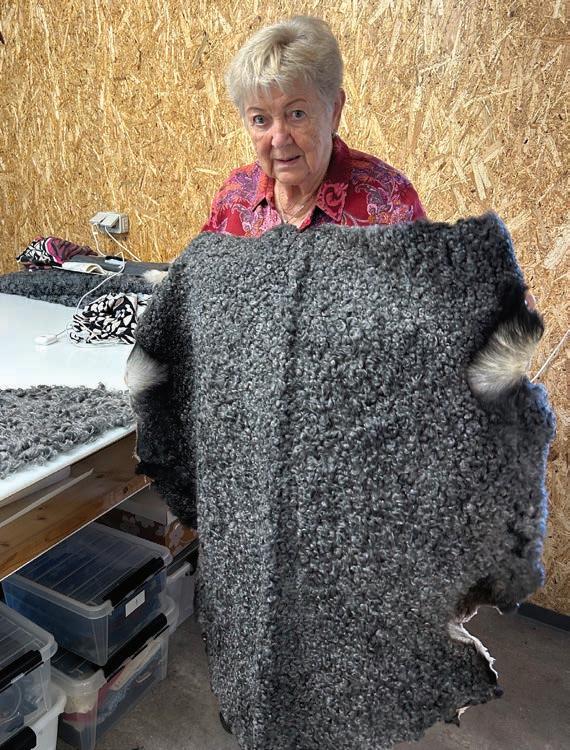
The slippers are sold from Japan and Europe to New Zealand, Canada and the United States, as well as online.
Timm said they are in no hurry.
“After 30 years we are still only scratching the surface,” he said.
“We’re not in a hurry, but we are ambitious.”
Marketing manager Christina Flindt said they have agents and distributors across Canada, Japan, the United Kingdom, Scandinavia, and Europe, with a sales focus
on retail, e-commerce and marketplaces.
When the temperature drops the orders start arriving.
• Wallace’s Meeting the Market tour has been made possible with grants from Fonterra, Silver Fern Farms, Rabobank, Zespri, Alliance Group, Meat Industry Association, Wools of NZ, Beef + Lamb NZ, NZ Merino, the European Union and Gallagher.
https://www.farmersweekly.co.nz/ meeting-the-market/
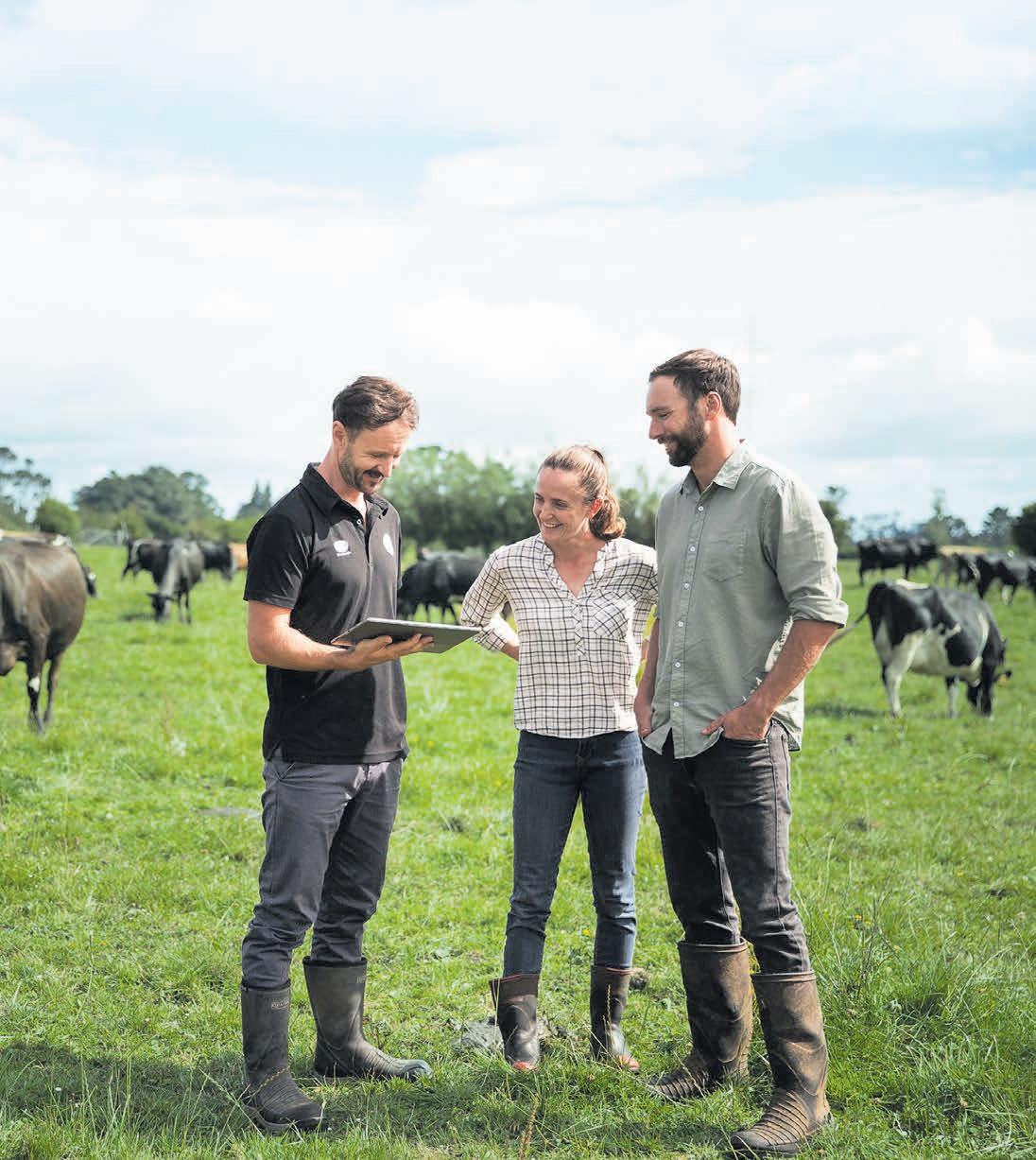
NO RUSH: Glerups marketing manager Christina Flindt with co-owner Allan Timm, who says that, after 30 years, ‘we are still only scratching the surface. We’re not in a hurry, but we are ambitious.’
FOUNDERS: Ove Glerups and Nanny, whose hobby turned into a global business.
FIRST STEPS: Nanny Glerups, matriarch of the woollen slipper company, began by making one pair a day of her celebrated footwear.

Served in only the finest establishments...

Neal Wallace in Europe MARKETS
Food and fibre
ROWING numbers
Gof Europe’s rich and famous are eating Lumina Lamb from New Zealand.
Alliance Group has recently secured contracts for its specially bred, chicory-finished Luminabranded lamb with two companies that supply Michelin star and finedining restaurants, super yachts and events such as the Cannes Film Festival and Formula One Racing.
Reach Food Group supplies about 1000 markets in the United Kingdom, France, Spain, Greece, the United Arab Emirates and Saudi Arabia, and Selecta 2500 restaurants throughout Italy, Slovenia and Croatia.
Reach Food Group was founded in 2018, and Vennessa Tsui, the company’s commercial director, said it supplies caviar, pork, tuna, lobster, shrimp, Wagyu beef and now Lumina Lamb to discerning customers.
She said those markets require consistently high-quality, uniform-sized product, which Tsui said Lumina Lamb offers.

The clientele frequent these finedining establishments in different cities and expect to have the same quality produce every time.
“We find it is the same group of clientele who like to eat out and travel,” said Tsui.
Given those expectations Tsui and procurement manager Mary Curran visited New Zealand to ensure the supply chain met their exacting standards. They said they were taken by the passion and pride of NZ farmers.
“They care and they won’t put just anything into the market which is why we have such consistency,” said Tsui.
Curran, who has had a career in the UK meat industry, said markets require dependable supplies of consistent quality lamb, something Reach can now provide through this Lumina contract.
“Lumina is always available and it is consistent,” she said.
Tsui said Reach tends to follow its clients, or what they call super
brands, and said there is still opportunity in countries such as France and Dubai.
Guido Bruzzo was initially a farmer before seeing an opportunity to supply meat to local fine-dining restaurants. He established Selecta in 1989.
He started with Scottish beef and lamb but had to look for new suppliers following the outbreak of bovine spongiform encephalopathy.
Bruzzo started working with Alliance in the 1990s seeking specialist lamb cuts and now supplies Lumina Lamb to 2500 of the finest restaurants throughout Italy, Slovenia and Croatia.
Many of his customers are Michelin star and high-end restaurants that require a specialist product.
He said that is provided by the chicory-finished Lumina Lamb, which is enhanced by attributes of being from sustainable, free-range production systems with high animal welfare standards.
“In the meat sector, Lumina was something different.
“Our clients tasted the product and like it because of its unique selection.”
Helen Scott, Alliance’s director for the UK and Europe, said the chefs love the low melting point
of its fat, which gives off a mild aroma and adds to its tenderness.
Based in Bellona, Bruzzo said Lumina Lamb will feature on the menus of many restaurants during the 2027 sailing of the America’s Cup in Naples.
Bruzzo employs 220 staff, of whom 120 are in sales, selling about 2600 different items. Meat makes up 28% of what it supplies and fish makes up 30%.
The intricacies of the meals served by his clients can require 15 to 20 ingredients.
Selecta supplies meat, seafood, cheese, patisserie, vegetables, garden produce, seasoning, herbs, spices, rise, cereals and pulses.
“Good food is a very important component of a good life,” he said.
• Wallace’s Meeting the Market tour has been made possible with grants from Fonterra, Silver Fern Farms, Rabobank, Zespri, Alliance Group, Meat Industry Association, Wools of NZ, Beef + Lamb NZ, NZ Merino, the European Union and Gallagher.
https://www.farmersweekly.co.nz/ meeting-the-market/
Meatworks business picks up for Scott Tech

Hugh Stringleman TECHNOLOGY Production
LISTED meat processing auto-mation company Scott Technology nearly doubled net profit after tax to $14.2 million in the 2025 financial year to August 31.
Group revenue was steady at $275m and higher margin contracts in the second half produced earnings before interest and tax of $31.5m, up 19%.
The directors have declared a final dividend of 5c unimputed and the full-year dividend was 8c a share.
“Over the coming year, we expect
revenue growth and continued earnings leverage,” the company said in its results announcement.
“However, we remain cautious with the macro volatility that persists and any impact this may have on customers’ investment plans over the next 12 months.”
Scott said its meatworks installations picked up after a tough period, led by a lamb primal cutting plant for JBS in Victoria, another for Dawn Meats in the UK and poultry plants for Costco and Maple Leaf in North America.
Scott has a strategy to increase revenue by 14% annually over the next five years to reach $530m.
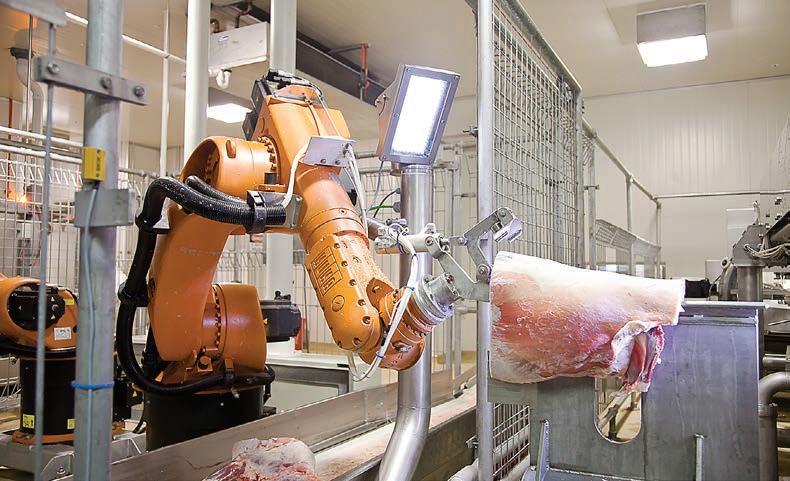
t
in Victoria.

Cydec tin® Oral is the original moxidec tin drench trusted by New Zealand farmers for decades . Delivering 35 days protec tion against B arbers Pole and 21 days against Teladorsagia circumcinc ta , it s persistent ac tivit y helps reduce reinfec tion and suppor t s flock produc tivit ymaking Cydec tin Oral a proven per former wh en worm challenge is high Consider Cydectin Oral as par t of your strategic worm control programme Learn more at ChangeItUp.nz

INTEREST: Scott Technology says its meatworks installations have picked up after a tough period, led by a lamb primal cutting plant for JBS
TRAVELS WELL: Reach Food Group commercial director Vennessa Tsui says wealthy clientele frequent fine-dining establishments in different cities and expect to have the same quality produce every time.
Scorching Hot Saw final nets Jordan gold
NEW Zealand’s top axeman, Jack Jordan, has won the Stihl Timbersports World Championship individual event for the first time.
Competing in Milan, Italy, Jordan went one better than his frustratingly close second-place finish at last year’s event.
In the 12-strong field, Jordan was jostling for the top spot with Australian Brayden Meyer right up until the last of six disciplines, the volatile Hot Saw (superpowered chainsaw).
It was a Hot Saw hiccough that cost Jordan the title last year –but this time, under immense pressure, he calmed his nerves and the high-powered machine to perform a personal best time of 6.30 seconds on the saw and win his first individual world championship crown.
“It was tough all day – a dog fight all day. But I knew it was going to be. And leading up to this competition I didn’t train too much on the chopping events, I just focused on my weaker events and they were the three events that I won today, so really happy that the targeted training paid off and yeah, came away with the gold!” Jordan said.
It was the 28 year-old King Country farmer’s third appearance at an individual World Championship – the more traditional, long-form format across six different woodchopping and sawing disciplines.
Jordan has already won the faster-format World Trophy competition (a knockout over four disciplines) three consecutive times.
Jordan joins the sports


illustrious company of Jason Wynyard and David Bolstad as the only other New Zealander to win the coveted World Championship individual title.
Jordan finished the competition just four points ahead of Meyer with Poland’s Szymon Groenwald third.
Jordan earned the right to be the sole New Zealand
representative in the individual competition at these World Championships after he topped a 10-strong field at the NZ National Timbersports finals in March this year.
The New Zealand team finished just out of the medals in fourth place in a 15- strong field at the same event a day before Jordan’s individual competition.

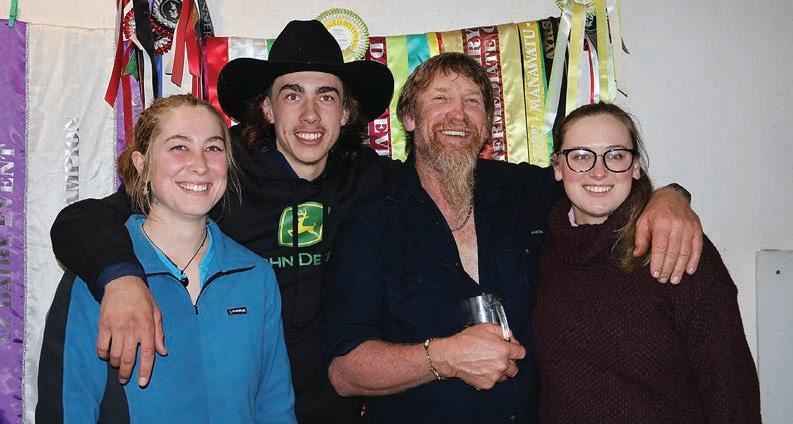
Carrfields rallies to help Steiner son

Gerhard Uys PEOPLE Community
THE Carrfields team has raised more than $160,000 to help out a friend and longtime client whose son was injured in a car accident in Canada.
Livestock marketing assistant and administrator for Carrfields Jacoba Gread told Farmers Weekly when they heard 19-year-old Quinn Steiner, son of Ayrshire NZ president Vince Steiner, was seriously injured in a car accident in Canada in September, and did not have medical insurance, they held a donation-based nonprofit auction.
Quinn, who had been working in Canada on grain farms, was out for a night with friends and made the unfortunate decision to get into a stranger’s car.
The driver crashed the car, and Quinn sustained serious injuries to his neck and back.
He had to have his C2 and C4 vertebrae in his neck and the T1-T6 in the middle of his back fused, and has a long road to recovery ahead.
Gread said with medical costs upwards of $100,000 and an assisted trip home needed for
Quinn, Carrfields jumped at the opportunity to help.
The Steiner family are the type of people who will help anyone who needs help, so the Carrfields team wanted to help them, she said.
The family had planned to sell 10 of their calves to raise money, but the Carrfields team asked for donations for a donation-based nonprofit auction instead.
Gread said they were overwhelmed by the response. People donated dairy cattle, embryos, semen straws and goods and services. One straw sold for around $2500, with one live animal selling for over $8000, she said.
Virtual saleyard bidr waived its auction fee so all money earned could go to the Steiners.
Gread said it took five days from when they decided to run the auction until the last hammer fell and they had 161k secured to help the Steiners.
In the end $161,305 was raised and donated to the Steiners, with 501 people watching the sale, 287 registered buyers, and 157 different people bidding throughout the night.
Quinn has a long road to recovery ahead, but is home safe.

Staff reporter PEOPLE Skills
HOT PROPERTY: Jack Jordan produced a time of 6.30 seconds on the Hot Saw to win his first individual world championship crown.
SPOILS: Jack Jordan after winning the Stihl Timbersports World Championship.
INJURIES: The Steiner family, from left: Gabby Steiner, Quinn Steiner, Vince Steiner and Imogen Steiner. Quinn is back home and recovering from serious spinal injuries sustained in a car accident in Canada.




































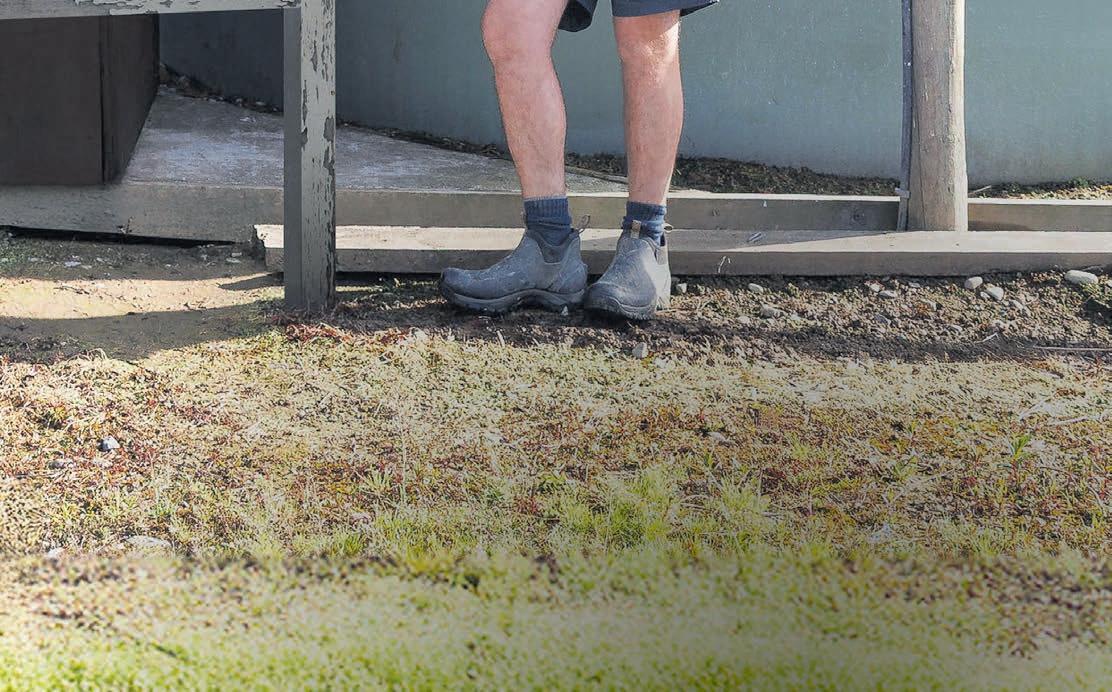
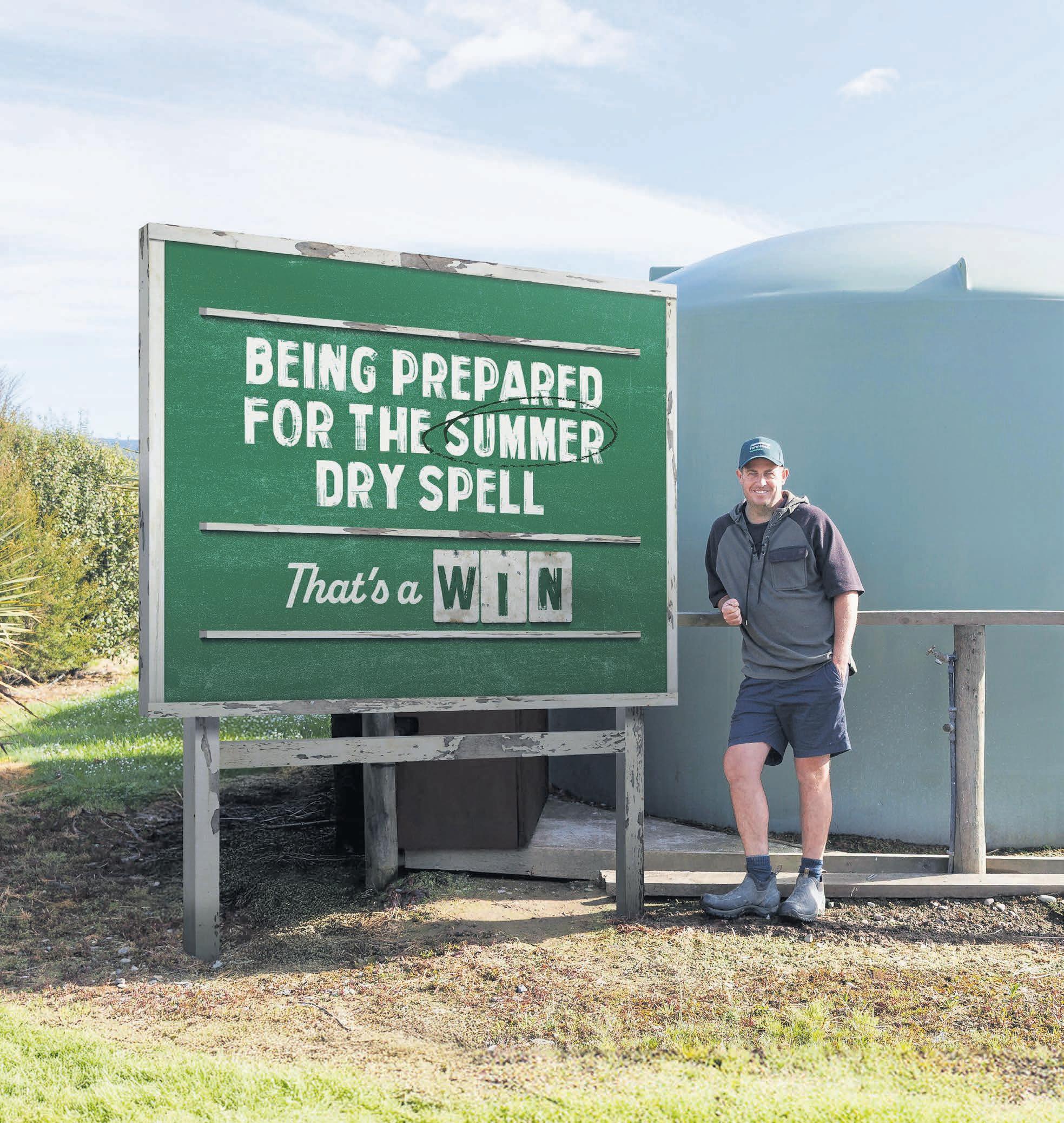


























From the Editor
A particularly testing spring

Craig Page Deputy editor
HOW many times have we been told that spring weather is notoriously unsettled?
One day we’re basking in mid 20degC temperatures, the next it’s rain, frost, or even snow.
This year has been no different. But it is hard not to feel sympathy for those farmers who have been left battered and bruised by the most recent spring weather events.
On Thursday October 23, gale force winds smashed through parts of the South Island, leaving a trail of destruction.
Trees snapped like matchsticks and decades-old shelter belts had their roots peeled from the ground as they toppled into paddocks, flattening fences. Roofs were lifted, sheds came crashing to the ground and power poles collapsed under the pressure. State or local emergencies were declared for Canterbury and the Southland Region.
LAST WEEK’S POLL RESULT
A week after the event, thousands of properties in Otago and Southland remained without electricity as repair crews worked around the clock to identify the issues and try to rectify them.
Then, just as things began to calm down, along came the snow. It hampered attempts to restore power in some areas and left latelambing farmers nervous about potential stock losses.
As one Southland farmer said, “It’s dismal down here, just heartbreaking. Where we will end up, who knows, it’s one disaster after another at the moment.”
Dairy farmers in the south have been hardest hit. As of late last week more than 100 farms remained without electricity. It has hampered the ability to carry out their primary role, milk their cows.
But as always happens in times of need, rural communities have rallied around each other.
Generators, which were in short supply, were shipped in and shared among farmers to ensure milking could be done at multiple farms.
The Rural Support Trust also kicked into action, with a particular focus on farmer welfare.
Rural Support Trust Southland chair Simon Hopcroft said after a week of no electricity, fatigue – both mental and physical – begins to take hold.
“There was a bit of adrenaline initially
More than 78% of voters do not believe farmers are currently being well served by their business leadership.
“Farming business leadership is focused on short-term financial wins, which means they are incentivised to pander to large farming conglomerates. Farming families are being squeezed out and the future is looking increasingly dire for us,” said one voter.
Another questioned the industry leadership when New Zealand agricultural companies need to sell to foreign investors just to keep afloat, “even though we claim to have the best pastures/ techniques/ know-how, and given that foreign investors somehow can unlock greater value in these companies from afar than local managers can.”
One voter suggested “good farmers are not always good business leaders”.
Of the 21.2% who believed farmers are well served by their business leaders, no one offered a comment as to why.
and now it’s fatigue, especially for those farms looking to get electricity back on and that could be a while yet.”
One positive is that there were no serious injuries or loss of life from the weather event. The concern now is that with fatigue comes increased risk.
After properties are damaged there is a tendency to want – or feel a need – to get repairs done straight away.
It is worth taking a couple of days to gather your thoughts, and some sleep, before taking on the big jobs.
Chainsaws are hauled from sheds and heavy machinery called upon to remove fallen trees and debris. But that can be a recipe for disaster if you are not mentally prepared for the task.
It is worth taking a couple of days to gather your thoughts, and some sleep, before taking on the big jobs.
There will be plenty of time to reflect on the weather event but one thing it has highlighted is how reliant we are on electricity. How prepared are we to manage without it for a lengthy period?
Perhaps having a generator gathering dust in the back of a shed isn’t a bad idea after all.
Last week’s question: Are farmers well served by their business leadership?
Letters of the week A resource to be managed
Tony Orman Marlborough
I FOUND much to agree with in Laurie Collins’ letter “Extermination is poor policy”, (September 15).
His arguments were sensible and logical. His and scientists’ contention that deer browsing is “not dissimilar to moa browsing” is very valid.
As Mr Collins said, “Would moa be regarded as a pest?”
Eminent New Zealand ecologist, the late Dr Graeme Caughley, estimated the several moa species probably numbered several million. On a recent YouTube, Remembering Moa, Quinn Berentson, author of the outstanding book Moa, estimated the several moa species that inhabited areas from lowlands to alpine tops numbered 3.5 million.
In 2001 Landcare Research estimated NZ’s wild deer population at 250,000. Perhaps allow for a subsequent increase to say 300,000. Take Dr Caughley’s assessment of moa at 6 million and moa exerted 20 times the browsing impact of today’s wild deer. Berentson’s figure implies about 10 times more browsing pressure by moa.
Yet agencies and some people still cling to the ideology conceived at the 1930 Deer Menace Conference masterminded by an amateur botanist, Leonard Cockayne, who Dr Caughley described in his book The Deer Wars as “passionately hating deer – when it came to deer, Cockayne could not think straight”.
Under moa and over a period of 60 million years, NZ’s vegetation evolved defence mechanisms to counter browsing such as thorns (such as matagouri, toxins (tutu), bitterness (horpito) and divaricating structure (muehlenbeckia). All browsing does is alter the forest composition, with species palatable to moa and/or deer less in number and unpalatable species more. It’s nature’s way of regulating numbers.
In my book About Deer and Deerstalking (2002), I suggest the words “pest” and “control” should be replaced by “resource” and “management” respectively. “Replace ‘kill’ with ‘harvest’.”
Well put, Laurie Collins.

Send your letter to the Editor at Farmers Weekly P.0. Box 529, Feilding or email us at farmers.weekly@agrihq.co.nz
This week’s poll question (see page 1):
What should Fonterra farmers prioritise when the Lactalis payout arrives?
•
Polarised paddocks: turning down the heat
Eating the elephant
the Elephant Eaters hand the pen to a person who thinks a lot about the state of healthy debate in rural New Zealand.
YOU know the smell of a freshly opened silage stack – you can sense it before you see it.
Manipulation has a smell too; you can tell when something’s off. The tone shifts from problemsolving to blame, the story flattens complexity into good guys and villains, and you feel angry and strangely certain – no need to check the facts.
That’s the moment to pause and ask: Who benefits if I believe this version? It’s rarely the neighbour, or your kids and their future.
Weaponising, sensationalising, demonising, catastrophising – these are the moves of a playbook that’s crept into conversations about farming and the environment. Each one turns difference into division.
They are moves designed to generate heat instead of illumination, more outrage than understanding, more certainty than curiosity. The meaningful, respectful conversations we dearly need to have are steadily being hijacked, and the trust our communities depend on is quietly seeping away.
It starts with a trigger – a policy, a tweet, a headline. Then comes the emotional spike: anger, fear, betrayal. The story is shared, commented on, tagged among friends. A tribe forms. Soon everyone’s exhausted, cynical, and none the wiser. That’s the outrage cycle – and it’s costing us focus, friendships and the bandwidth to fix real problems.
Outrage can’t be avoided entirely – it’s a natural response when something valued feels threatened. But we can decide what to do with that energy – spiral down into division or spiral up into curiosity and connection.
There are four simple steps that help turn outrage into curiosity – a kind of farmgate toolkit for calmer conversations.
The first move is simple. Pause. Before firing off that post or forwarding that link, take a breath long enough to notice what’s happening in your own head. That tiny time-gap is powerful – it’s where reaction turns into reflection.
Then, ask better questions.
Curiosity is the antidote to outrage. Instead of “Who’s to blame?” try “What else could be true?” or “Where did this story come from?” Often the outrage hook hides a more complex reality – and a chance to learn something useful.
Next, connect before you correct. Most arguments don’t need more facts; they need more trust. When a neighbour vents about regulation, resist the urge to fact-check them into silence. Ask what’s worrying them most. You might discover shared ground – fear of uncertainty, frustration with process, concern for future generations. That’s the soil where real solutions grow.
That’s not kumbaya – it’s good governance. It’s how small communities keep working long after the shouting stops elsewhere.
And finally, act – don’t amplify. The algorithm rewards anger. Every share and comment teaches the machine what to feed next. Starve it instead. Put that energy into something tangible – write a respectful submission, attend a catchment meeting, mentor a younger farmer. Constructive action cools the temperature faster than any online argument. Curiosity doesn’t mean

weakness; it’s the discipline of strong minds. Staying curious keeps people adaptive – and adaptability is one of New Zealand farming’s super-powers. Curiosity sustains learning, listening, and leading rather than reacting. It also rebuilds the one resource every community needs but can’t buy: trust. Picture what calm could look like. A council hearing where submitters thank one another for good points.
A catchment group that starts each meeting by naming what everyone agrees on before tackling the tough stuff. That’s not kumbaya – it’s good governance. It’s how small communities keep working long after the shouting stops elsewhere.
And if any sector can lead this shift, it’s agriculture. Rural life already runs on cycles – of
weather, markets and people. Panic never helps a calving, and steady hands fix more problems than loud voices. Turning down the heat isn’t un-Kiwi; it’s classic Kiwi – practical, composed, quietly effective.
Outrage will keep knocking at the gate. It’s cheap, addictive and everywhere. But curiosity is the better investment. Each time someone chooses to ask rather than accuse, to listen rather than label, they reclaim a bit of the middle ground that’s been slipping away.
So, here’s a small challenge for the week ahead. Notice one moment of outrage – on the radio, online, or around the table – and treat it as a chance to practise curiosity. You might be surprised where it leads. Because when curiosity walks in, outrage quietly slips out the backdoor.
Reading the signs for sheep and beef
The braided trail

Keith
Woodford MD at AgriFood Systems
kbwoodford@gmail.com
THIS year has been remarkable for sheep and beef farms, with record prices for both lamb meat and beef. Farmgate prices are up in the order of 30% since 2024 and in some situations even more. It is a sweet spot that won’t be maintained.
I know of no one who foretold the current sweet spot.
One – but only one – of the causes is the decline in the New Zealand dollar. Currency rates are volatile and trends depend very much on the starting point. By my reckoning, the New Zealand dollar
has dropped on average around 5% over the past year relative to the United States dollar.
Depreciation against the euro has been about 9% over this time.
The Chinese yuan has jumped around over the last year relative to the New Zealand dollar, but over a two-year period the trend is that the New Zealand dollar is down about 5%.
These are the three most important currencies for our red meat industries. By my reckoning, the combined effect at farm gate on sheep and beef meat prices has been between 5% and 10% higher returns.
That leaves a lot to be explained.
In the case of beef, a lot of the upsurge in farmgate prices relates to the US beef cycle. This cycle has been around for some 50 years or more. Each cycle typically takes eight to 10 years.
When beef prices are on an upswing in the US, American graziers retain their heifer cows and less female stock goes to market. This pushes beef prices even higher.
Eventually the market reacts to the high prices and consumer demand declines. This causes prices to drop.
Graziers then decrease their herd sizes, which puts more beef onto the market. This accentuates the
decline in beef prices.
Right now, US beef production is at a low point and so prices are high. In response, graziers are keeping back all their female young stock for breeding. This means even less US beef is coming to market than would otherwise be the case. It will be several years before the beef from the progeny of the retained heifers reaches the market.
All of this means US beef prices should, other things being equal, stay high for several years.
This is good news for New Zealand given that the US is New Zealand’s most important beef market. Of course, all other things are not equal, and that includes US President Donald Trump’s 15% tariff on all products sourced from New Zealand. But so far, it seems that most of this tariff is getting paid by the importers, without much of it being transferred back to the New Zealand price. In the case of lamb there is no equivalent cycle. This is largely because of the shorter biological cycle of sheep compared to beef.
However, there has been a recent decline in European sheepmeat production linked to environmental regulations. Only time will tell how that plays out.
Whereas European markets are not important for New Zealand
beef, they are very important for lamb.
My own judgment is that sheepmeat prices are not sustainable even in the short term.
For example, the chief purchase officer in my family tells me that, despite lamb being my favourite meat, she is purposely buying less lamb because of the cost.
My judgment is that the price of lamb back to farmers will drop significantly as soon as the main killing season starts in a matter of a few weeks.
Accordingly, my judgment is that the price of lamb back to farmers will drop significantly as soon as the main killing season starts in a matter of a few weeks. In fact, it always does drop come December.
But this year it would not surprise me if it drops even more than the normal seasonal decline.
The other unknown is how the meat processing companies will operate this year.
What we know for sure is that these companies have spare processing capacity. We also know that using that capacity is fundamental to generating a profit.
In addition, we know that
competition for livestock has contributed in a big way to company losses in recent years, particularly in relation to lamb.
The meat processing industry is notoriously challenging, particularly for lamb and mutton. Whereas consumer demand occurs throughout the year, processing is highly seasonal.
This creates a big requirement for seasonal capital. Even more important is that the processors have to pay farmers before they know what their market returns will be. A slide in market prices can be disastrous.
For the past 10 years I have been watching closely to see how the processing game in New Zealand would play out, with the four big companies having very different ownership structures.
Alliance, as the only pure cooperative, has now secured its short and medium-term future by aligning with the Irish company Dawn Meats, albeit in the process losing its pure co-operative structure. The alternative was almost certainly receivership. However, at an industry level, the game of competition and survival has further to play out.

WHO BENEFITS: There’s more heat than light in conversations run according to the polarisation playbook with their weaponising, sensationalising, demonising and catastrophising, says Phil Morrison.
Photo: Pexels
Phil Morrison
Environment Southland councillor
Morrison left the NZ Army as a lieutenant colonel for a spell in tertiary education and local governance
In the second article in a twopart series,
The fiscal cliff is coming.
Revenue-wise, the spring months are traditionally good for rural publishing.
You can see it in your Farmers Weekly now - 64 pages-strong, with good advertising support.
But we publish every week of every month all year, and we’re not immune to the global shift in marketing spend to the insanely powerful, overseas-owned digital giants. That money leaves the country and they don’t employ New Zealanders or pay tax here.
All we ask is that you find $10/month to ensure Farmers Weekly (in print and online) remains strong and available to every farmer in the country 12 months of the year.
You do your bit, and we’ll do ours: Every day of every week, without fail, we continue to deliver the comprehensive bundle of news, opinion, on farm stories, sector coverage, market insights, real estate, marketplace advertising, livestock reports and weather you can rely on - not bad from a small-town NZ family-owned enterprise!
Thank you to all our 1184 Voluntary Subscribers so far. We need another 6816 good people like you.
As new Voluntary Subscriber Neil told us this week: “We are interested in the good service you give and not worried about peanuts which are tax deductible anyway.”
With your support, the Farmers Weekly news and insights service has a long and bright future.
No matter where you work in the Food & Fibre Sector supply chain, we need your Voluntary Subscription to continue this service you rely on.
Details below, or feel free to contact me directly at any time.

Dean Williamson – Publisher dean.williamson@agrihq.co.nz 027 323 9407
BECOME A VOLUNTARY SUBSCRIBER
Start your voluntary annual subscription today. $120 for 12 months. This is a voluntary subscription for you, a rural letterbox-holder already receiving Farmers Weekly every week, free, and for those who read us online.
Choose from the following three options:
Scan the QR code or go to www.farmersweekly.co.nz/donate


Email your name, postal address and phone number to: voluntarysub@farmersweekly.co.nz and we’ll send you an invoice Call us on 0800 85 25 80
Note: A GST receipt will be provided for all voluntary subscriptions.

Sector Focus
Mark of local quality adorns NZ grains

Annette Scott NEWS Arable
INTEREST in the New Zealand Grown Grains
Mark is rising as it aims to strengthen consumer uptake of locally sourced food and reduce reliance on imported grain.
Foundation for Arable Research (FAR) general manager of business operations Ivan Lawrie said the new logo, launched in early October, will make it easier for consumers to identify and source products made from high-quality NZ-grown grain.
“Most consumers are unaware that when they buy bread from the supermarket that it is more likely to be made from imported rather than domestically grown milling wheat,” Lawrie said.
Arable growers hope to tap into a strengthening desire by consumers for locally sourced food, and reduce reliance on imported product.
The grains certification trademark is the initiative of

growers via their levy organisation FAR, in collaboration with Eat NZ.
Lawrie said interest is already high among bakers as well as makers of breakfast cereal and plant-based milk.
The trademark applies not only to milling wheat, but other grains
such as oats and barley, as well as seeds.
At least 75% of the bread sold in NZ is made from imported grain, because it is cheaper for North Island flour mills to import grain from Australia than freight it from Canterbury, where it is
predominantly grown.
As wheat represents only about 40 cents of the cost in a standard loaf of bread, greater use of domestically grown grain is expected to have a marginal impact on consumer prices, Lawrie said.
“To be sustainable for growers, the price of wheat needs to rise by 10-15%. This is just on the value of the wheat component, not the whole cost of producing a loaf.
“There is space in the market for every type of loaf, from $1 white bread to a $7 sourdough.”
Products using the Grain Mark can include up to 20% of imported or blended ingredients.
Mid Canterbury cropping farmer Brian Leadley said it is disappointing to be competing with imported milling wheat but also challenging, with the expectation that the Grain Mark will revitalise the arable sector.
“We are proud of the milling wheat we produce and want to see more of it used,” Leadley said.
Group general manager of Timaru-based Farmers Mill Phil

Jackson said the mill processes only South Island-grown wheat.
“The biggest challenge is freight and getting product from the South Island to the North Island.
“The Grain Mark is significant as it is an opportunity for us to get people to be aware of what we do in NZ.”
Large-scale catering group Compass is now including the Grain Mark in its tender documents.
Andrew Fearnside, owner of Wild Wheat, an Auckland bakery producing artisan, specialty breads, is proud to be one of the first to sign up and use the logo.
“The provenance of our flour is a good story and we are a shop window for the growers,” Fearnside said.
Arable sector gets its own voluntary code of conduct

Annette Scott NEWS Arable
A NEW industry code of conduct aims to bring clarity to New Zealand’s arable sector.
Developed by the Arable Food Industry Council (AFIC), the voluntary code will give the arable sector a clearer, more consistent way of doing business, while helping to strengthen relationships and confidence across the industry.
Effective from January 1, 2026, the code sets out agreed standards
for how growers, merchants, and processors work together, covering everything from crop insurance to storage arrangements.
AFIC chair Brian Leadley said the council has been working to reach agreed expectations about conduct, with topics that affect all parts of the industry.
“The code is a positive and practical step forward and I’m excited about the improvements to come,” he said.
AFIC is an industry council that is gaining recognition as a body that can speak for the arable industry.
The council has broad membership from 11 leading industry organisations representing interests across the arable sector – from farmers to seed companies and merchants, suppliers of chemical inputs for arable production, breeders and researchers, and end users such as feed manufacturers, flour millers and industry auditors.
Leadley said developing the code was a collaborative process that reflected the sector’s shared commitment to continuous improvement while capturing best practice.
“With AFIC having such a broad coverage across all aspects of the arable industry, all participants in the industry can have confidence that the code of conduct is truly representative of industry best practice and expectations.
“There were some good discussions along the way, and that’s a sign of a healthy industry.
“Everyone wanted a document that was practical, balanced and future focused.”
The code also highlights the roles that seed schemes, such as the seed certification system and
the seed crop isolation distance play in ensuring that the high quality of seeds the industry produces is maintained.
“By putting those expectations into writing, we’re creating a more consistent framework that supports fairness and transparency for everyone involved.”
It will be an especially important support document for any newcomers to the arable industry.
The code is voluntary, with the Commerce Commission having reviewed it to ensure it aligns with competition law and supports fair practice.

EARLY ADOPTER: The owner of Auckland artisan bakery Wild Wheat, Andrew Fearnside, is one of the first to sign up to use the NZ Grown Grains Mark.
A r able’s big day out at Cher t sey
What really drives wheat yield and are growers missing out on the crop’s full potential?
This is one of the topics under discussion at the Foundation for Arable Research’s annual big day out at its Cher tsey research site near Ashbur ton on Wednesday November 26
A must-do on the agricultural calendar for arable farmers, ARIA 2025 (Arable Research in Action) promises plent y of inspiring talks and practical takehome messages
Leading the discussion on wheat cultivar per fo rmance is FAR researcher Jacqueline Straathof and Lincoln Universit y senior lecturer Mariana Andreucci They will present combined insights from cultivar per formance trials and crop physiology to uncover what drives yield under New Zealand conditions and if there are realistic oppor tunities to lif t productivit y
In another related topic, FAR research leader, Jo Drummond in conjunction with industr y, will discuss growing milling wheat crops that meet both miller s’ and bakers’ needs Growing milling wheat is as much an ar t as it is a science, and we know we can produce a high-qualit y product What can we learn to suppor t the process from silo to slice?
Two overseas speakers, both regular visitors to New Zealand, will also feature Firstly, Australian entomologist Paul Horne, an Integrated Pest Management (IPM) exper t will lead a discussion on functional biodiversit y plantings with Brad Howlet t of the Bioeconomy Science Institute ( Plant and Food)
The second overseas speaker, herbage seed researcher Nicole Anderson formerly of Oregon United States, and now based in Nor way, will discuss the development of a por table sensor for rapid measurement of moisture content in grass seed
In terms of environmental work, FAR senior researcher Abie Horrocks, in conjunction with grower speakers, will discuss on-farm examples of managing critical source areas, small areas on a farm that contribute a dispro por tionately large amount of contaminants to water ways
Other talks include weed management, canopy management for r yegrass seed crops, r yegrass stem rust fungicide programmes and constraints on red clover seed yields
Programme
1. What really drives wheat yield? Jacqueline Straathof, FAR and Mariana Andreucci, Lincoln University
2. Weed management: know your numbers, control your weeds Matilda Gunnarsson, FAR
3. Growers to bakers: growing milling wheat crops that meet bakers’ needs Jo Drummond, FAR; NZFMA and BIRT
4. Canopy management for ryegrass seed crops Ben Harvey, FAR and Guilherme Barcellos, PGG Wrightson
5. Portable sensor for rapid measurement of moisture content in grass seed Nicole Anderson, Norwegian Institute of Bioeconomy Research.
6. Critical source areas on farms Abie Horrocks, FAR and grower guests
7. Functional biodiversity plantings Paul Hor ne, IPM Technologies and Brad Howlett, BSI Plant & Food Research
8. Ryegrass stem rust fungicide programmes Nick Davies, BSI AgResearch and Richard Chynoweth, MRB
9. Constraints on red clover seed yields Sean Weith and Chris Smith, FAR
Schedule
ARIA runs from 10 45am to 3 00pm, with lunch supplied and a social hour af ter wards All talks are held in the morning and again in the af ternoon To register for this event visit the website ht tps://w w w far org nz /events
Plent y sign up for NZ G rown G r ains
Loaves of bread carr ying the New Zealand Grown Grains logo are already being sold and other branded products are close to hit ting the shelves
FAR general manager of business operations Ivan L awrie, a driving force behind the logo’s launch, says the level of interest from people wanting to sign up to use the logo has been much bigger than he expected “Already, in the first few weeks I’m having lots of inquiries ”
FAR owns and administers the cer tification trademark and while t here is no cost to use it, product sellers need to verif y their ingredients are made from New Zealand-grown grains and seeds
“ We want to get as many people on board to use the trademark and to get consumer’s awareness of the origin of products ”
While bread and baking are obvious users of grain and the first to adopt the logo, other products like pet food, edible oils and plant-based beverages are in the pipeline “Any thing that uses an arable grain as its main ingredient will be abl e to be using the logo for marketing purposes ”
By checking that goods carr y the NZ Grown Grains logo, consumers can be sure that they are buying New Zealand-grown, rather than impor ted product, as it can of ten be confusing, Ivan L awrie says
“If it says ‘Made in New Zealand’, you might think that ever y thing contained is New Zealand-grown Other products say ‘Made in New Zealand from local and impor ted ingredients’ Again, it doesn’t really te ll you So by having the trademark on the product that will give a clear identification ”
In addition to products for human consumption, animal feed also qualifies “One of the first applicants to get a license for the trademark has been a feed mill in Canterbur y ”
Any grow th in New Zealand-grown grains versus impor ts is a win, not just for arable farmers and the arable sector, but also in terms of food securit y and sustainable land use, Ivan L awrie says For businesses wanting to sign up for the Grain Mark, email nzgrowngrains@far org nz with details of the company and product


New Zealand Grown Grains Ambassador Nadia Lim, and husband Carlos Bagrie, at the New Zealand Grown Grain Mark launch in October
Farmers urged to use seed royalty system

Annette Scott NEWS Seed and grain
ASCHEME aimed at ensuring the long-term viability of the New Zealand seed and grain sector has gained industry-wide support.
In collaboration with Federated Farmers Arable and United Wheat Growers, the seed and grain industry, together with plant breeders, has introduced under the new Plant Variety Rights (PVR) Act, a royalty declaration and collection system for farm-saved seed (FSS).
The PVR Act 2022 scheme allows farmers to save seed of protected wheat and barley varieties while providing a framework for fair recognition of plant breeders’ rights as farmers declare and pay a breeder royalty.
First rolled out in 2024, the on-
line payment portal is hosted by the NZ Plant Breeders Research Association (NZPBRA) and royalty collection is overseen by a governance group representation of farmers and breeding companies.
NZPBRA chief executive Sarah Clark urged farmers to support the initiative, one that is built on a shared understanding between breeders and growers that royalties are essential to fund ongoing research and development.
“All of which help to ensure a viable industry long term through the realisation of incremental productivity gains over time.”
Developing a new plant variety typically takes 10 years and can cost over $1 million, with new varieties bringing increased yields, improved pest and disease resistance, and better crop quality.
Clark said by supporting breeders through payment of royalties, farmers help ensure continued
Without royalties on FSS, there’s a risk major breeding companies won’t continue to breed cereal varieties suitable for NZ.
Sarah Clark NZPBRA
access to improved varieties tailored to New Zealand growing conditions.
“Without payment of royalties on FSS, there’s a risk that the major breeding companies won’t continue to breed cereal varieties suitable for NZ because of the inability to recover costs.

“Grains are a critical crop in the rotation for arable farmers and if breeders pull back from NZ, we’ll be stuck with untested varieties or old varieties that will eventually suffer from disease pressure, impacting input costs and yields for farmers.
“That would be a lose-lose scenario for everyone that we want to avoid,” Clark said.
The system does not prevent farmers from using saved seed.
“It simply ensures that those using protected varieties can make a fair contribution towards the
continuation of the innovation pipeline that sustains the arable sector.”
The FSS royalty collection brings NZ into line with international practice already established in countries such as Australia, the United Kingdom, France and Denmark.
High Court backs EPA on glyphosate decision
Staff reporter NEWS Environment
A HIGH Court ruling has backed the Environmental Protection Authority, saying that it acted lawfully when it decided not to reassess glyphosate, a commonly used weedkiller.
The Environmental Law Initiative (ELI) filed a claim in judicial review challenging the EPA’s 2024 decision that there was no significant new information about glyphosate that would warrant a reassessment of the weedkiller.
The judgment, released on October 17, recognised the EPA’s role as New Zealand’s authority on hazardous substances and
confirmed it has wide discretion when deciding whether to reassess a chemical.
The Court accepted the EPA as the expert body on the subject and found no error in the way the
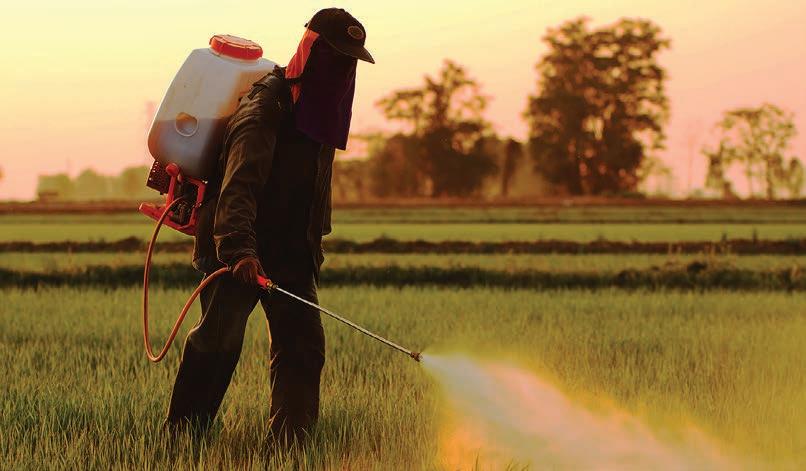
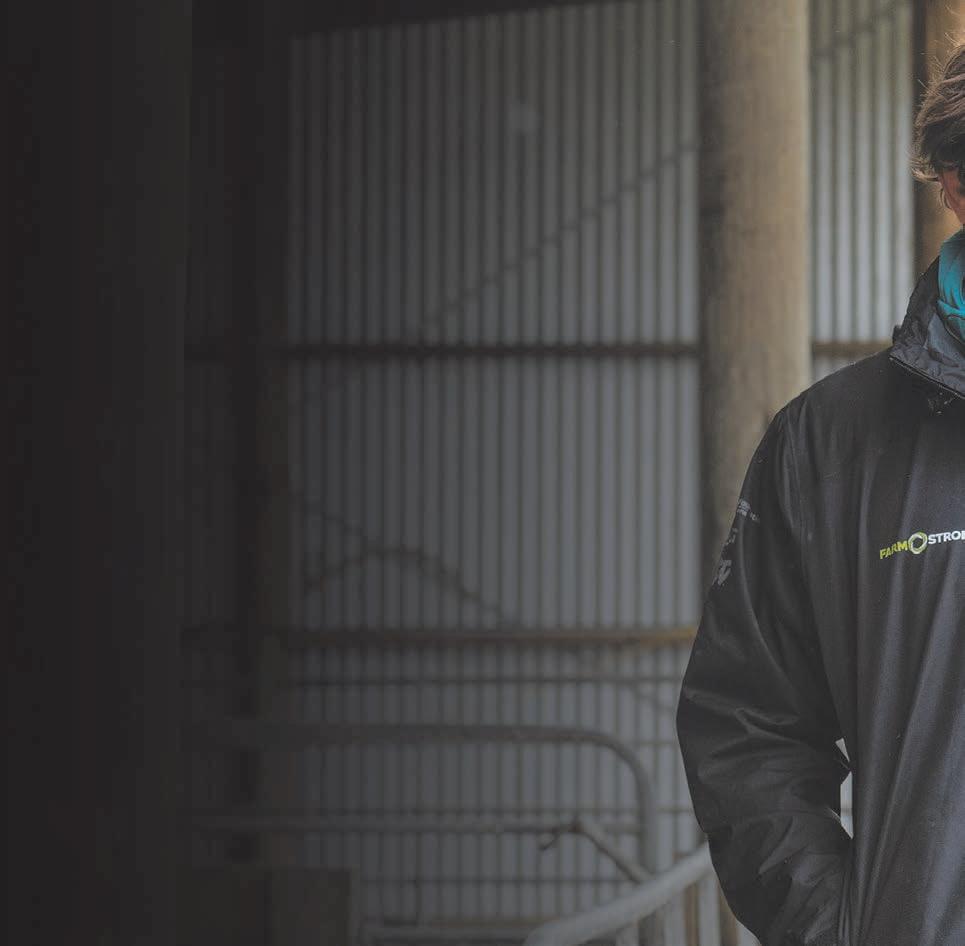

EPA’s experts approached the decision.
In particular, when ELI presented the EPA with studies and literature reviews on glyphosate, the EPA was entitled to scrutinise that material for reliability and to weigh it against other recent reviews by international regulators.
The Court also considered claims made by ELI that the EPA failed to apply the legislation properly, did not follow proper procedures, and was inconsistent in its decisions.
After reviewing the case, the Court rejected all of ELI’s arguments and found that the EPA acted lawfully and appropriately throughout the process.
Recently, regulators from jurisdictions including the European
Union, Australia and the United States have extensively reviewed glyphosate.
They concluded it should not be classified as a carcinogen and that any potential risks from using the substance have not changed.
EPA manager for hazardous substances reassessments Dr Shaun Presow said they will continue to monitor international developments and review any new research relevant to the New Zealand context.
“This case sets an important precedent for how the EPA applies the Hazardous Substances and New Organisms Act 1996. It also reinforces the value of our expert scientists and our commitment to transparency and science-based decision-making.”
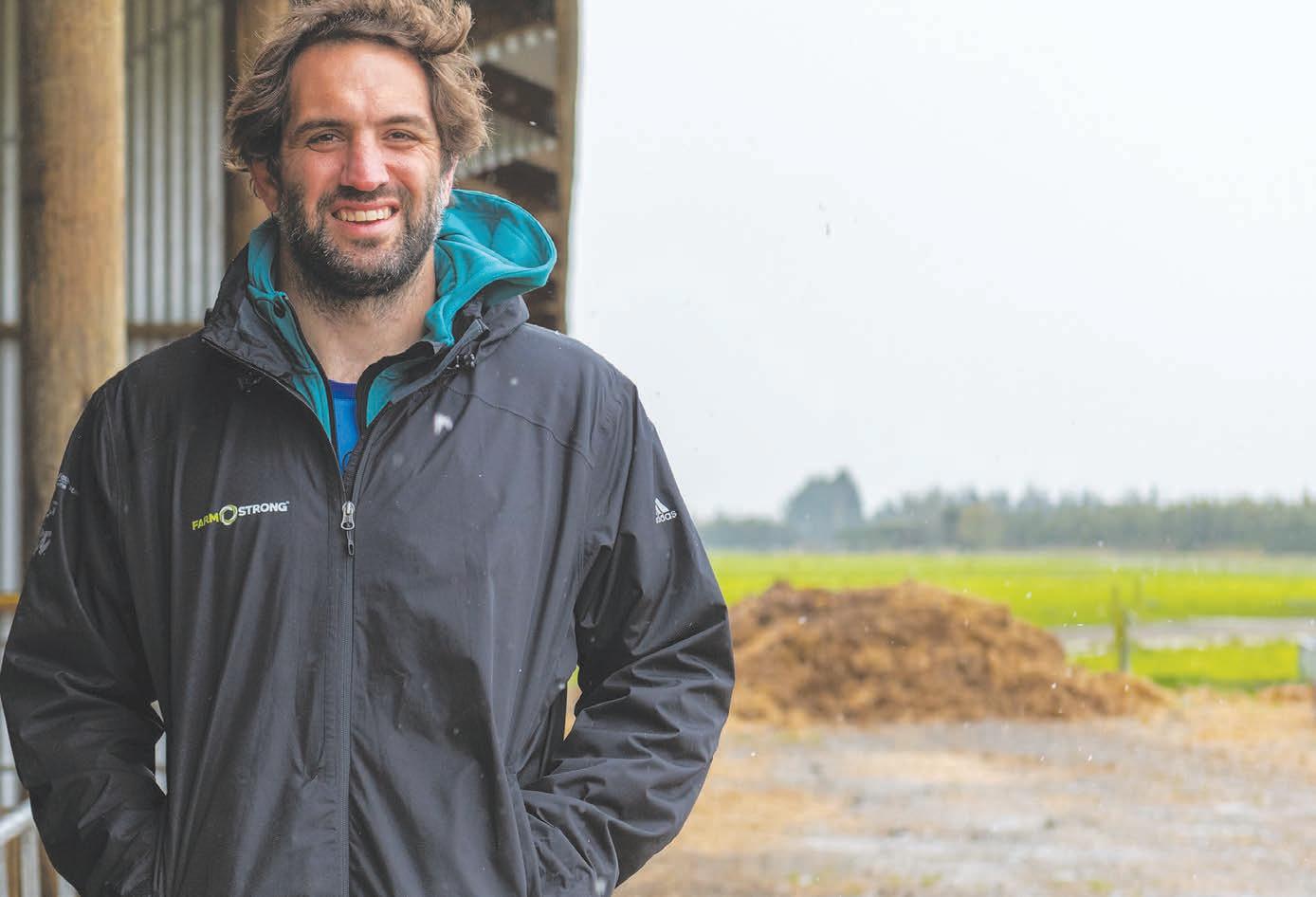
VIABLE: The scheme will ensure long-term viability for plant breeders like Sarah Whiteman, breeding a new wheat variety.
BACKING: The EPA acted lawfully when it decided not to reassess glyphosate, saying there was no new information about the weedkiller, a High Court decision has found.
FEDERATED FARMERS
Survey reveals shocking cost of consents
Anew survey shows the cost and complexity of resource consents have reached breaking point, highlighting the need for urgent Government intervention.
Federated Farmers’ Survey on Resource Consents found four out of five farmers are worried about gaining or renewing consents, and the average bill for gaining a new consent has hit nearly $45,000. Renewal permits aren’t far behind, averaging $28,000.
“Our survey makes for incredibly sobering reading, as it’s shown us the true scale of the consenting problems,” Federated Farmers freshwater spokesperson Colin Hurst.
“It’s staggering to learn the average total cost farmers are being stung with for regional council and consultancy fees is $45,000.
“It’s even worse for Canterbury farmers, who are forking out over $60,000.
“These numbers paint a damning picture of a system that’s simply not working.”
Hurst says it’s getting harder and more expensive every year to get a consent to keep farming, and there’s no clear reason why.
“The whole process has become so uncertain and complex that most farmers now must rely entirely on
consultants and expert advisors.
“Even then, there’s no guarantee they’ll get a fair or timely decision.
“Farmers and growers are exhausted, stressed out and losing faith in a system that seems to prioritise paperwork over environmental outcomes.”
Completed by Federated Farmers members nationwide in September and October, the survey shows frustration among farmers is boiling over.
“Many farmers described the consenting process as ‘a rort’, ‘ridiculous’, ‘extortion’, and ‘a nightmare’,” Hurst says.
“How are they supposed to have the confidence to keep investing in their businesses if they don’t even know whether they’ll be allowed to keep farming next year?
“The simple answer is they can’t. The uncertainty is pulling the handbrake on growth and productivity right across the sector.”
With thousands of consents due to expire in the coming months,
Federated Farmers says the situation is now urgent and requires immediate action.
“The Government’s plans to reform the RMA and replace it with a more workable framework are welcome – but that won’t happen overnight,” Hurst says.


“We’re staring down the barrel of even more stress and confusion if nothing changes.
“Farmers need certainty right now. Let’s end the consent chaos and give farmers the certainty they deserve.”
Federated Farmers is calling on the Government to allow all existing consents to roll over until the new system is in place.
“That would be a simple, practical step to save farmers time, money and stress,” Hurst says.
The survey shows effluent consents are the most common (24%), followed closely by farming (land use) and water take/irrigation (both 21%), reflecting the regulatory focus on dairy and intensive farming operations.
Another theme that came through was frustration over having to pay fees to affected parties during the consent process.
“Of those who responded, 40% expect to pay a fee to an affected
party, such as iwi,” Hurst says.
“But what’s interesting is that 31% aren’t even sure if they’ll have to pay anything, which really shows the uncertainty farmers face.
“A lot of comments pointed to frustration with the cost and lack of transparency around iwi consultations, showing just how inconsistent and unpredictable these fees can be.
“It really highlights a big challenge in the consent process, especially when it comes to the financial and procedural side of working with affected parties.”
Bureaucratic delays are another pain point for farmers, with lost applications and repetitive information requests common frustrations.
Farmers are asking for faster, farmer-led processes.
“The whole process has been a bureaucratic nightmare and taken a long time. It is over 18 months
since the original application was made and there is still no consent forthcoming,” one farmer wrote.
“Irrigation consent took nine months – same questions were asked every time, same answers given. Feels like there’s a rort going on between consultants and consent officers,” wrote another.
Farmers also criticised councils for losing documents, lacking farming knowledge, and relying on costly external consultants.
“This fuels deep distrust and calls for reform or disbandment,” Hurst says.
At the end of the day, farmers just want to get on with farming, he says.
“They don’t need extra stress, endless paperwork, or unpredictable costs standing in their way.
“The system is broken, and it’s time for practical, immediate fixes so farmers can focus on growing food and supporting their communities, not battling bureaucracy.”
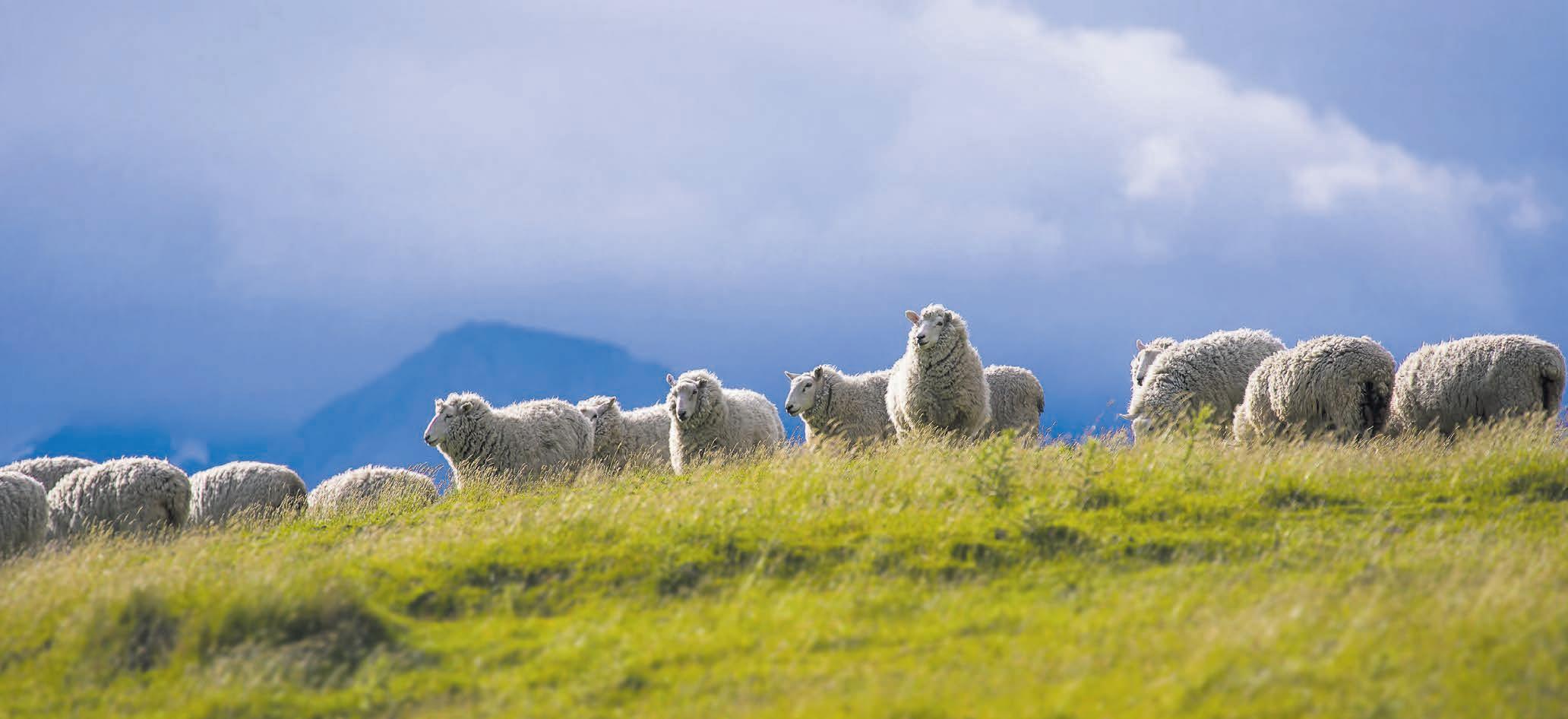


Grazing, conservation and building community in South Westland
Richard Dawkins
Awild weather forecast did little to dampen the enthusiasm of the Federated Farmers Meat and Wool leadership team as we explored Westland farm systems and industry issues last week.
This was an opportunity to examine the region’s unique farming systems, where productivity and conservation coexist harmoniously, yielding wide-ranging benefits. Roughly 93% of Westland is conservation land, and 7% is freehold.
The Meat and Wool executive –myself, Simon Cameron (vice chair), Laura Morrison, Ruby Mulinder, Dean Rabbidge, Ross Bowmar, and Jim Ward (high country) – were joined by Labour MPs Jo Luxton and Priyanca Radhakrishnan, the spokespeople for agriculture and conservation.
Simon, who is also the Federated Farmers West Coast president, led the tour and set the scene with the history of extensive farming in the area.
We learned about the pioneers,
WILD WEST: Federated Farmers Meat and Wool executive, Dean Rabbidge, Richard Dawkins, Ross Bowmar, Ruby Mullinder, Simon Cameron, Laura Morrison, Jim Ward.
including the Eggeling and Nolan families, who have been farming the region since 1874 and continue to farm it today. We also discussed the challenges that arise when grazing is reduced and land is retired, as was clear from land retired during tenure review around Wānaka.
A jet boat trip from Makarora up the Wilkin River showed the scale of the landscape and the clear benefits of cattle grazing across the wide valley floors.
Bringing retired land back into managed grazing would keep vegetation and weeds in check, sustain local economies and generate income that the Government can reinvest in conservation.
Richard Dawkins
Federated Farmers Meat and Wool Chair
Day two took us around farmland near Haast, with drives up the Arawhata, Waiatoto and Turnbull rivers. The balance between livestock and conservation was on full display.
The environment is vast, rugged and pristine. Some cattle runs are around 40km in length, and management depends entirely on the weather and river flows.
Hereford cattle bred for low-input and hardiness manage pastures and weeds, while native bush thrives.
There are around 3000 cattle grazing in these systems – a similar number to those on Molesworth.
Amidst this grazing of cows with calves at foot, we saw significant stands of mature forest with a strong understorey and abundant fresh Rimu growth.
The feature event was an evening function, but with roads closed, attendance was smaller than planned. However, the silver lining was a more interactive night.
This was a unique opportunity for a small community to meet with the Feds Meat and Wool leaders and MPs, and hear their thoughts about local challenges and wider industry issues. Questions and discussions continued for more than two hours, with further networking over the beef and lamb buffet dinner.
In the evening, it was made clear that the local communities depend on these grazing consents
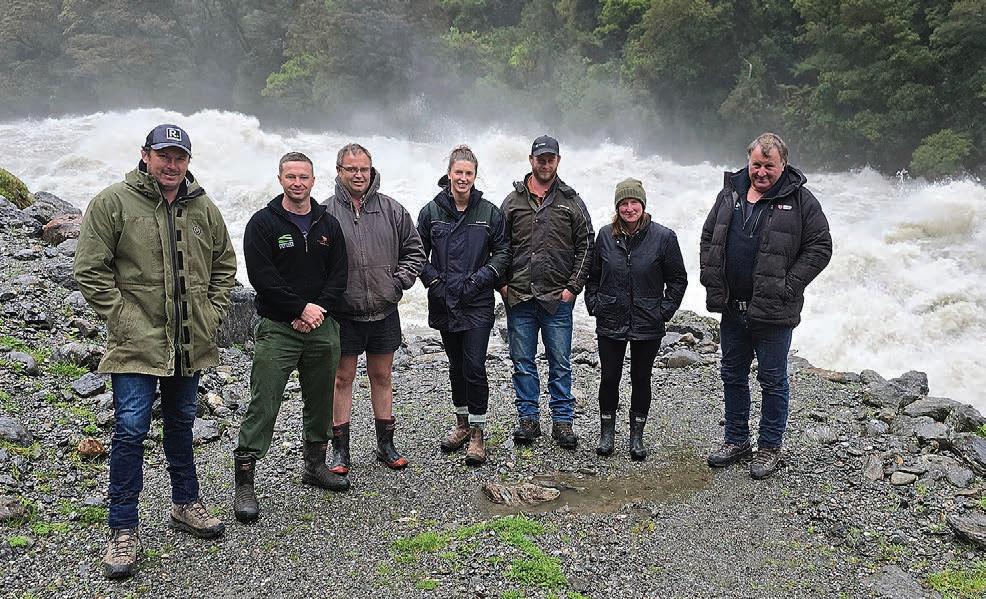

administered by the Department of Conservation, but the licences are short-term – only 10 years –creating uncertainty.
Costs have also risen, with some licences now over $60 per stock unit or being removed completely. In a tough environment, where freehold and grazing land is integrated, this means the whole farm system can become uneconomic.
We have heard similar reports across other DOC grazing consent applications. There are often additional cost-prohibitive barriers, such as increased inspections, detailed biodiversity monitoring and reports, and exorbitant processing fees. These reduce the viability of managing that land, or even applying for it.
It was clear that uncertainty and rising costs weighed on the community. Uncertainty about tenure reduces investment, often leaving families in limbo about what the future holds.
At the same time, weeds and pests are spreading around the country, including wilding pines across hundreds of thousands of hectares.
TOUGH TERRAIN: Federated Farmers West Coast president Simon Cameron shows Labour MPs Jo Luxton and Priyanca Radhakrishnan, and fellow Meat and Wool leaders Ross Bowmar and Jim Ward, the extent of land where weeds could be kept in check if managed grazing was allowed.
Where it is appropriate, bringing retired land back into managed grazing would help. Livestock keep vegetation and weeds in check, sustain local economies and generate income that the Government can reinvest in conservation.
Leaving land to sit is not a durable answer for farmers, communities or conservationists, nor is it a solution for a Government thirsty for export income and tax revenue.
There is a clear irony in retiring land from grazing to protect its values. In many cases, those values exist because farmers have managed that land for generations. Remove the stock and the people who care for it, and we will see more weeds and more pests, not fewer.
Thank you to Priyanca and Jo for making the trip, to Simon Cameron and his family for hosting, to Beef + Lamb and FMG for their support for the evening function, and to the locals who welcomed us so warmly.
We left the West Coast with a deeper appreciation for the farming systems, the environment and the people who hold both together.
Federated Farmers Meat and Wool Chair
Arable farming gets a fairer playing field
Anew code of conduct aims to prevent costly disputes in the arable sector, moving the industry beyond the days of deals done on a handshake.
David Birkett, Federated Farmers arable chair, says the sector has for too long operated under a set of unwritten rules – but that’s all changing.
The new Arable Industry Code of Conduct, coming into effect 1 January, will give greater certainty and cut costs, he says.
There are benefits for everyone – but also a renewed expectation on all parties.
“We’ve taken the chance to tidy up the industry by agreeing on some clear standards and getting them down in writing.
“There are benefits for everyone –but also a renewed expectation on all parties.”
Birkett, who has driven the new code, says he’s excited about the improvements to come.
“Federated Farmers felt arable farmers were being treated
differently to others in the industry and we wanted fairness across the board.
“The arable sector has often relied on unclear rules and deals done on a handshake.
“But with new farmers and seed companies entering the industry all the time, they often don’t understand these unwritten expectations.”
Economic pressures and high input costs make it even more likely those unwritten rules get bent or broken, he says.
The code has developed by the Arable Food Industry Council. AFIC brings together representatives from right across the industry –farmers, seed merchants, breeders and importers, the NZ Feed Manufacturers’ Association, the Foundation for Arable Research, Plant & Food Research, Flour Millers Association and AsureQuality.
The code sets out shared standards across the supply chain, covering everything from storage fees to crop insurance.
“Crop insurance has been an unresolved issue for ages – a complete nightmare,” Birkett says.
“We’ve been double-insuring crops for years.
“Now it should be clear when the farmer needs to insure, when it transfers to the seed company, and
what the seed processor needs to cover.”
Another bone of contention for farmers is that purchasers of harvested grain might leave it in onfarm storage for longer periods, with the fee not covering the cost.
Now, the Code of Conduct stipulates that all storage increments will take effect from 1 April each year.
The cost of storage should be at relevant commercial rates for both growers and merchants under the same terms and conditions.
The code also encourages early communication and negotiation when contract conditions can’t be met, helping prevent costly disputes.
“Even when there’s a signed contract between parties and there’s been a breach of terms, or bad faith, the offending party can sit tight and do nothing. They know it will probably cost the other party thousands of dollars to take them to court,” Birkett says.
“But with this new set of industryagreed standards on what’s fair and reasonable practice, that sort of stand-off should be nipped in the bud.”
Tailored to New Zealand’s diverse arable systems, the code is homegrown and will be reviewed annually to stay relevant.
“No matter your role, you want to
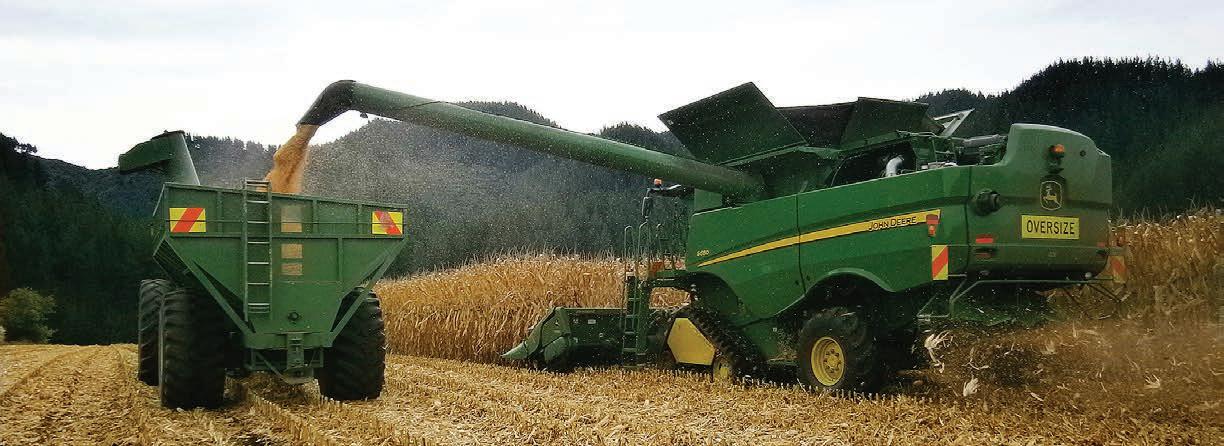
RESPONSIBILITY: The new code sets out shared standards across the supply chain.
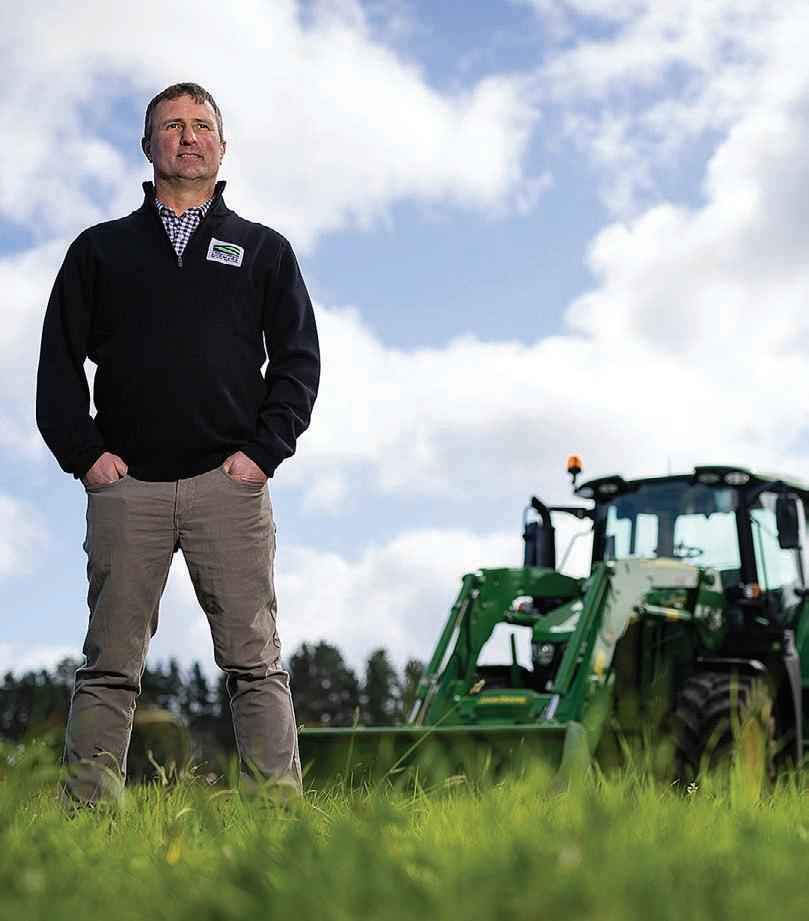
CLEAR STANDARDS: David Birkett says no matter your role in the arable supply chain you want to know your obligations – and have confidence the other party will meet theirs. The new code will boost that understanding.
know your obligations – and have confidence the other party will meet theirs,” Birkett says.
He says the code has been checked by the Commerce Commission to ensure it complies with legislative requirements around preserving competition and avoiding price fixing.
Like the new Arable Code of Conduct, the Seed Crop Isolation Distance (SCID) system has no legislative backing.
“Yet when a dispute over crosscontamination of crops ends up with legal proceedings, the Court has asked ‘what’s the industry standard?’ and the well-tested SCID system is given considerable weight,” Birkett says.
“Over time the new code will also gain that acknowledgement and status.”
While some overseas jurisdictions have arable codes, “ours is entirely home-grown,” Birkett says.
“We operate a little bit differently from most countries. Our arable systems are different and more complicated, with a wider range of crops than many.
“The code is tailored to our needs, and it will be reviewed by AFIC each year.”
Given the sometimes competing interests across the supply chain, getting agreement on the code went more smoothly than Birkett had anticipated.
“There were some hot topics that were well debated – but that’s positive.
“We all wanted to land something that was fit for purpose and enduring.
“No matter your role in the industry, when you sign a contract you want to understand your obligations – and have some certainty that your expectations are also understood and fulfilled by the other parties.”

David Birkett
Federated Farmers Arable Industry Chair
Everyone loses with lagoon consent debacle
An ill-conceived and poorly handled consent application for opening Waituna lagoon to the sea has resulted in a “lose-lose stalemate”, Maarten Van Rossum says.
“Farmland and local infrastructure will be flooded, the ecological health of the lagoon isn’t any better off, and ratepayers could be left picking up big bills,” the Federated Farmers Southland executive member says.
“Environment Southland, a party to the new consent, now finds it’s unworkable.
“Under the new consent conditions there’s so much red tape involved in cutting a channel to release lagoon water when it floods, the cost to Environment Southland’s ratepayers could run into hundreds of thousands of dollars each time.”
A hearings panel of independent commissioners last month granted a new 20-year consent for periodic opening of the lagoon, as sought by DOC, local iwi Te Rūnanga o Awarua, and Environment Southland (ES).
Van Rossum, who farms at Waituna, says the 40 or so farmers and local residents at a community meeting on 21 October were frustrated and angry. They voted to appeal the granting of the consent, even if it’s just to buy time for authorities to find solutions.
“The new consent conditions and costs are so prohibitive that when the lagoon and surrounds flood, Environment Southland will have to rely on its CDEM Act emergency powers to be able to take action.
“That has such a high threshold, the ecological health of the lagoon is going to be compromised even further.
“The whole situation is a debacle and the council has brought it on itself.”
Federated Farmers has written to Conservation Minister Tama Potaka and Environment Southland councillors urging them to try to sort out the mess.
“While opening the lagoon for ecological health and cultural values is important and supported, DOC’s narrow focus on these values excludes other critical community, flood management and economic considerations,” Federated Farmers Southland president Jason Herrick says in the letter to Potaka.
“The behaviour of DOC in this process falls short of community expectations.
“We question whether the sidelining of community concerns and non-integrated freshwater management is consistent with your expectations of the department.”
A channel to allow water to escape to the Pacific Ocean can now only be cut when lagoon levels are higher than those that have previously triggered openings.
Herrick says this puts surrounding farmland at serious risk of flooding, saturates the highly erodible banks of tributary streams, and compromises catchment drainage systems.
Consents held by the communitydriven Lake Waituna Control Association (LWCA) since 1969 have in recent years seen openings made when the lagoon reached 2.2m above sea level (asl).
With legal bills topping $140,000, the LWCA was unsuccessful in renewing this longstanding consent – “an outcome in which Environment Southland played a pivotal role”, Herrick says.
In what Federated Farmers

describes as undermining of the principles of natural justice, the DOC/iwi/ES consent application framed the higher lagoon water levels as a natural and normal occurrence.
“This downplayed the real-world implications for public infrastructure and land-use decisions made in reliance on historical opening levels.”
The new consent means in the first 10 years, an opening can be cut when the lagoon reaches 2.3m
above sea level (asl) in winter months, and 2.4m in summer months. The trigger level increases progressively over the next decade to 2.5m.
“At 2.3m asl, the Southland District Council’s Waituna Lagoon Road and the Waituna Lagoon Road Bridge are known to flood.
“However, this effect is treated in the application as a natural occurrence, rather than a foreseeable outcome of the proposed regime,” Herrick says.
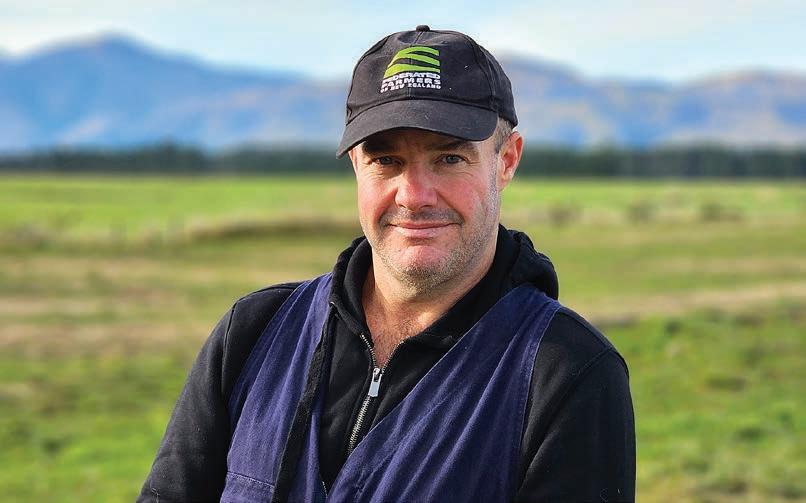
PAUSE: Jason Herrick urged DOC and Environment Southland to withdraw or pause the consent application and address the flooding, sedimentation and catchment management issues.
“Publicly funded DOC boardwalks and viewing areas at the Ramsar wetland access site are also affected.”
Crucially, the consent provides full discretion not to open the lagoon even when the trigger levels have been reached.
“This represents a significant departure from community-led management and removes any guarantee of action during flood events.
“This sidelining of local management risks damaging long-standing community partnerships and undermines DOC’s obligations to uphold collaborative relationships,” Herrick told Potaka.
To rebuild community trust, Herrick urged DOC and Environment Southland to withdraw or pause the consent application and address the flooding, sedimentation and catchment management issues.
“Without intervention, the local catchment community will have no choice but to proceed through a likely costly and prolonged Environment Court appeal.
“This in turn will increase costs to DOC and the council – which we believe are already likely to be substantial.”
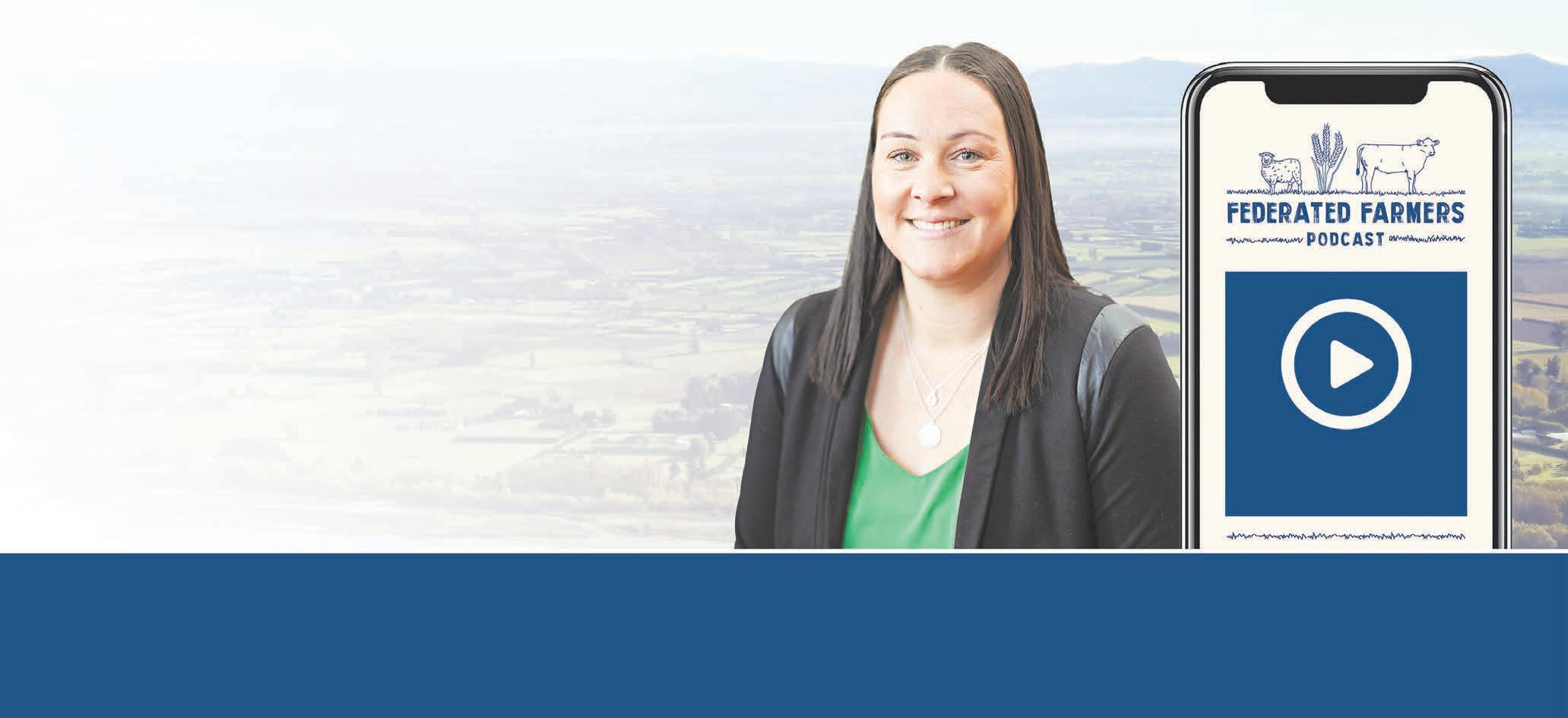


FLOODING FIASCO: Federated Farmers is concerned there’s so much red tape embedded in the new consent regime, cutting a channel from Waituna lagoon will cost ratepayers dearly.




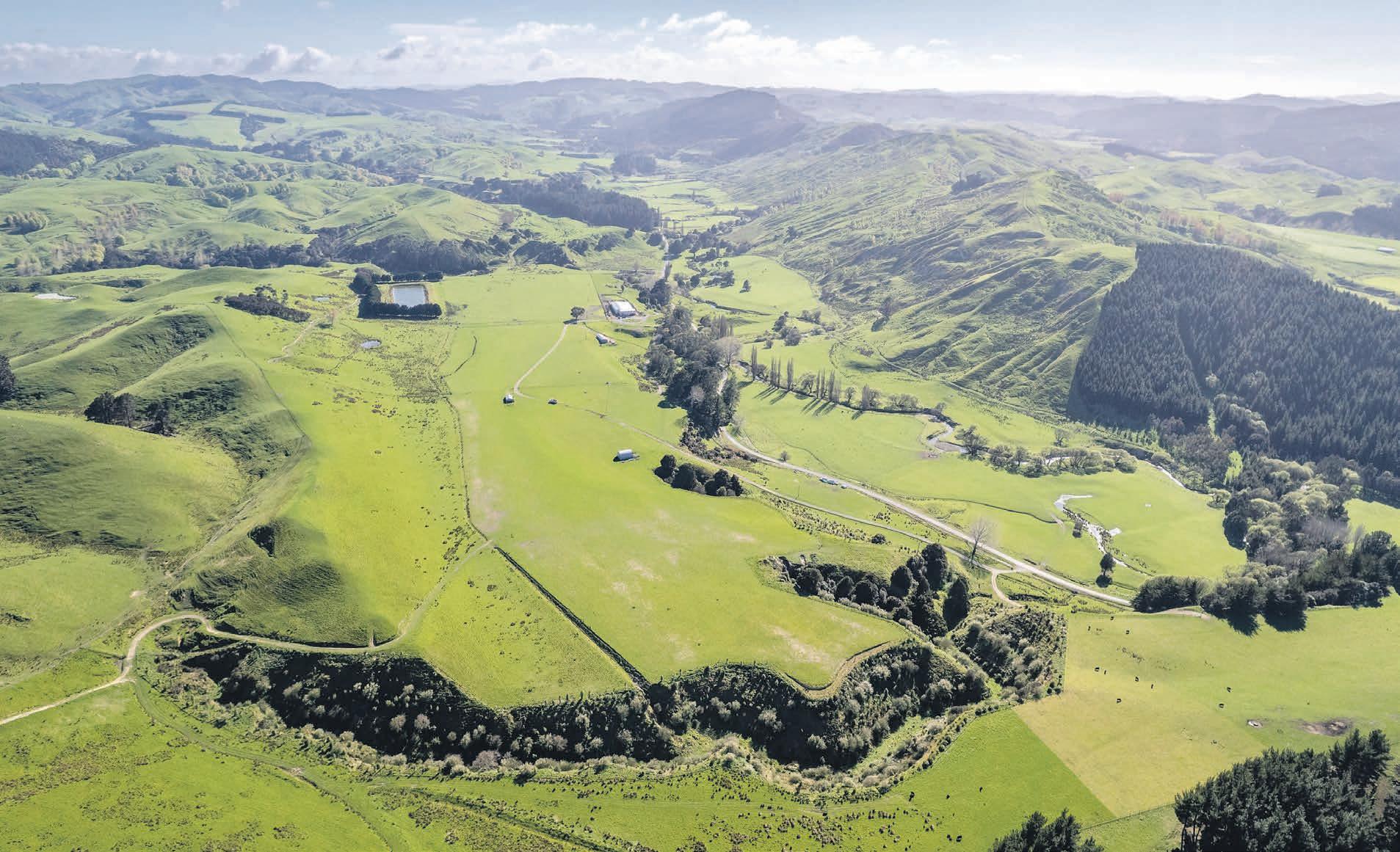


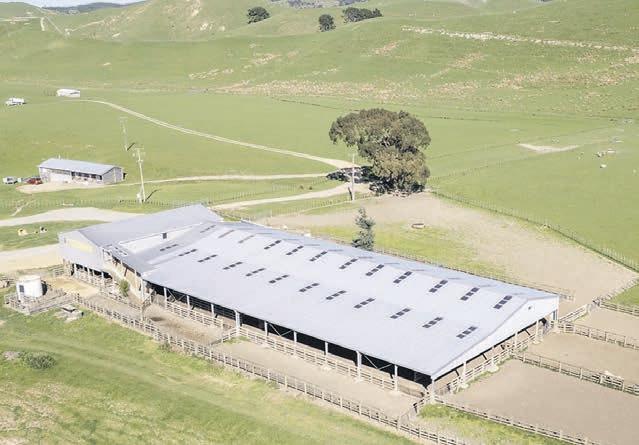
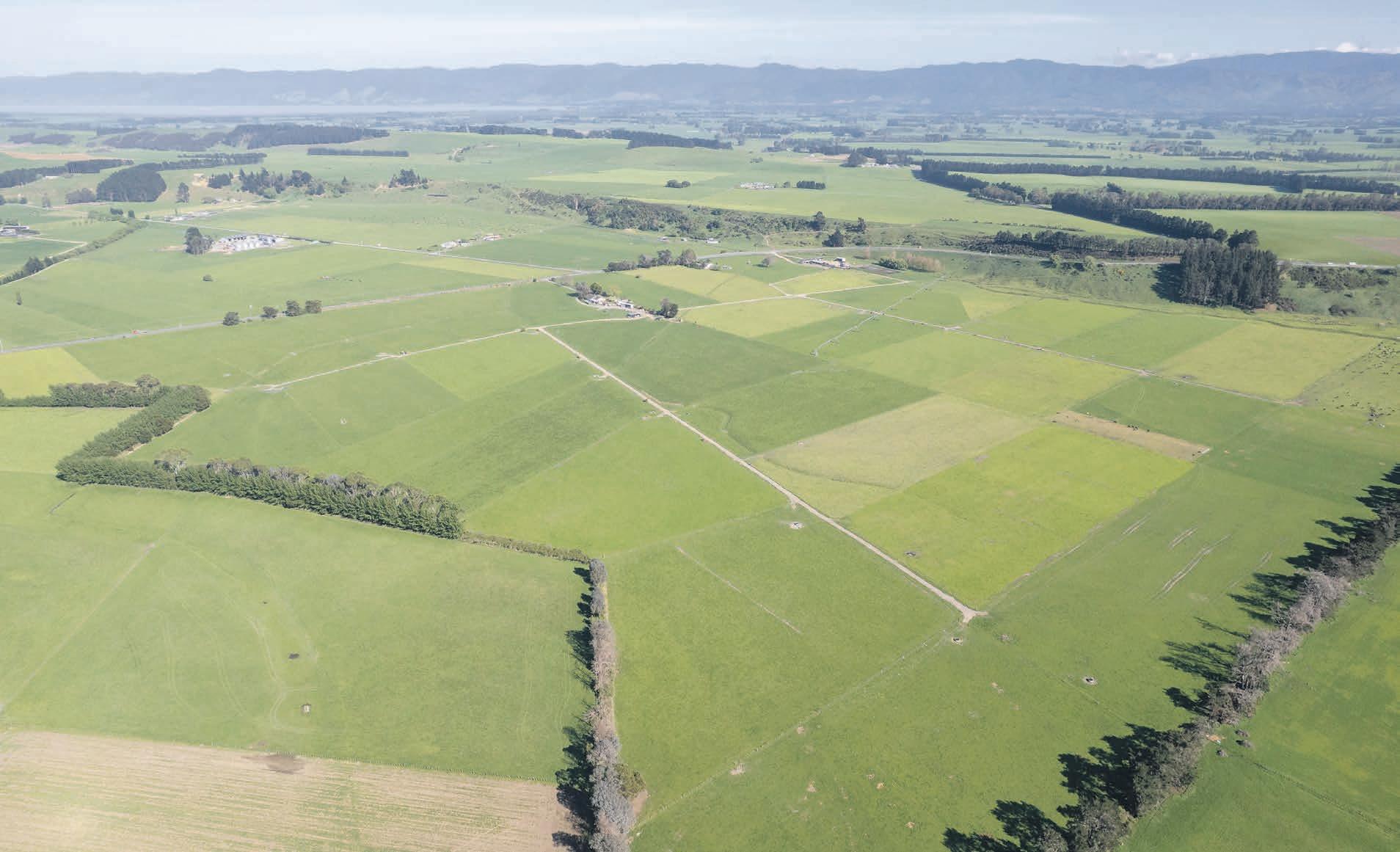

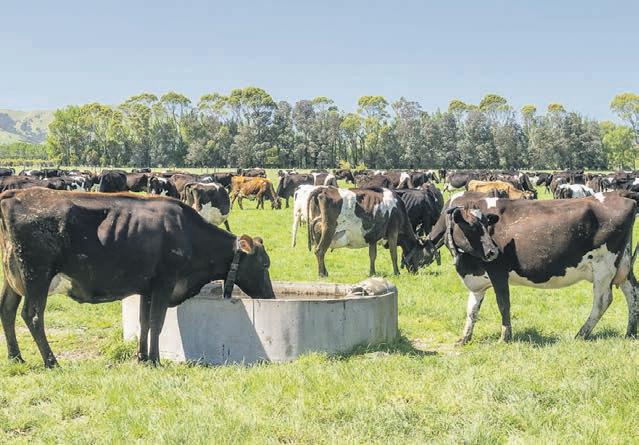

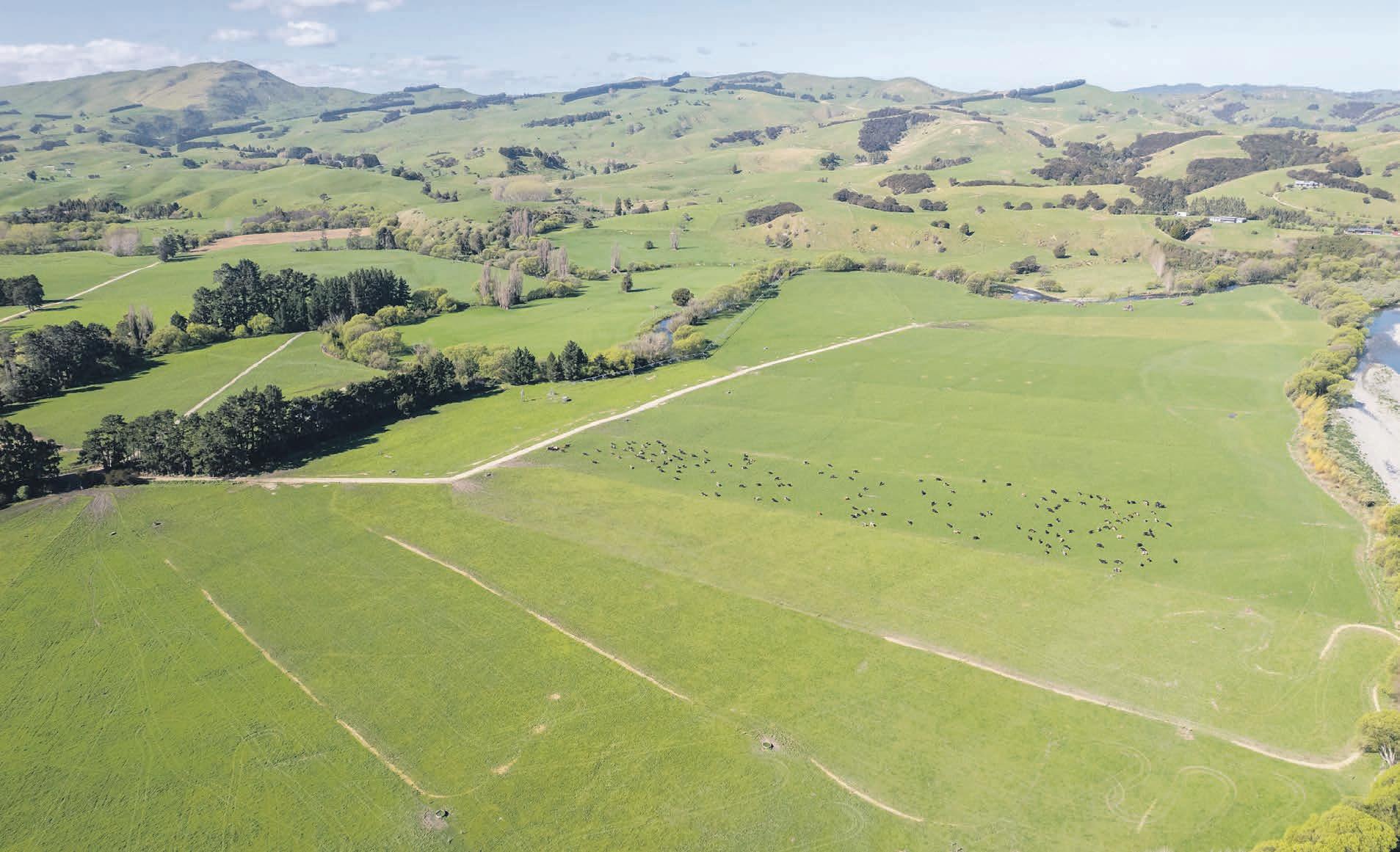

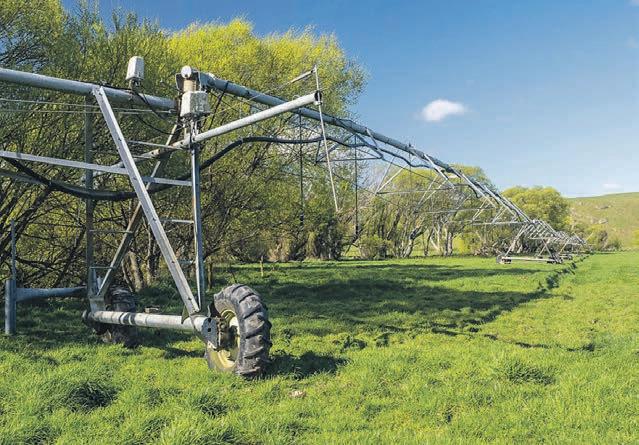
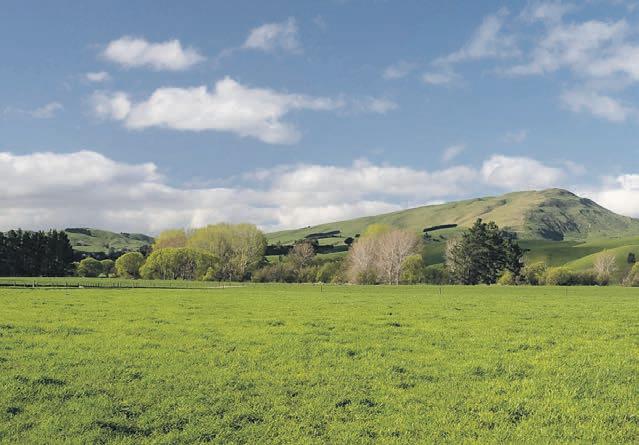


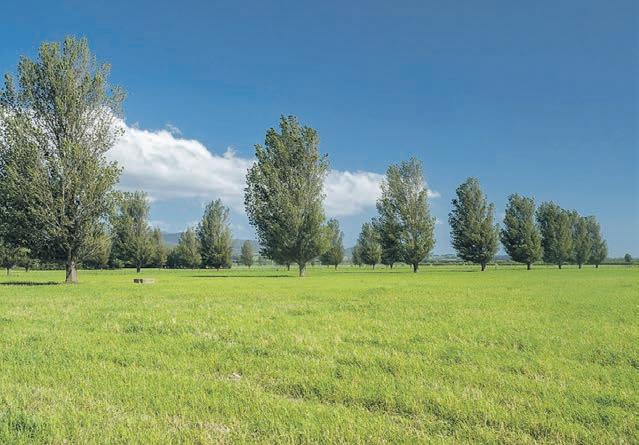
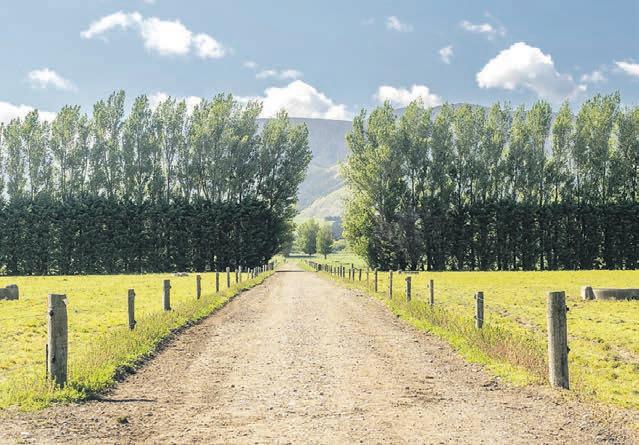


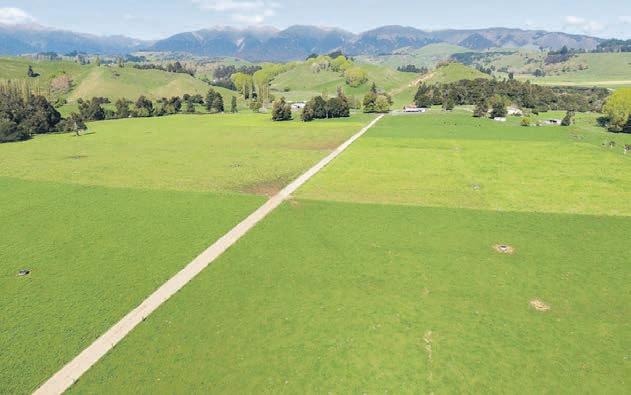

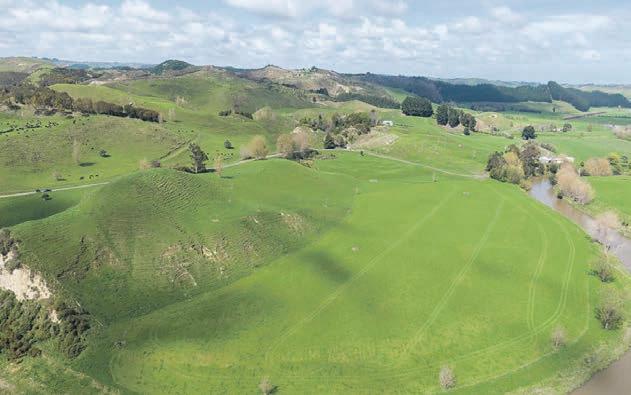
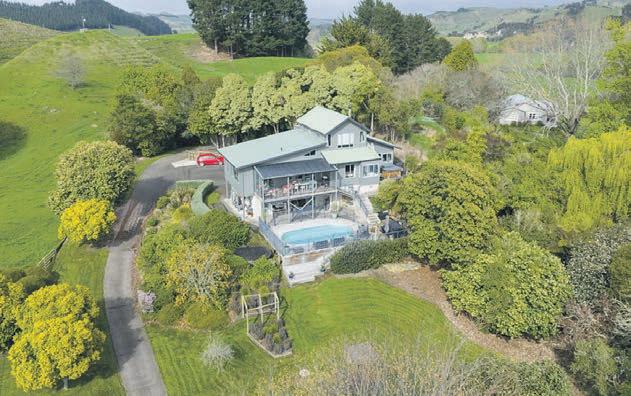
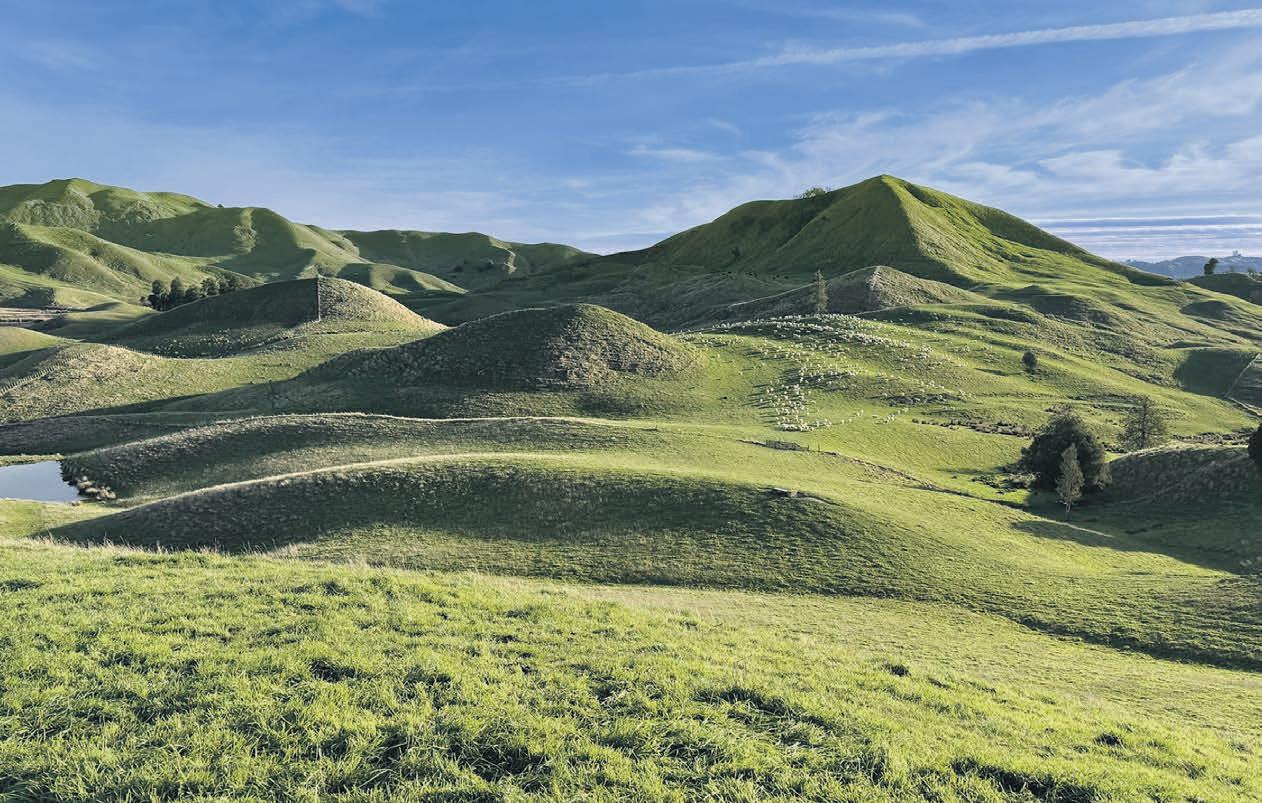

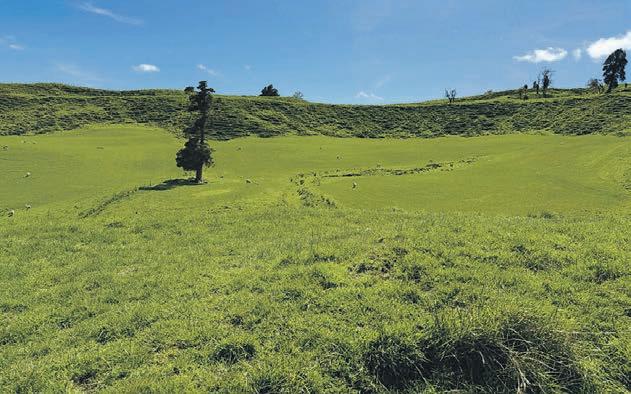
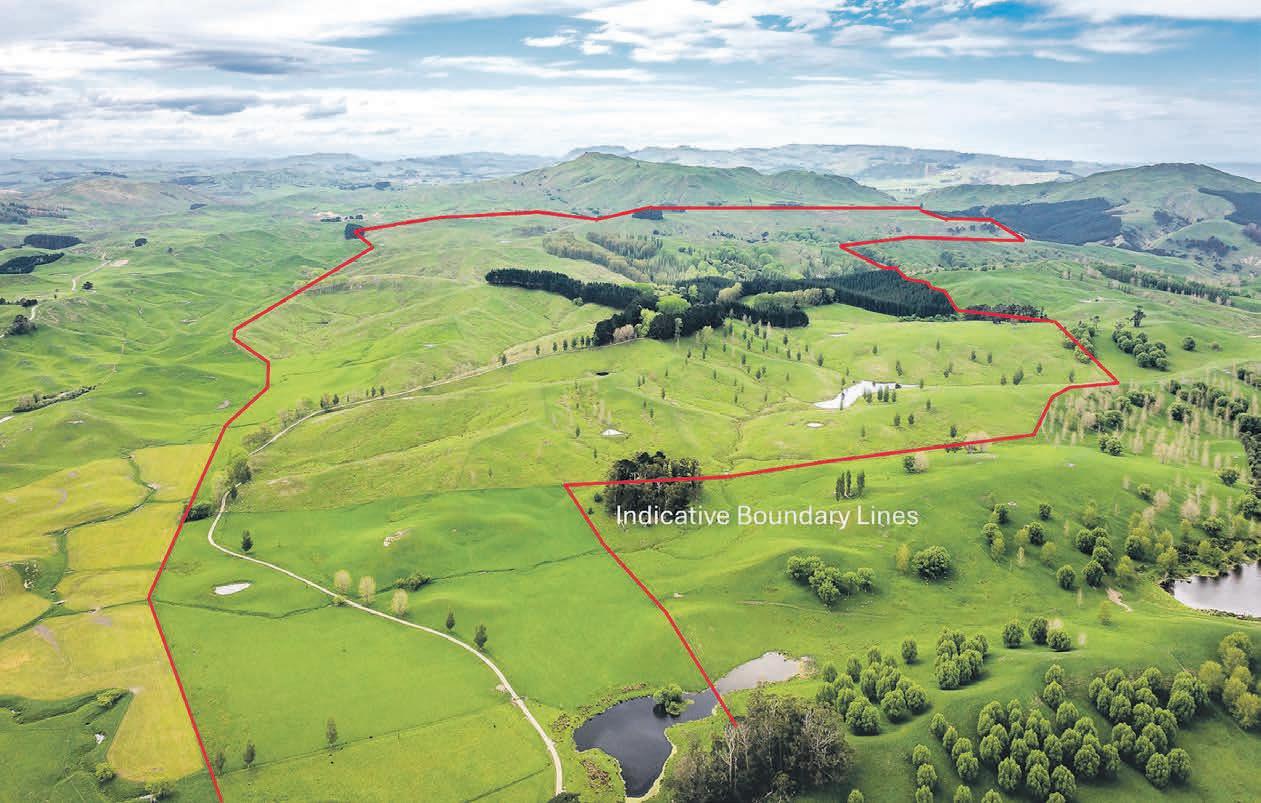




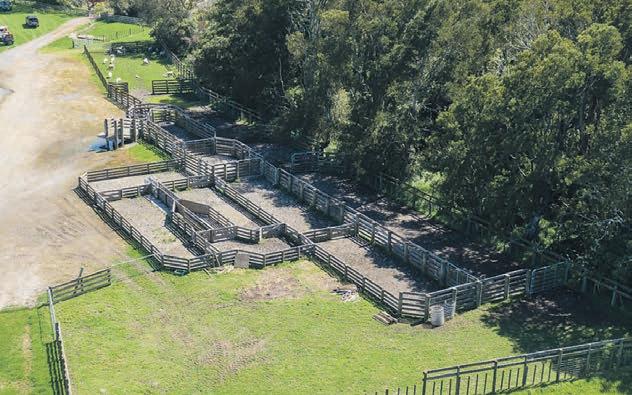
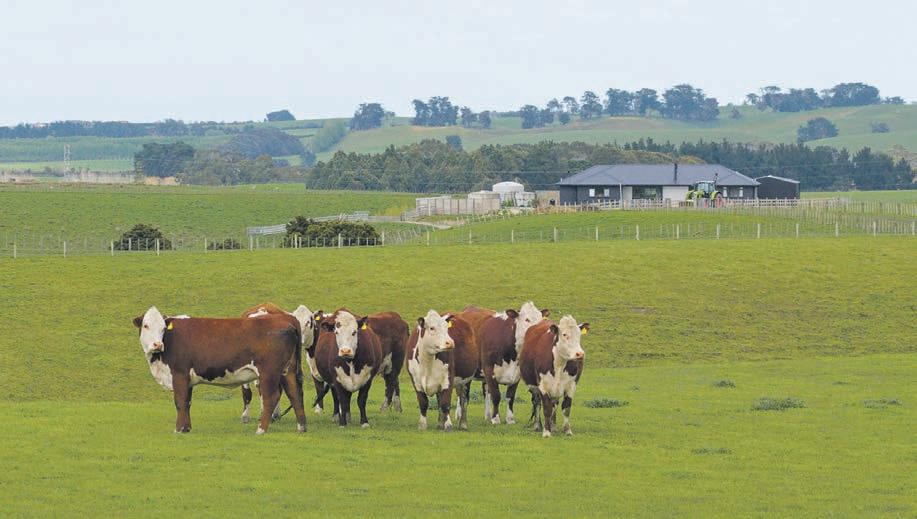
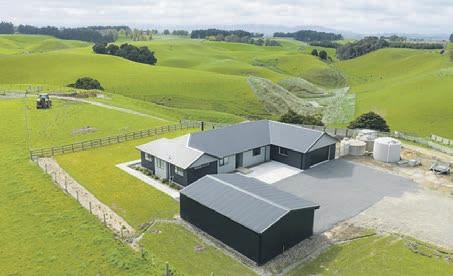

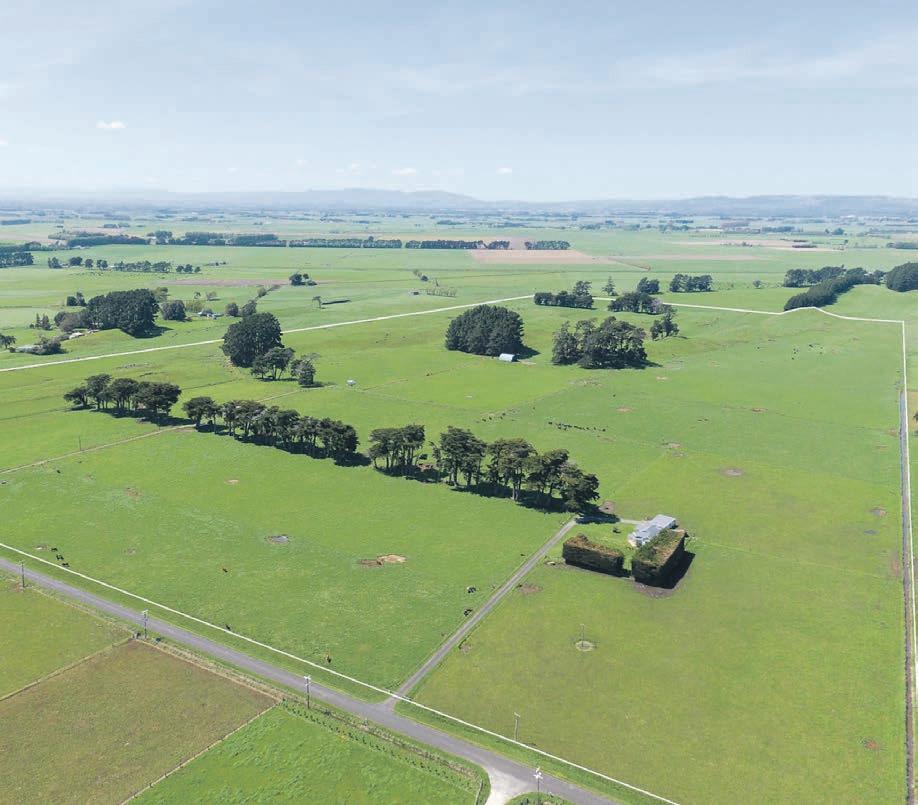
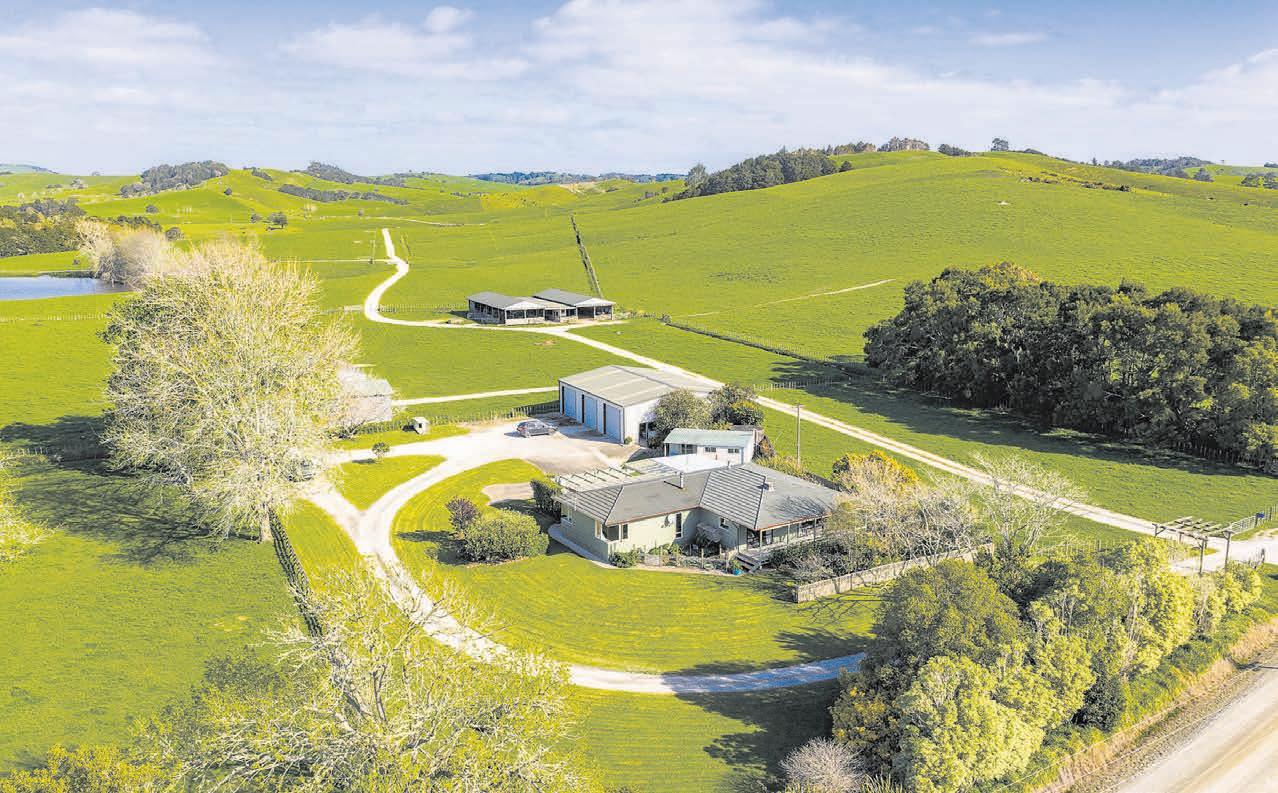
Outstanding 653-hectare beef finishing unit
Opportunities of this scale are rare Spanning 653 2536 hectares (more or less) across 15 titles in Ruawai this property is offered by tender with five purchase options It’s a serious farming operation developed and maintained to a high standard after decades of dedication to the land Divided into 158 paddocks and 77 cells it runs around 1200 cattle and finishes 600 annually Infrastructure includes cattle and sheep handling facilities wool shed, workshops, implement sheds, silage bunkers, limestone races, and quality fencing Two reliable water sources support consistent productivity A spacious four-bedroom home and one-bedroom sleepout provide ample accommodation A limestone quarry only adds more value This is a complete, well-run farming unit ready for new ownership bayleys co nz/1021086
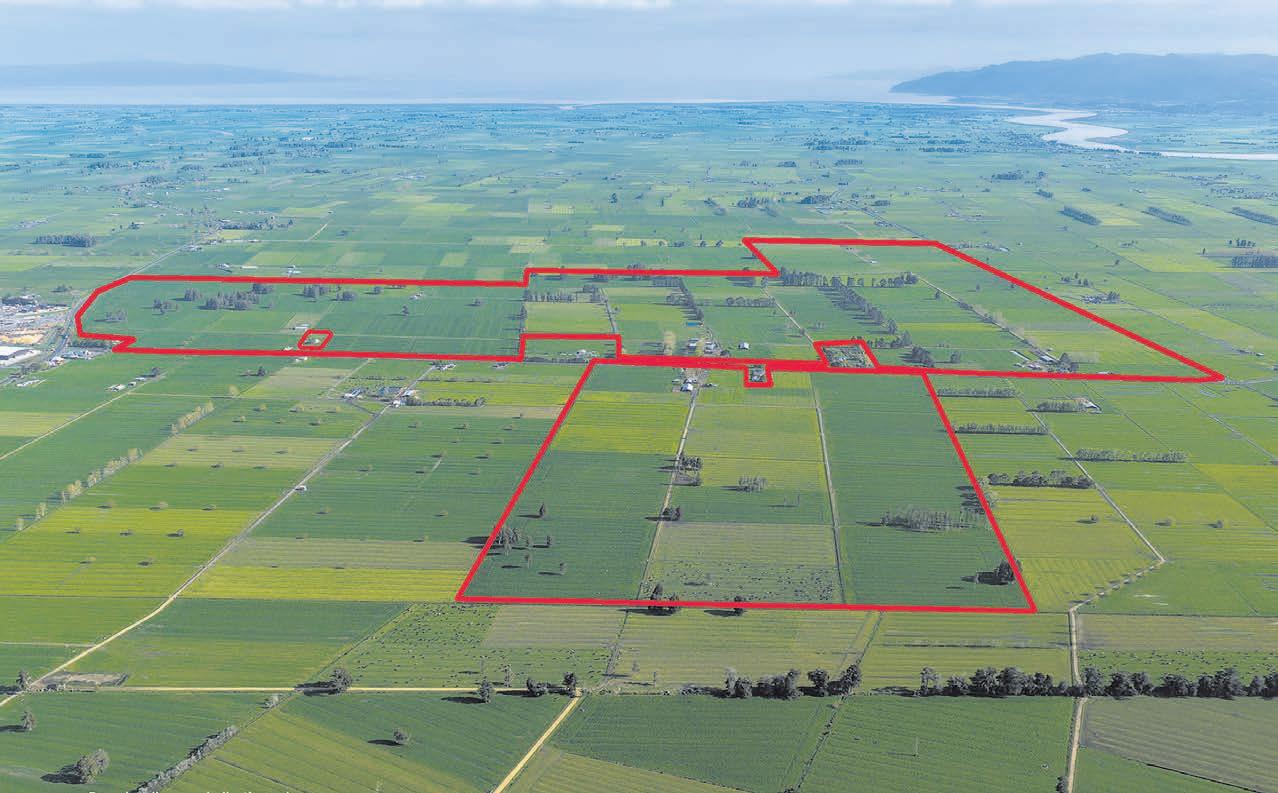
A Hauraki Plains legacy - productive and proven
Opportunity before Christmas! A significant 241ha (more or less) dairy holding in the heart of the Hauraki Plains offering scale, infrastructure, and lifestyle appeal Flat, fertile land with 146 paddocks supports around 600 cows producing over 207,000kgMS Infrastructure includes a 43-aside herringbone cowshed, wintering barns, calf facilities, sheds, and staff accommodation Around 90% of troughs and water systems are new With council water, efficient effluent, and multiple dwellings, this high-performing farm offers proven production and longterm potential close to Ngatea, Hamilton, Auckland, and the Coromandel bayleys co nz/2630156

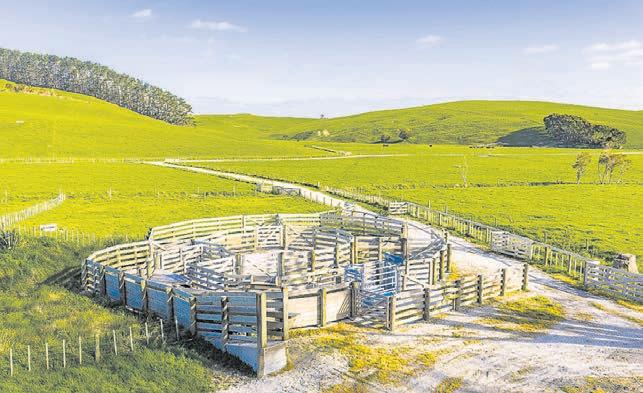
Tender (unless sold prior) Closing 2pm, Thu 4 Dec 2025 84 Walton Street, Whangārei View by appointment
Todd Skudder 027 439 1235 todd skudder@bayleys co nz


Asking Price $10,900,000 + GST (if any) View by appointment
Karl Davis 027 496 4633
karl davis@bayleys co nz
Sam Aislabie 027 429 5410
sam aislabie@bayleys co nz SUCCESS
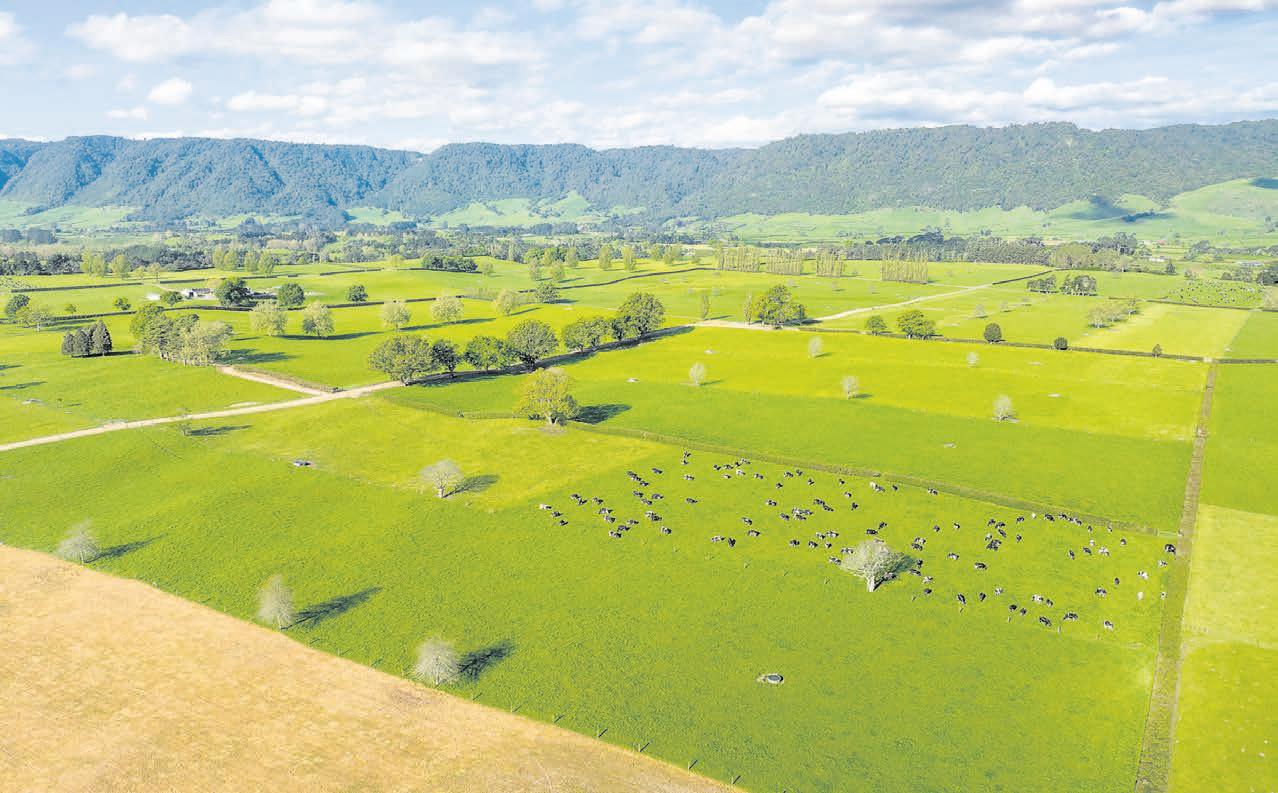
Elite dairy opportunity - quality, contour, class
A rare opportunity to secure a top-tier dairy unit just 9 6km north of Matamata This immaculately presented 118ha (more or less) farm in two titles offers superior contour elite soils proven performance and a commanding presence with frontage to Tower and Harding Roads Milking up to 360 cows with production levels up to 180 000kgMS supplying Open Country Dairy this high-performing operation is supported by a 30-aside ASHB shed with in-shed feeding and Pro-Track Herd Management Key features include a compliant effluent system with new 2 5M-litre pond, dual water supply (bore & town), and pasture irrigation over 75ha Accommodation includes three homes, with an optional executive homestead on a third title This is a standout property combining productivity, quality, and lifestyle in a dress circle location bayleys co nz/2400805
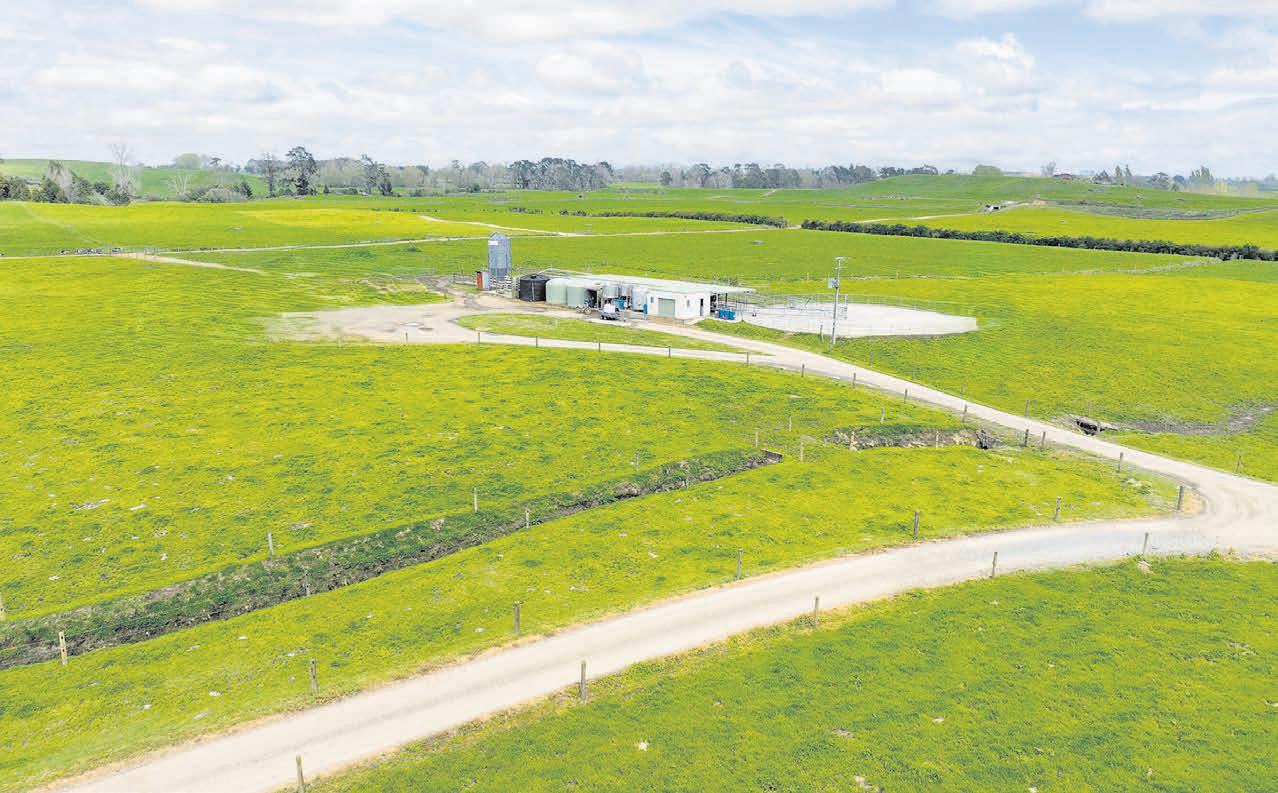
Road, Te Poi
Prime land – dairy or grazing – purchasing options
A rare chance to secure quality land in a sought-after district Choose from 70 91 hectares (STS) or two newly surveyed lots (titles pending): 48 08 hectares as the main dairy platform with a modern three-bedroom home and extensive infrastructure, or 22 83 hectares of quality bare grazing land with its own water bore, adjacent to this block is a fully renovated brick home on a separate 0 9 ha title adding further purchasing flexibility The property features a well-maintained 22-aside dairy shed with in-shed feeding, a modern effluent system, multiple barns and sheds Contour is mainly flat to gently rolling with strong soils and proven production of over 138,000 kgMS from 290 cows Located in the desirable Te Poi district, just 16km from Matamata and within easy reach of the Bay of Plenty, this outstanding dairy or lifestyle investment is an opportunity not to be missed bayleys co nz/2400921
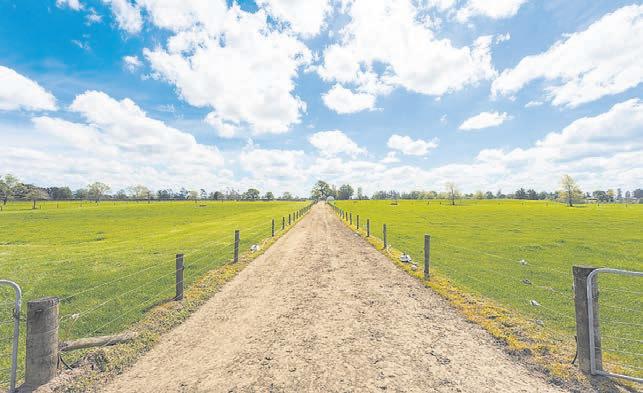
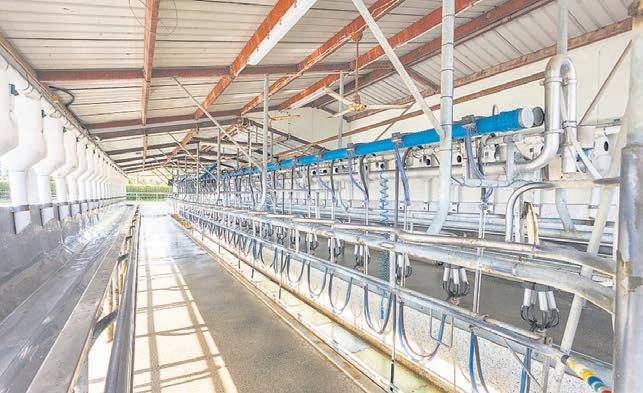
118 8 ha
Auction (unless sold prior)
11am, Thu 27 Nov 2025
96 Ulster Street, Hamilton
View 11am-12pm Wed 5 Nov, Wed 12 Nov & Wed 19 Nov or by appointment
Sam Troughton 027 480 0836
sam troughton@bayleys co nz
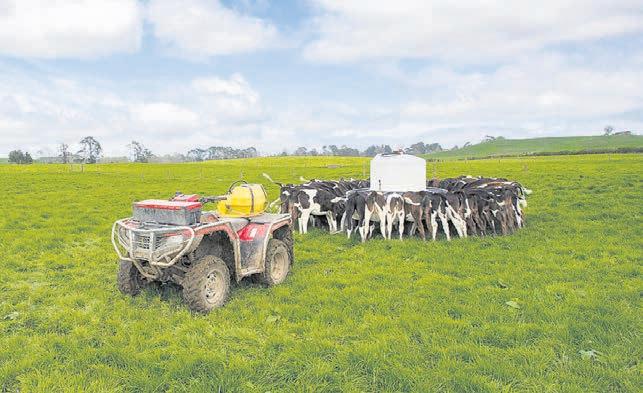

Sam Troughton 027 480 0836 sam troughton@bayleys co nz
Matamata 72 and 82 Harding Road
Matamata 128 Rapurapu
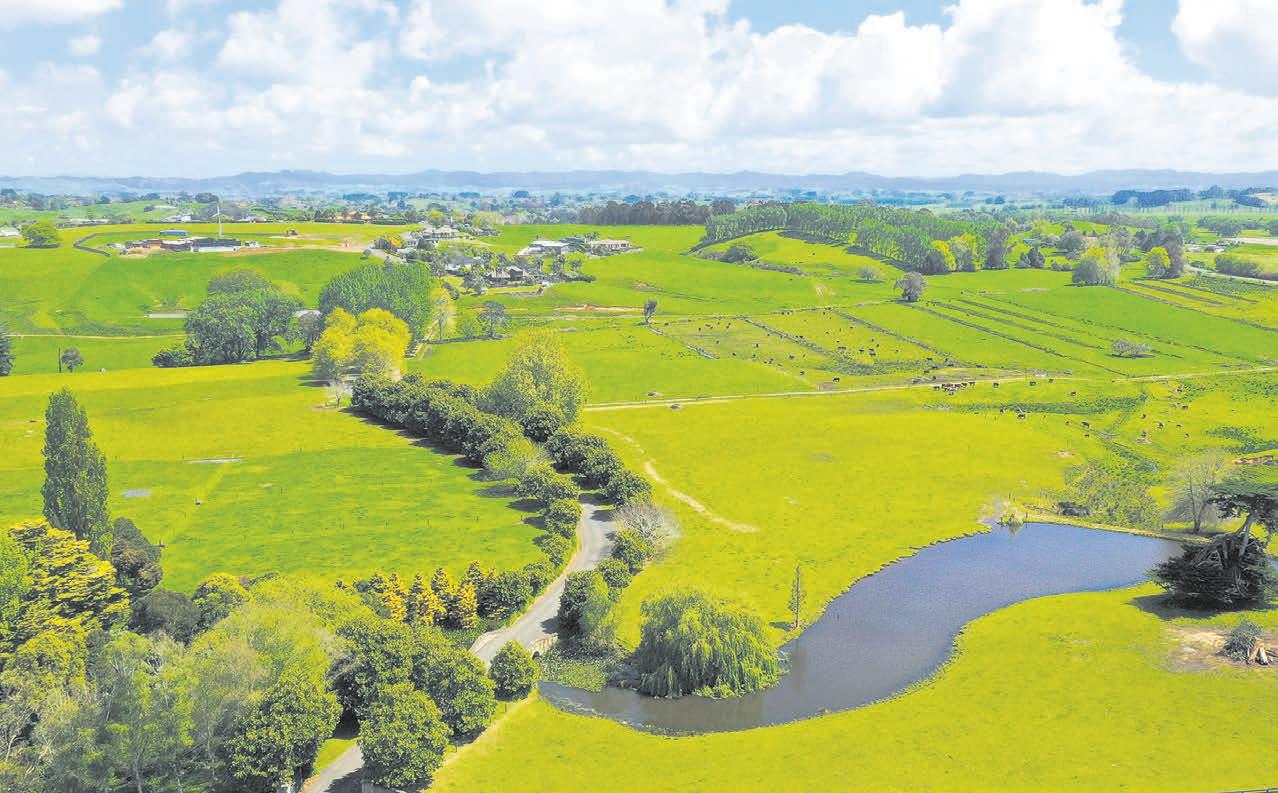
City boundary farming
Conveniently located on the western edge of Hamilton city, this 108 hectare cattle grazing block offers a myriad of options Currently the home of Big River Hereford and Angus, the property has been breeding service bulls for a loyal dairy farming clientele for over two decades Subdivided into 44 main paddocks with reticulated bore water and a good set of cattle yards, the farm would equally be suited to dairy support, or given its proximity to meat processors and saleyards, would make a handy livestock trading or beef finishing block Contour ranges from loamy peat flats to volcanic clay rolling hills with some steeper sidlings, and a network of races with two internal underpasses facilitates ease of stock movement Managed with organic principles at front of mind, Stonebridge Farm is a unique opportunity to acquire a good sized block with city amenities on your doorstep bayleys co nz/2312170

Production plus Sika hunting at Puketitiri
Located in a summer safe farming district only 53 kilometres north-west of Napier, ‘Te Wairere’ is 315 hectares of mainly easy/flat contoured country with a solid reputation for producing strong, quality livestock Add to this the fully reticulated water system, strong fertiliser history, an excellent pasture renewal programme, fantastic laneway from the woolshed to back satellite yards, along with the huge natural resource of Sika and fallow deer This property is an absolute gem providing excellent returns as well as an off the grid hunting cabin complete with a spa pool The high performing ewe flock which lambs over 160% and boasts high worm resilience is also up for sale Featuring a large four bedroom homestead, a four stand woolshed, implement and hay sheds, sheep and cattle yards A must view for those wanting a turnkey farming opportunity bayleys co nz/2854220


Tender (unless sold prior)
Closing 3pm, Tue 25 Nov 2025
View 11am-12pm Tue 4 Nov & Tue 11 Nov
Dave Peacocke 027 473 2382 dave peacocke@bayleys co nz


ha Auction 12pm, Fri 28 Nov 2025 15 Havelock Road, Havelock North View by appointment
Tony Rasmussen 027 429 2253
tony rasmussen@bayleys co nz
Chris Heenan 027 599 3527
chris heenan@bayleys co nz
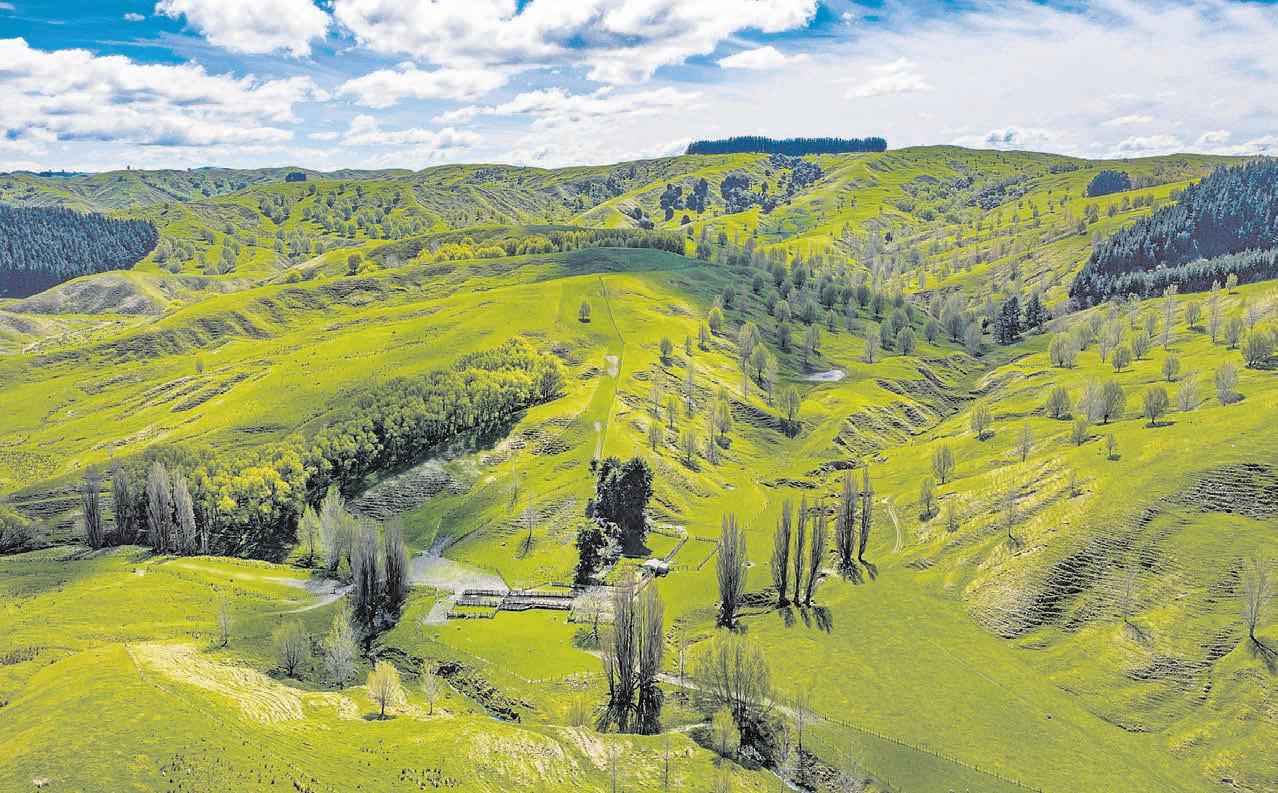
Central Hawke's Bay 683 Bush Road, Wallingford
1,083 hectare breeding/finishing property
The Estate of AW Parsons offers a genuine sheep and beef breeding/finishing property Situated 37km southeast of Waipukurau with the school bus at the gate only 24km to Flemington Primary School Currently run as one unit the estate is split into three separate blocks The main landholding of 869ha provides the easy to medium/steeper breeding platform with a very good standard of fencing, subdivision and laneways Three large dams form the source of the extensive reticulated water system Improvements include the four bedroom manager’s residence, staff accommodation, and a four stand woolshed complex The 43ha bottom finishing block of flat to easy contour includes cattle yards The Awahiwi Road block of 169ha can be purchased separately to the main farm and comprises easy contour, sheep and cattle yards, and an all weather airstrip bayleys co nz/2854191
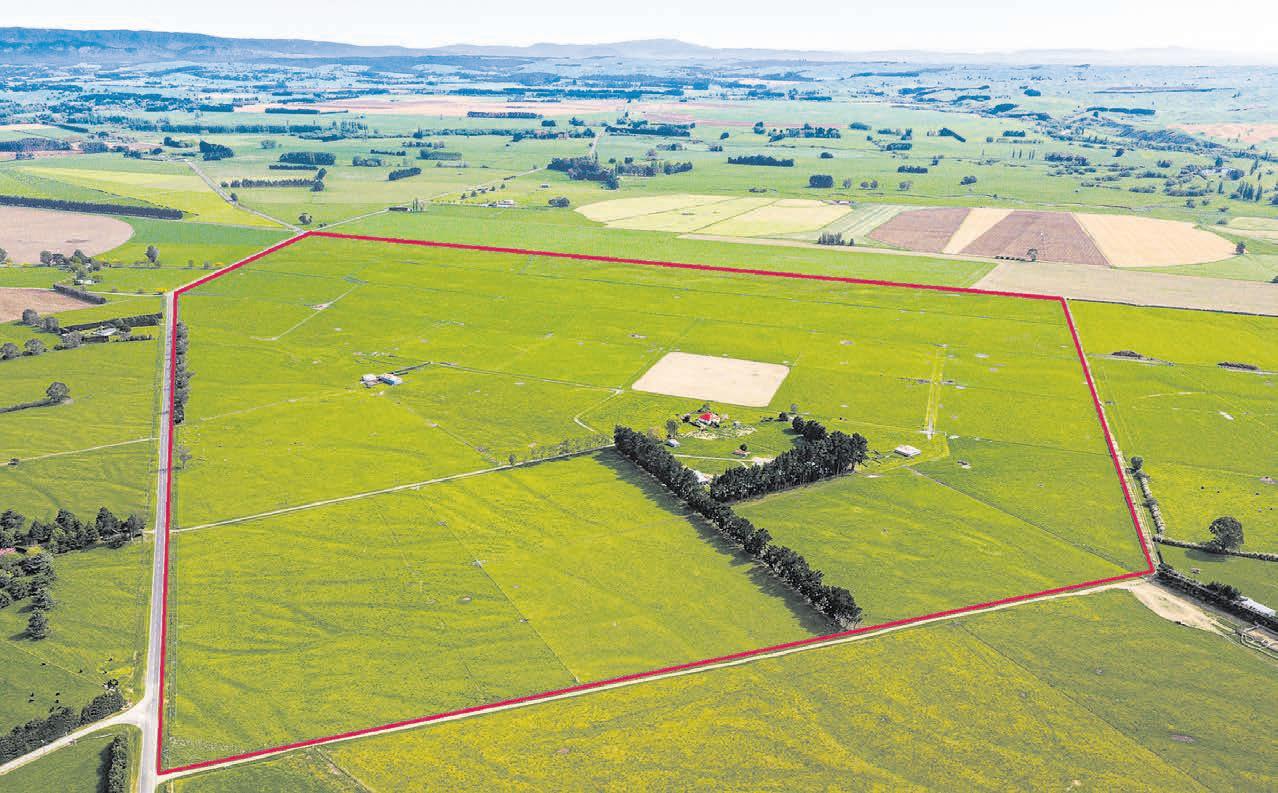
Quality 126ha deer, finishing and cropping farm
An easy commute by plane or car, this luxurious small farm would be perfect for a professional couple working from home Located only 13km west of Waipawa township and 73km south of Hawke’s Bay Airport is this versatile, flat farm which boasts a fully refurbished, three bedroom villa and several implement sheds and a deer shed The quality of the workmanship on the beautiful character villa, from the new kitchen and bathroom, open plan living area to the ensuite and walk-in wardrobe off the master bedroom, and the native floorboards, combine beautifully with a modern finishing Approximately 80ha have been historically cropped in peas and maize Currently running breeding hinds and progeny, velveting stags, and trading cattle Approximately 74ha is fully deer fenced into 24 paddocks with an extensive laneway system making this an easy care operation bayleys co nz/2854231

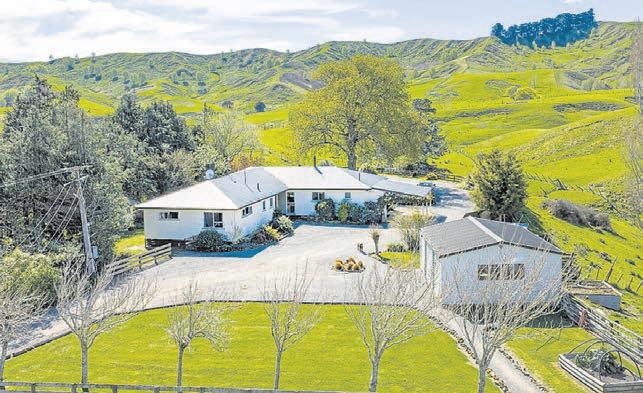
1,083 ha
Tender Closing 4pm, Thu 20 Nov 2025 15 Havelock Road, Havelock North View by appointment
Andy Hunter 027 449 5827 andy hunter@bayleys co nz
Tony Rasmussen 027 429 2253
tony rasmussen@bayleys co nz EASTERN REALTY
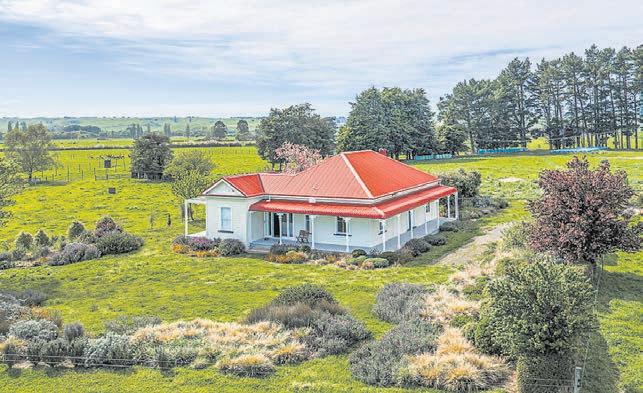
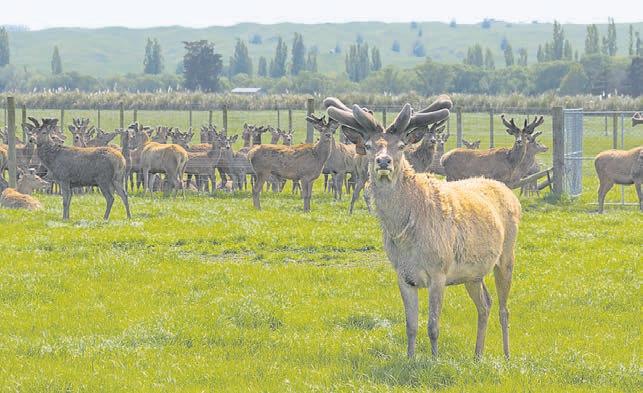
Auction 12pm, Fri 28 Nov 2025 15 Havelock Road, Havelock North View by appointment
Tony Rasmussen 027 429 2253
tony rasmussen@bayleys co nz
Andy Hunter 027 449 5827 andy hunter@bayleys co nz
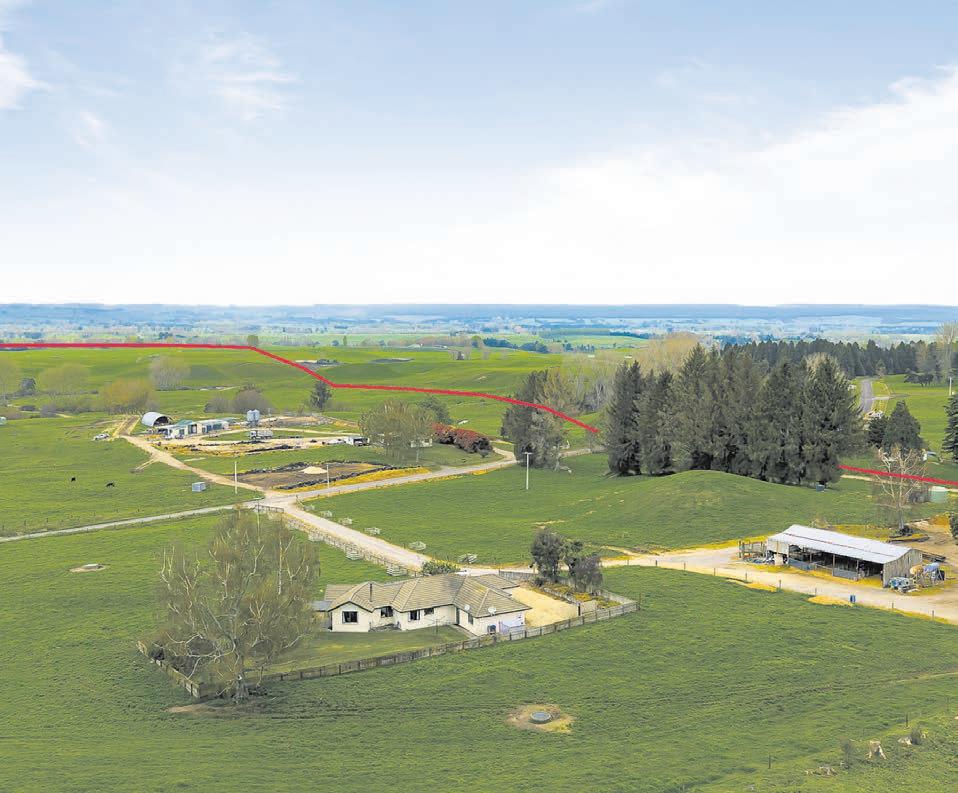
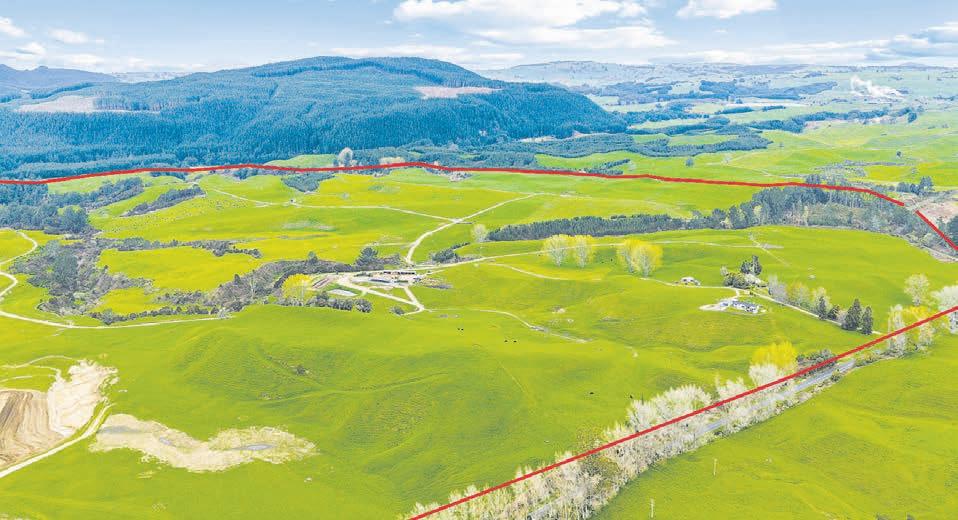
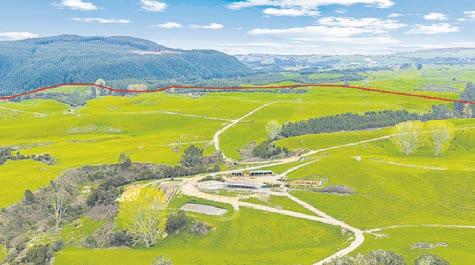


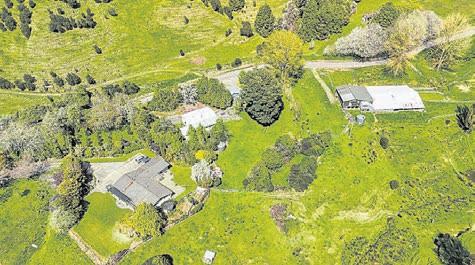
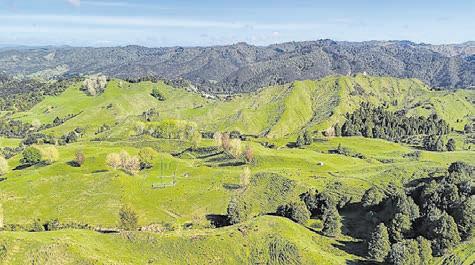
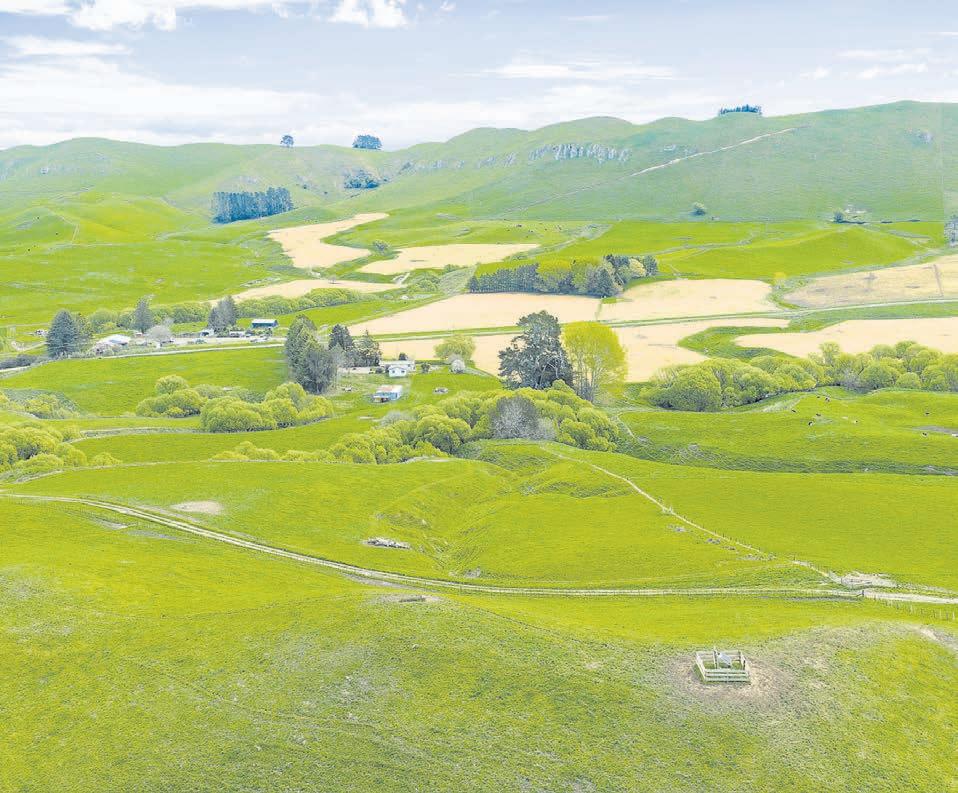

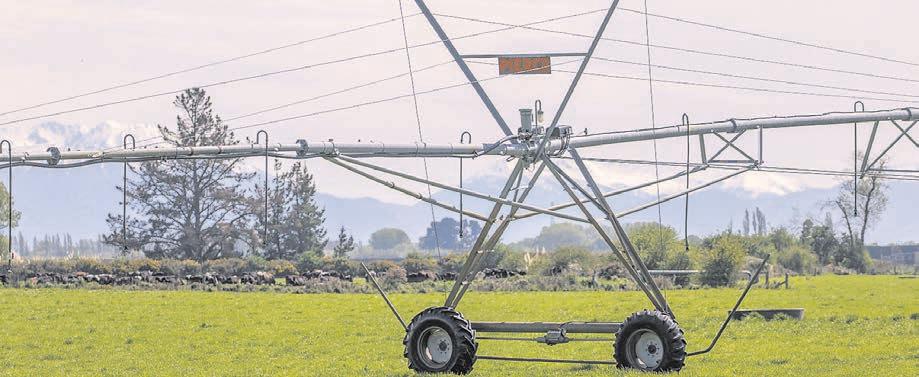


bayleys co nz/5528392


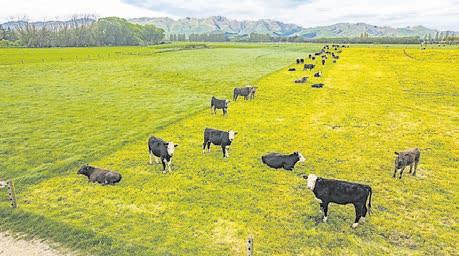
Coastal Taranaki Dairy Opportunity
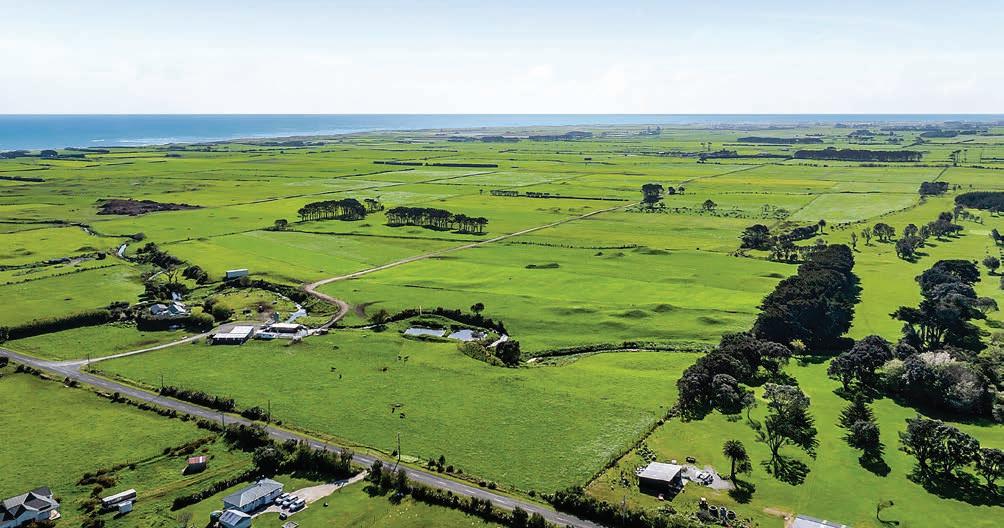
Coastal Taranaki Dairy Opportunity – Productive, Proven, and Versatile
Namu Road, Opunake
Located on the lush coastal flats of Taranaki, this exceptional dairy property offers consistency, fertility, and flexibility. Producing around 90,000kg of milksolids annually and consistantly with lease, this well-established operation sits on fertile, free-draining land that performs season after season.
The property features an in-shed feed system for both meal and molasses, supporting efficient production and herd health. Infrastructure is practical and well-maintained, designed for ease of management and reliability.
A spacious four-bedroom family home provides comfort and rural charm, making it ideal for those seeking a balanced farming lifestyle. Alternatively, the farm can be purchased as part of a runoff option with out the house offering flexibility for neighbouring or expanding farmers. Just minutes from the coast and within easy reach of local services, this farm combines strong production figures with an enviable lifestyle setting. With Taranaki’s iconic mountain as your backdrop and the ocean just beyond your boundary, this is the perfect blend of productivity and peace.
Whether you’re looking to continue dairy operations or secure a reliable runoff block with a quality home, this property delivers on every front.
Contact us today to secure your slice of proven Taranaki performance.
OPEN FARM: Thursday 6th Nov, 13th Nov, 20th November 12.30pm-2pm 189 Namu Road, Opunake
Tenders close 4pm, 28th November 2025 at the offices of Matthew & Co Real Estate


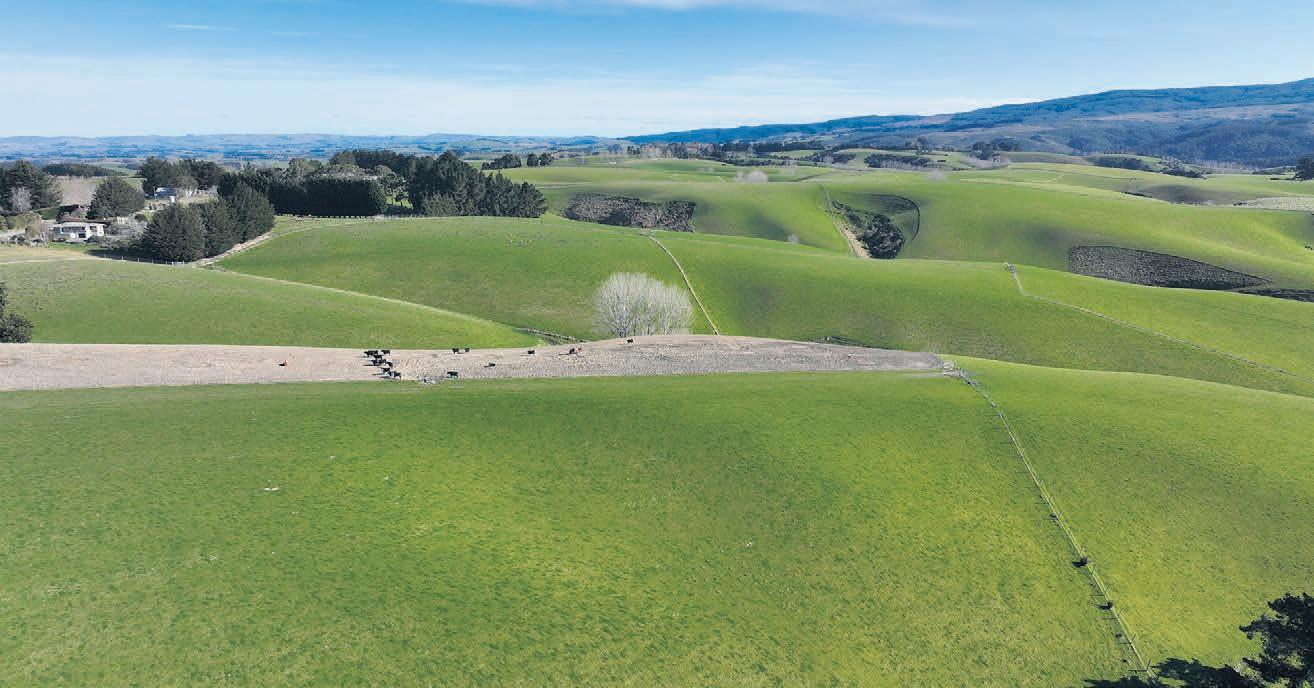
TUAPEKA WEST 1628 Tuapeka West Road and 275 Bush Road
Versatile Sheep and Beef Property
This well presented fertile 370 hectare property is predominantly wintering R1 and R2 Angus X steers plus 1,450 Romney ewes. Excellent stock water via the Tuapeka rural water scheme (22 units) and a current winter grazing consent provides assurance for the new owner. Key improvements feature two homesteads, quality farm infrastructure includes a three stand wool shed, covered yards and substantial cattle yards.
The property is well subdivided into 84 paddocks with a very good fertiliser history, quality free draining soil type provides excellent cattle wintering capabilities. The farm presents excellent scale and efficiency as a single unit, while offering the option to be sold as two separate titles.
Option 1 - 370 hectares - Total Property
Option 2 - 210 hectares - 275 Bush Road
Option 3 - 160 hectares - 1628 Tuapeka West Road
This is an opportunity to secure a versatile farming asset with strong fertility and infrastructure.
pggwre.co.nz/DUN42150

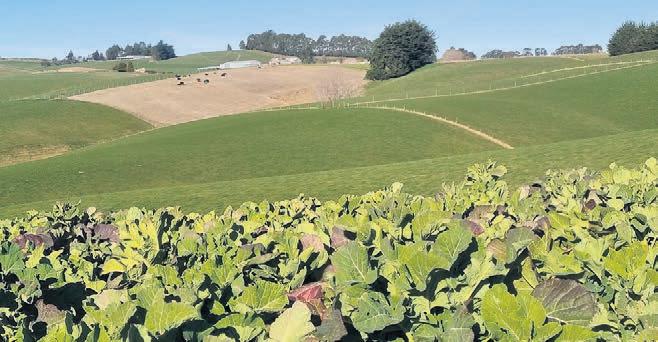
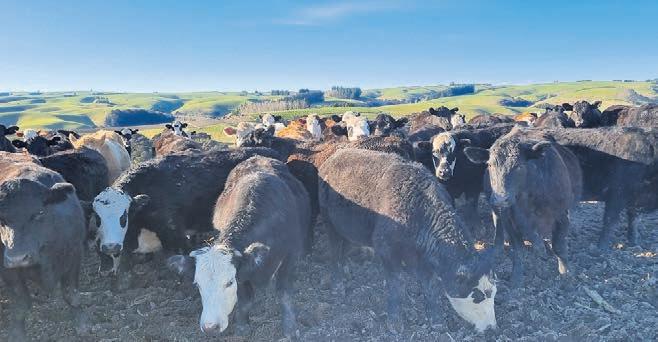
4 1 1
DEADLINE PRIVATE TREATY Plus GST (if any) (Unless Sold Prior)
Closes 12.00pm, Thursday 27 November VIEW By Appointment Only
Jason Rutter
M 027 243 1971
E jrutter@pggwrightson.co.nz

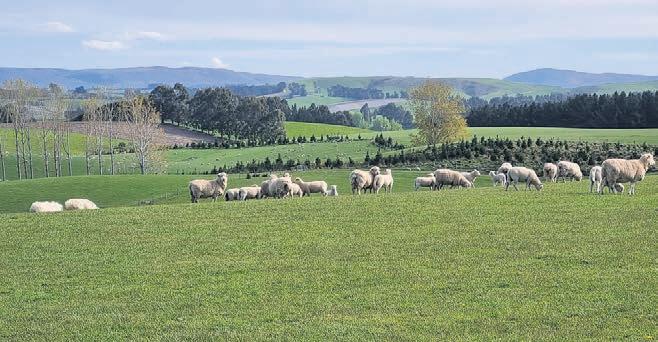

and woolshed covered yards
Option 3: 186ha (STS) with second home
Situated in the summer safe Wharetoa district of South Otago in a proven dairy farming area is this exceptional property faithfully farmed by the Shaw family since 1966 and until recently home to the renowned Wharetoa Genetics. An easy contoured versatile property including excellent fertility with impeccable livestock performance and production. 90 main paddocks with rural water scheme. Excellent access by county road and extensive internal lane system.
Spacious four bedroom brick homestead plus a three bedroom home built in 2014. A quality finishing property extensively developed by the Shaw family who have very passionately achieved excellence in farming since owning Wharetoa farm. 4 1 2
027 243 1971 Jason Rutter
PRICE BY NEGOTIATION Plus GST (if any) VIEW By Appointment Only E jrutter@pggwrightson.co.nz


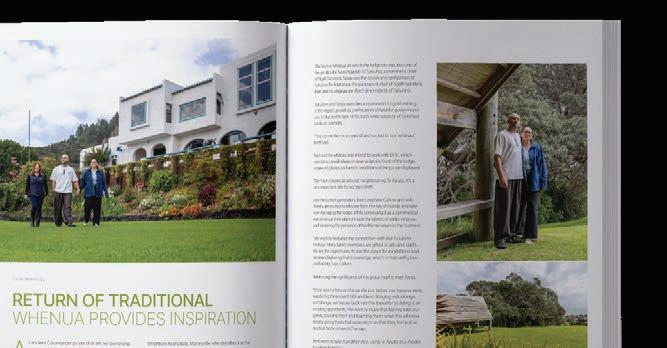
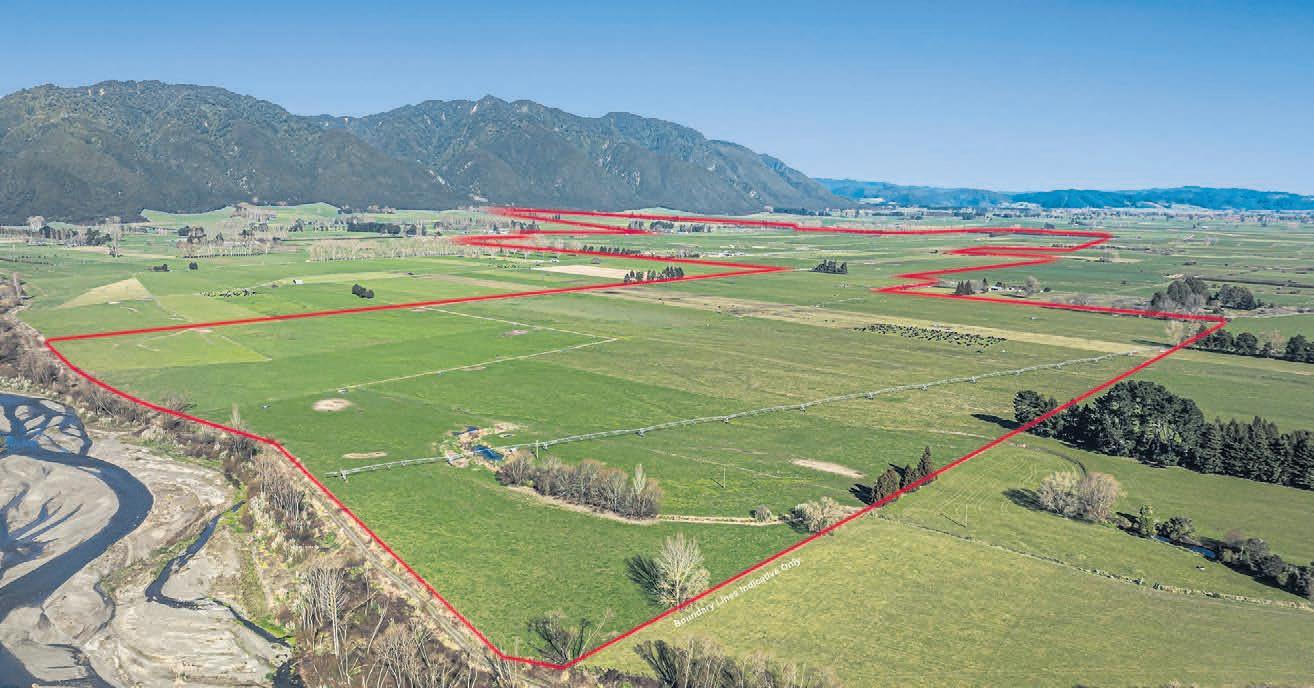
GALATEA, BOP 436 Haumea Road and 1035 Troutbeck Road
369.56 Hectare Dairy Unit, Irrigated
On offer is a dairy platform of 369.56ha, milking 1250 cows, with 258ha’s under irrigation, covered by six centre pivot structures with water supplied from 3 bores under a new ground water consent granted until September 2040 to add to your dairy investment portfolio. 360ha effective milking 1250 cows
• 2023 – 2024 seasons production was 484,973kg MS, (52ha irrigated production)
• Irrigated area of 252ha (more or less) under 6 centre pivot irrigators
• Ground water resource consent compliance in place until 2040 Recent upgrades to effluent systems with lined storage ponds
Effluent discharge resource consent compliance in place until 2038 for 1250 cows
1 x 36 ASHB & 1 x 40 ASHB dairy sheds & a full range of support buildings
• Excellent fertilizer history with consistent application
• Five homes and a self-contained unit, all to Healthy Home Std It’s all here with large scale and must be a consideration if you have been looking for a property to add to your dairy investment portfolio.
pggwre.co.nz/WHK42189
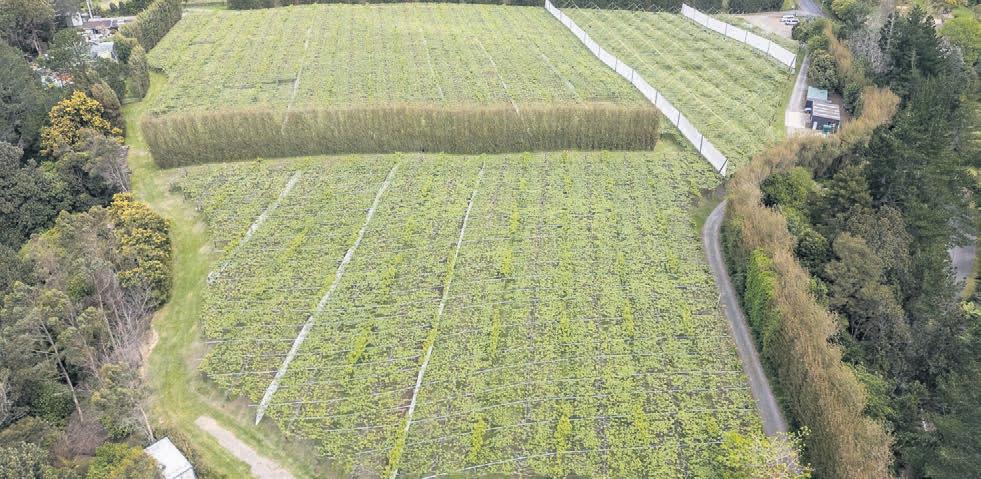
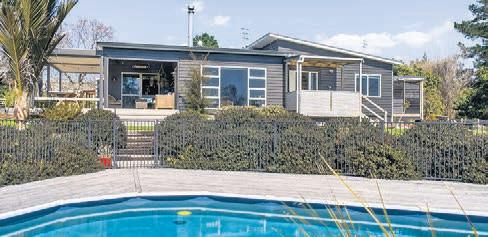
TE PUKE, BOP 121A No 4 Road
Sitting Pretty
• 3.19ca ha of north facing G3
• Consistently achieving early start
Strip male with Ag-beam Solid canopy infrastructure
• Multiple large concrete floor high stud sheds
• Large modern home with pool suits multi generational living Sale includes all 2026 crop proceeds

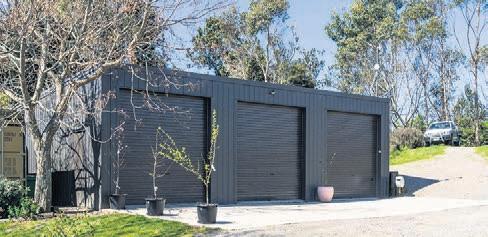



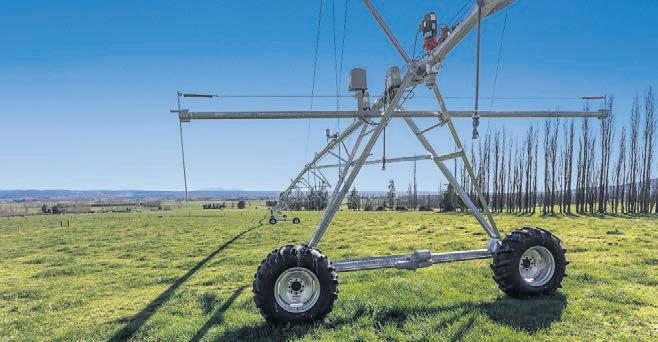
TENDER Plus GST (if any) (Unless Sold Prior)
Closes 4.00pm, Friday 21 November
VIEW 11.00-1.00pm Tuesday 4 November
M 027 494 1844
E pgoldsmith@pggwrightson.co.nz



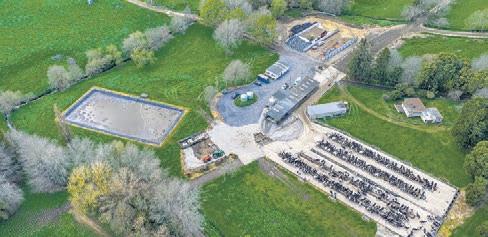
KARAPIRO, WAIKATO 4/366 Karapiro Road
Premium Cambridge Further Opportunities
Massive possibilities abound with this 168.4889 hectare (more or less) farm, 12km from Cambridge. The rolling contour and neighbouring land use changes highlight the farms versatility, with use for conversion to dry stock, equine, kiwifruit, or lifestyle development. Confirmation of six (6) Environmental Benefit Lot entitlements in exchange for the protection of a total of 16.38 hectares of bush and restoration areas is a key element with this property given its fantastic locality. elevated immaculately presented four-bedroom homestead, built in 2010 and recently refurbished.
Plus GST (if any) (Unless Sold Prior) Closes 3.00pm Thursday 13 November VIEW 10.00-12.00pm Monday 3 November
Peter Wylie
E pwylie@pggwrightson.co.nz M 027 473 5855
Richard Wright












N E W I S S U E O U T N OW! SCAN TO READ ONLINE
re
i n fo r m yo u r p ro p e r t y j o u r n e y - w h e t h e r yo u’re b u y i n g o r s e l l i n g.
“AORANGI” PUNCHING HILL COUNTRY

PRIVATE SALE
Walk in and farm opportunity
• 734ha/640ha effective
• Well-presented and well-developed clean hill country just 25 minutes east of Pahiatua in the sought after summer safe Makuri district
• Award winning farm
• Wintering 5500su
• Over 30km of new 8 wire fencing in the last 12 years
• Comfortable 4-bedroom home set in well-tended grounds
• 4 Stand woolshed / 1400-Night pen
Price $5,800,000 +GST if any Trade Me Reference: 5573456205
Contact: Mathew Prior 027 844 1766 or Marilyn Prior 027 876 9179 mazandmatt@yahoo.com


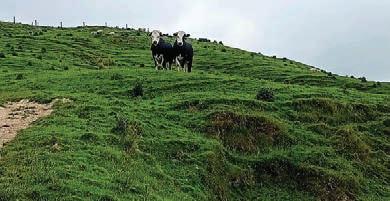

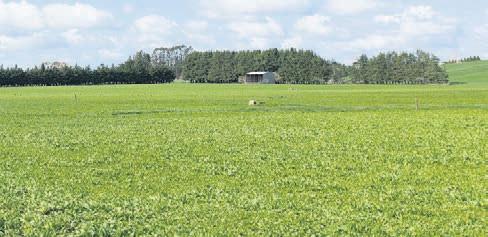


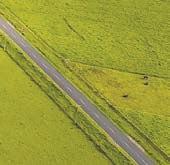





Rangiwahia 395 Te Para Para Road
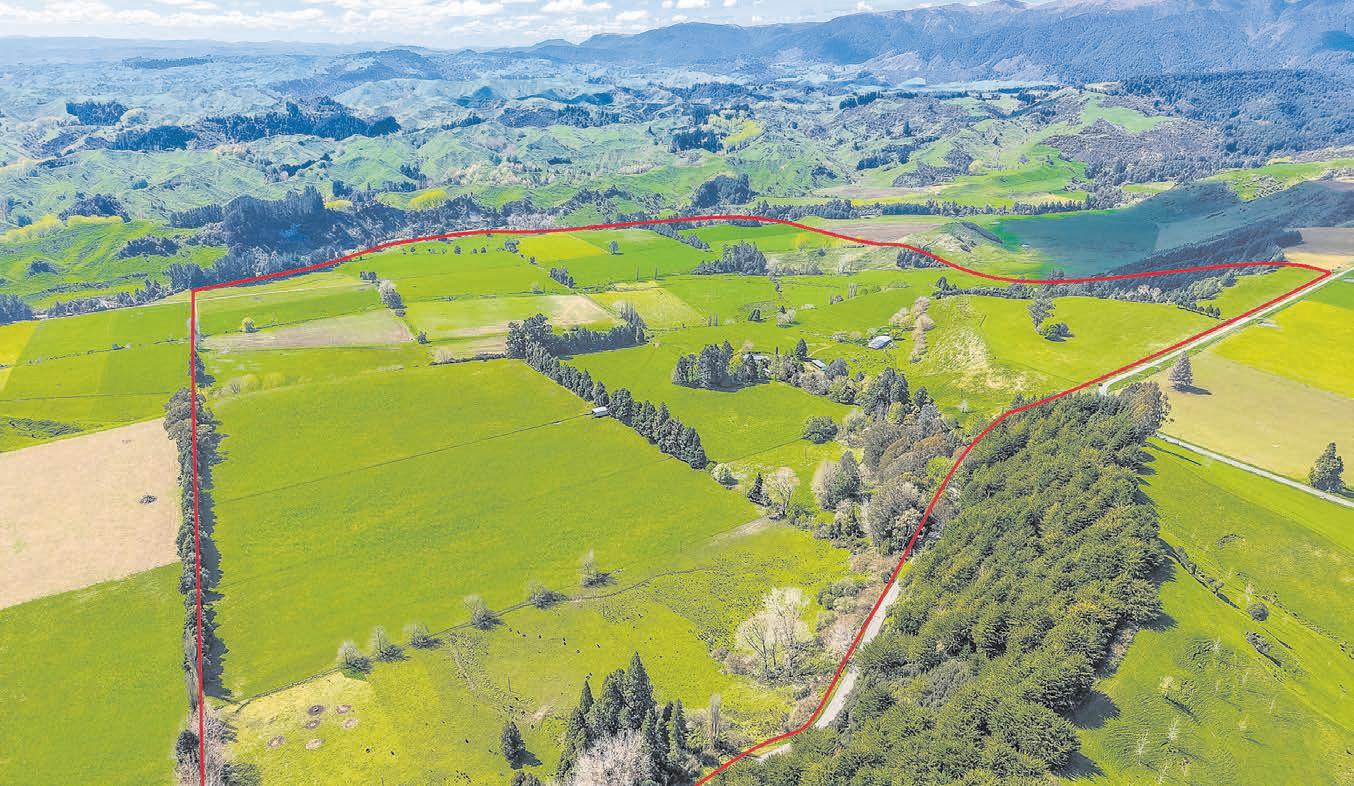
Productive
farming with strong infrastructure
395 Te Para Para Road offers an exceptional opportunity to secure a highly productive 161 ha property in northern Manawatu renowned Rangiwahia district, just 45 minutes from Feilding and Taihape. Combining fertile Kiwitea loam soils with over 100 ha of cultivable land the property balances productivity with scenic appeal, including a nationally recognised arboretum. The remaining rolling to medium hill country features strategic native and introduced plantings, effective drainage, and regular fertiliser applications. Infrastructure includes a four-bedroom home with open-plan living and double garage, a three-stand woolshed with covered yards, a new four-bay pole shed, two hay sheds, and quality cattle yards. Reticulated spring water, sound subdivision, and an efficient track network enhance operations Currently leased until May 2028, this versatile and well-developed farm presents an excellent investment in a soughtafter farming district.
Eketahuna 886 Kakariki Road
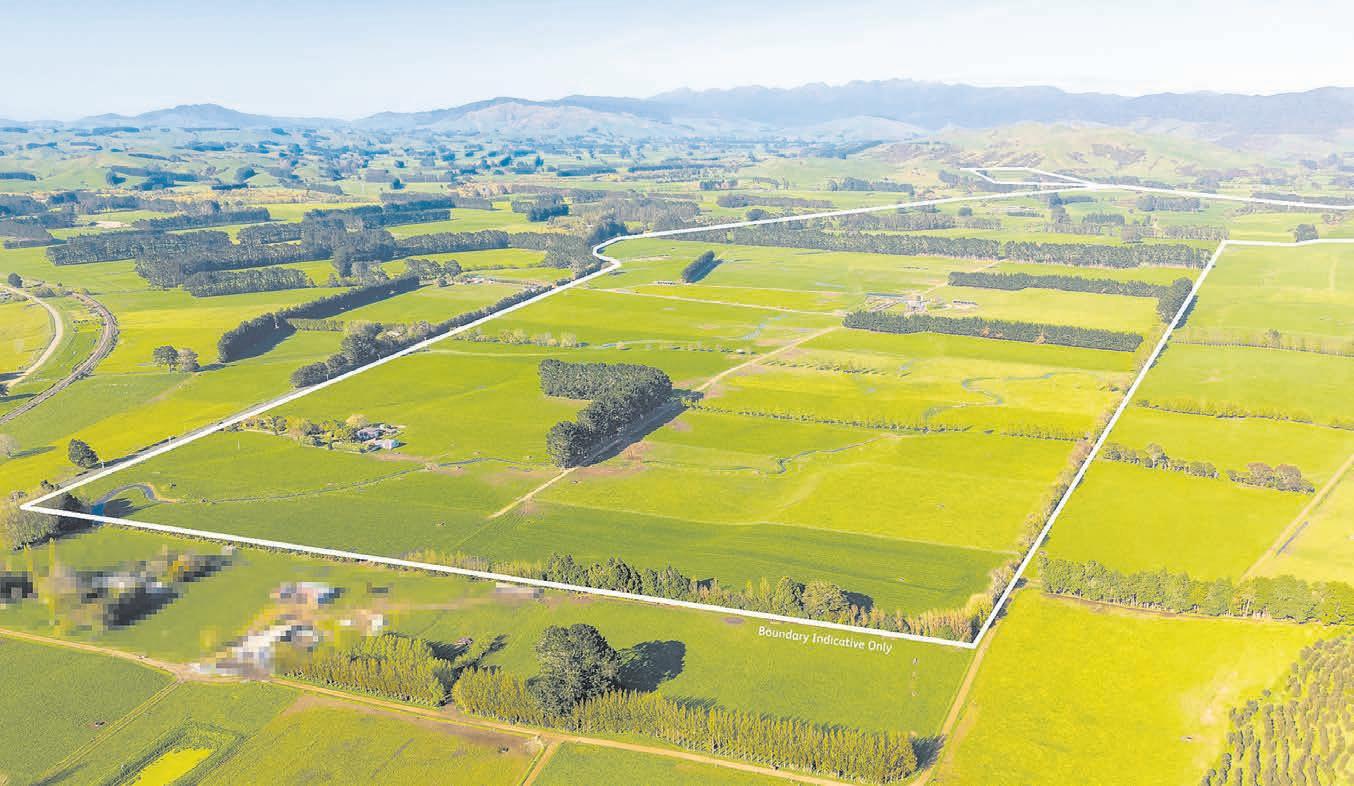
Glenbrook - 269 ha
- Multiple purchase options
Tender


Auction 1.00pm, Tue 2nd Dec, 2025, 240 Broadway Ave, Palmerston North View By appointment Web pb.co.nz/FR209970


Blair Cottrill M 027 354 5419 E blair@pb.co.nz
Ted Shannon M 021 833 536 E ted.shannon@pb.co.nz
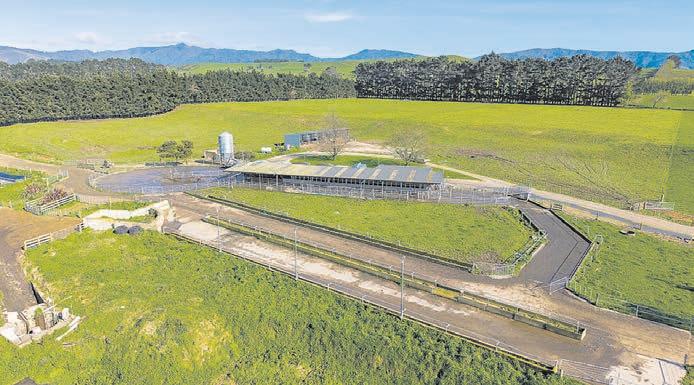
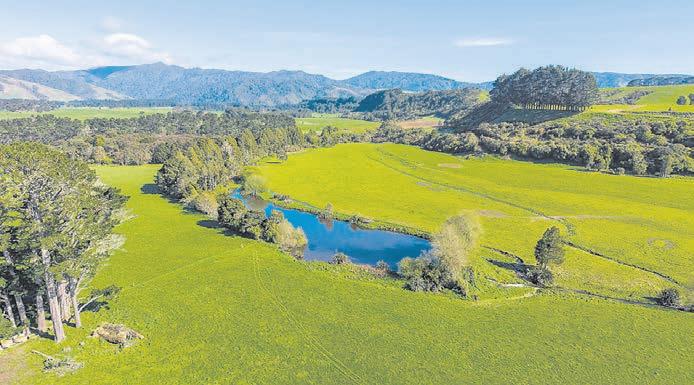
A rare opportunity to acquire a well-established 269 ha dairy farm in the sought-after summer safe Hukanui farming district just south of Pahiatua. Glenbrook offers scale, excellent infrastructure, multiple dwellings and free draining fertile soil types. Originally an amalgamation of several properties, Glenbrook features two herringbone (32 and 36) dairy sheds both with modern plant, feedpad, loafing area and excellent shedding. There are a total of four dwellings on the property with the main home on a separate title offering purchase options With production around 1000 kgMS to the ha and purchase options for dairy units from 80 ha through to the property in its entirety, Glenbrook provides for first farmers, expanding sharemilkers or relocating entities looking for a reliable farming environment.
Tender closes 2.00pm, Wed 3rd Dec, 2025, Property Brokers, 141 Main Street Pahiatua View By appointment
Web pb.co.nz/PR208720


Jared Brock M 027 449 5496 E jared@pb.co.nz
Bevan Bisset M 027 465 9651 E bevan.bisset@pb.co.nz
Scan for more
Tender
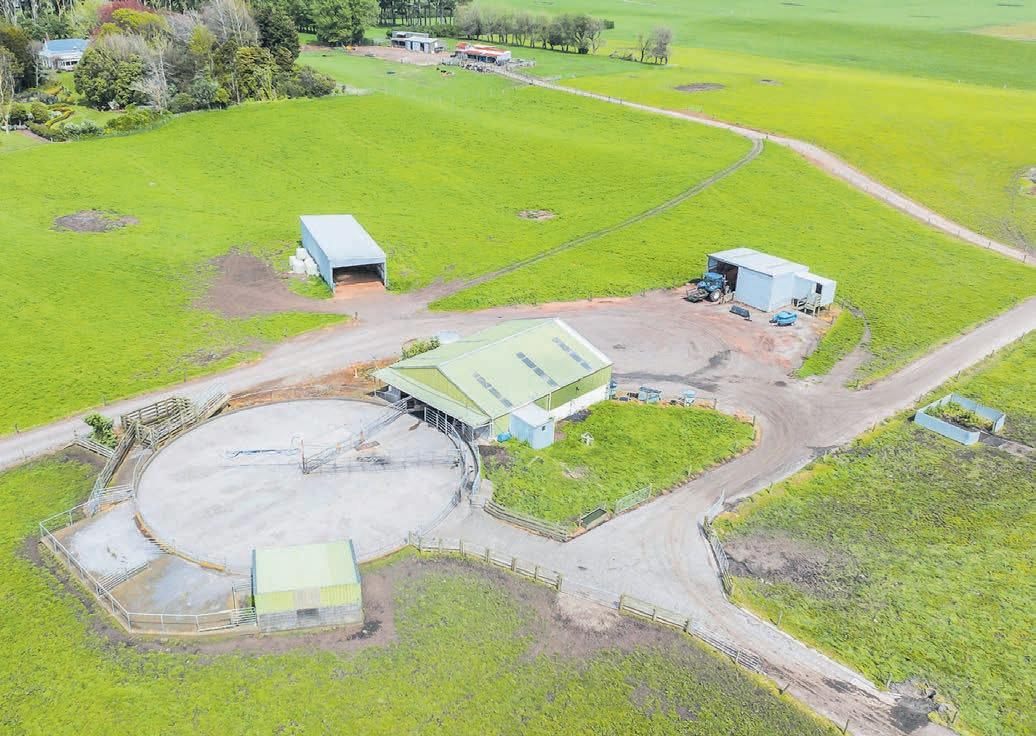
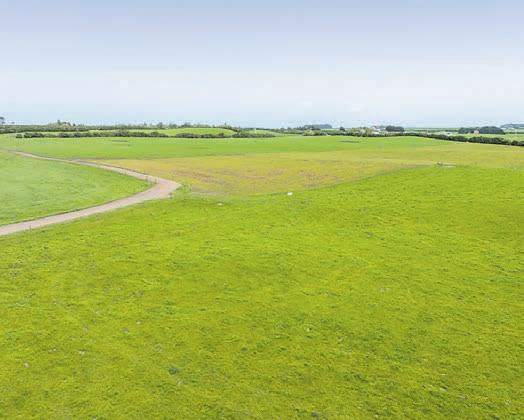
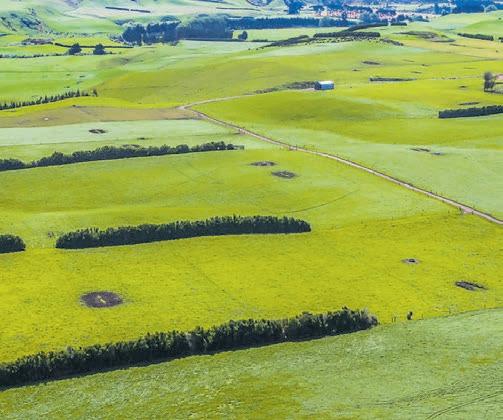
PRIME LOCATION DAIRY FARM
103 Wirihana Road, Hawera
Tender Close 1pm, 27th November 2025 at our offices (unless sold prior)
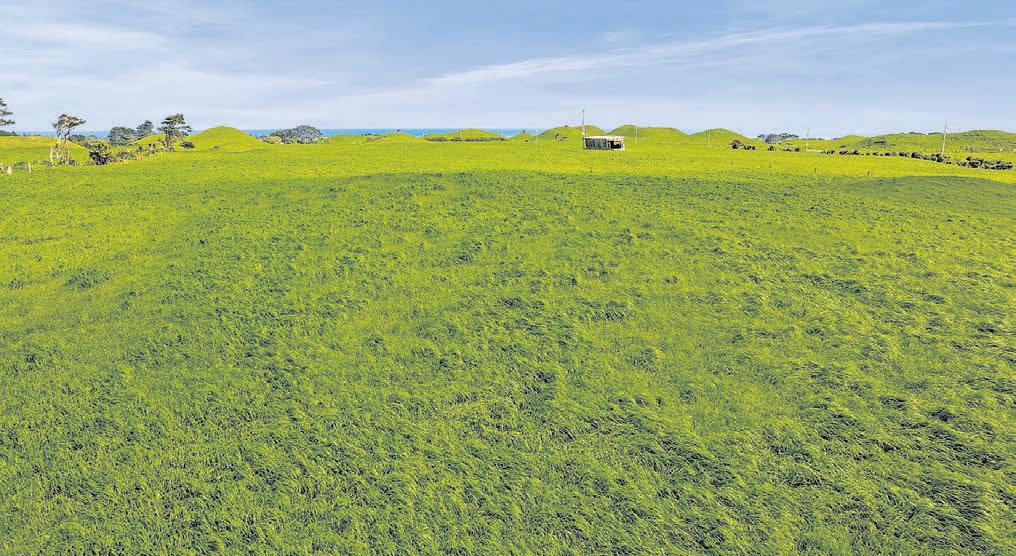
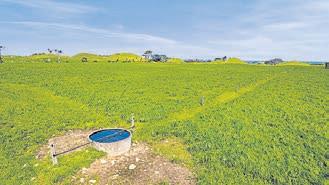
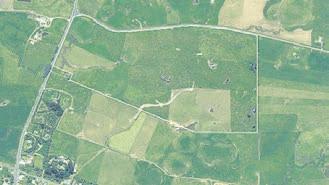





4 3 2 116.30 ha
This is the one you have been waiting for - we proudly offer you this well known top producing, top location property of 116.3 hectares (287 acres), approx 3 km from Hawera township It has been & is still a much admired property on strong Egmont Brown loam soils with production averaging 130,000ms per annum Faithfully farmed for many years with all sharemilkers moving on to purchase their ´first farm´. Centrally raced, for ease of stock flow to the 36 Bail Rotary Cowshed 27 hectares effluent irrigated underground and 310-320 Friesian cows - 80 calves on until May The large 4 Bdrm homestead has been modernised for todays living with ensuite & attached garaging set in magnificent established gardens The second 2 Bdrm + sleep out home is located handy to the cowshed This desirable property has both Wirihana Road access, off the well known Ketemarae Road and the Paora Road also coming off the Ketemarae Road A special property with so much to offer
Pam Hamerton
027 476 6775 pamh@fntaranaki co nz
Brendan Crowley
027 241 2817 brendan@fntaranaki.co.nz
Open Farm



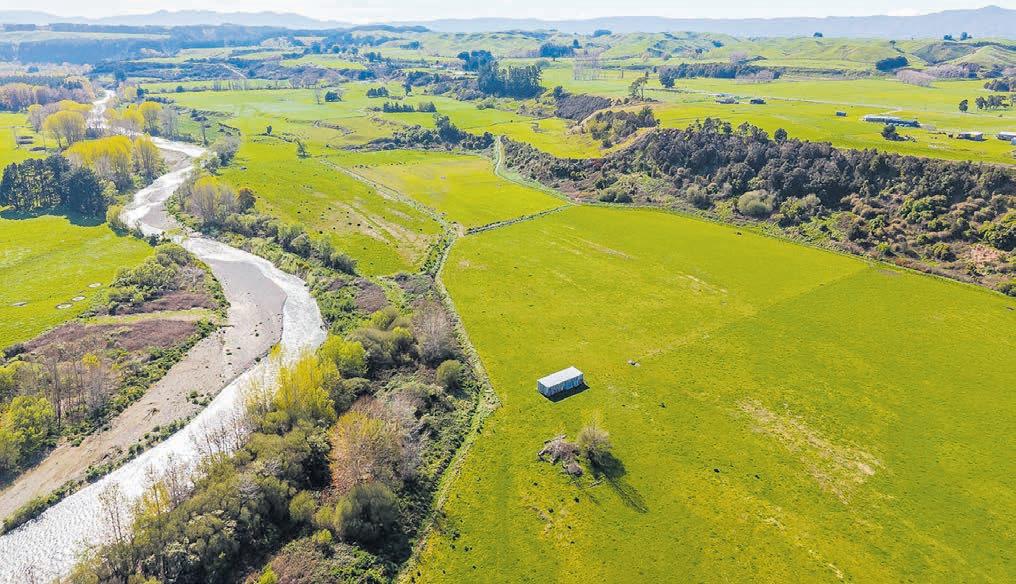
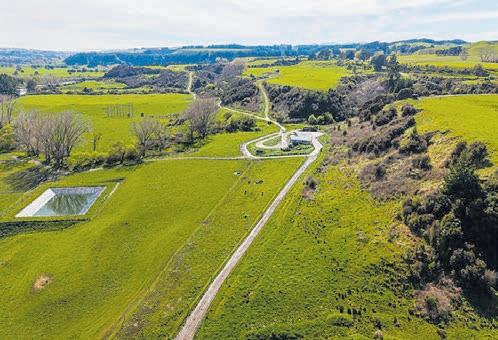
243 Te Awa Road, Kiwitea
Potential is the word that defines this 122-hectare dairy farm in the sought-after Kiwitea district of the Manawatu. With 125ha of adjoining lease land there is genuine scope to significantly lift production. Near new 4brm home. Consented for 400 cows to 2049. rwfeilding.co.nz/FEL30503







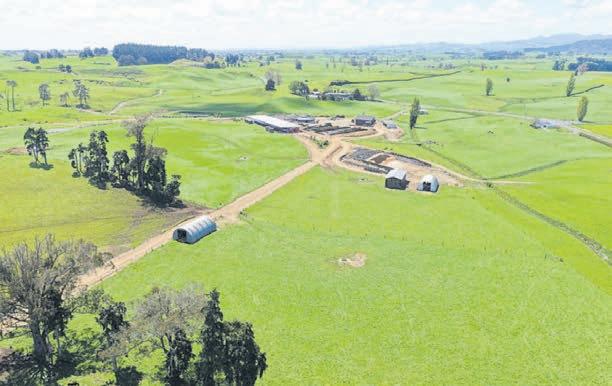

• 664 Ngahape Road, Ngahape, R D 3, Te Awamutu
• 210 58 hectares - 5 titles; attractive with a scattering of mature specimen trees
• flat to easy rolling contour with some sidlings
• soil types include free -draining mairoa ash + heavier soils in lower lying areas
• v g water reticulation sourced from deepwell bores + roof collection of rainwater
• substantial homestead, 3 brm + office, modernised with ensuite, new kitchen & bthrm; attached triple gge; dble basement gge; pool + tennis court; sep new dble gge/storage
• 3 additional dwellings for farm support families
• approx 900 cows currently being milked: 750 spring calving cows, 100 autumn calving cows; 50 in -milk carry-over cows
• production 2024/25: 427,670 kgs milk solids, 3 year average: 418,657 kgs milk solids
• 50 bale rotary dairy shed; auto cup removers; Protrack system for auto drafting, heat detection etc ; adjoining 400-cow covered feed pad with flood wash system; quality effluent system with solids separation & large lined effluent pond; v g implement sheds & calf rearing facilities; lge concrete silage bunkers for maize & imported feeds
• excellent lo cation with easy access to a range of options for schooling

Larger Scale Dairy
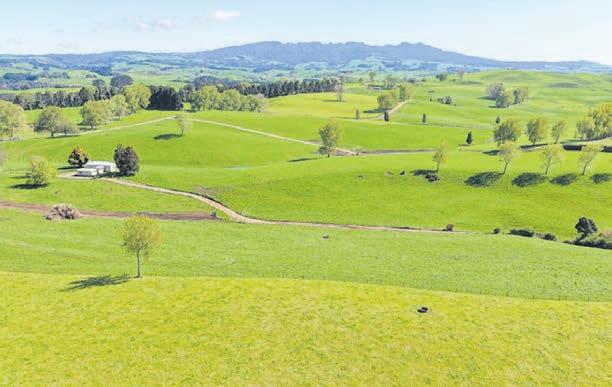
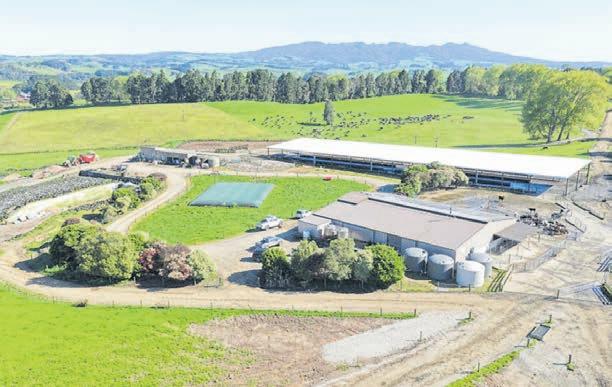
• 3 x large concrete silage bunkers; variety of utility shedding
•
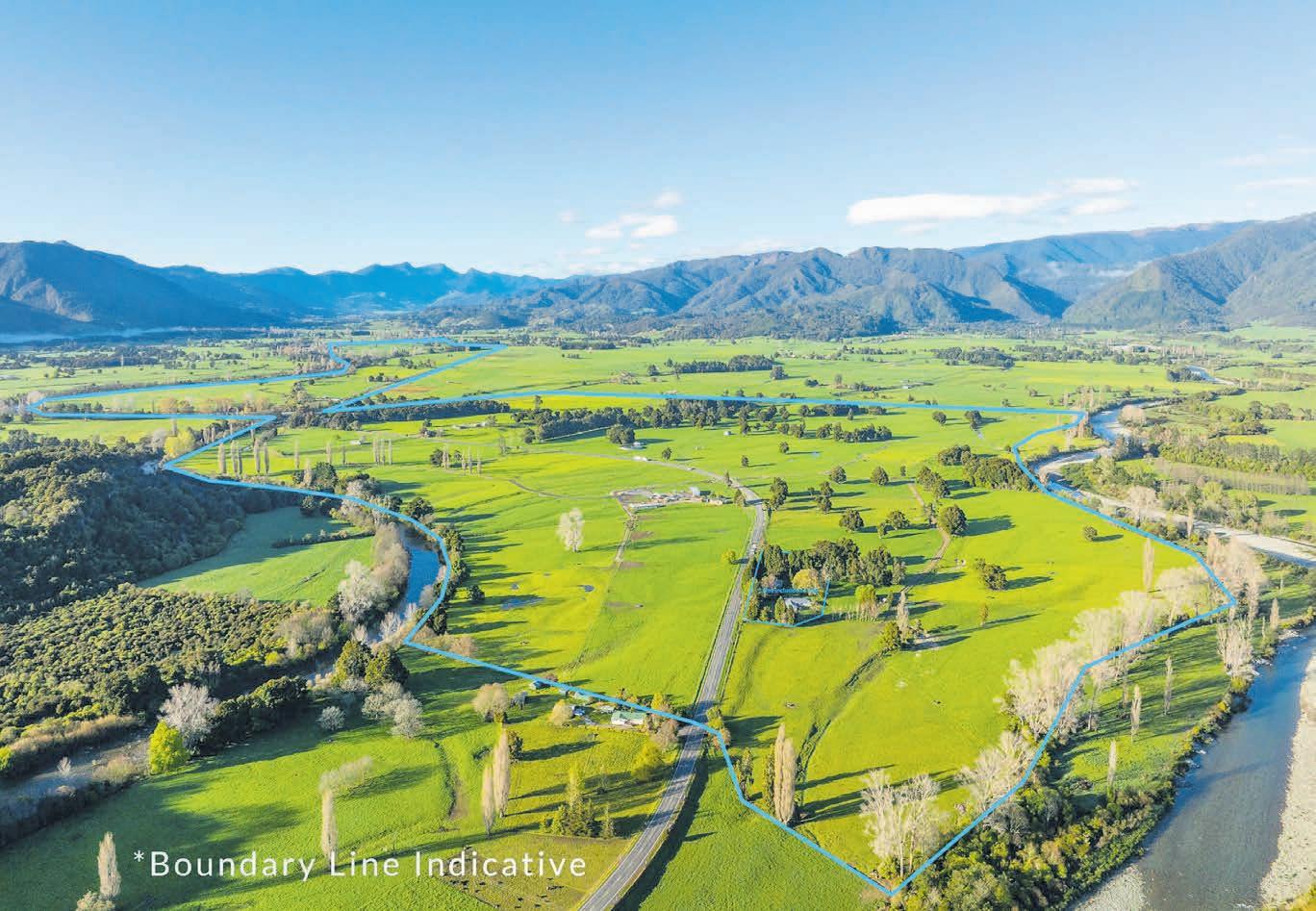
East Takaka, Takaka Valley Highway
Proven Dairy Performer - Cream of the Crop Spread across approx 294 ha in the highly regarded Takaka Valley, this top-performing dairy unit boasts 5 homes, 3 cow sheds, and a 3-year average of 214,617 MS from 550 cows Flexible purchase options include the full block, the 194 ha milking platform, or the 100 ha support block Underpass, irrigation consent, and robust infrastructure make this a future-ready operation Whether expanding, investing, or stepping into a premium farm, this is your chance to secure a serious asset

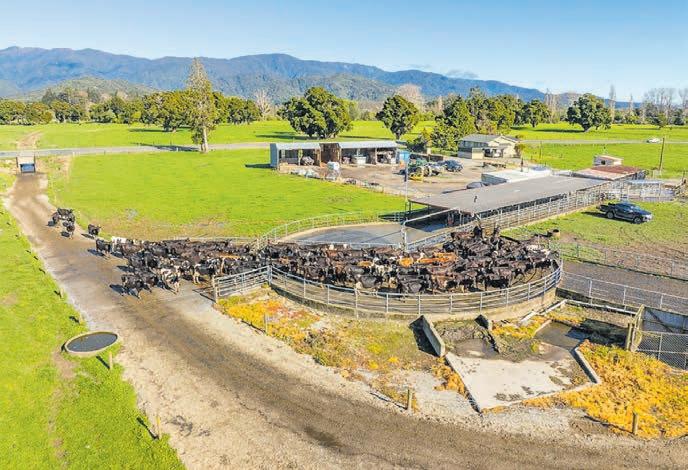
Tender (No Prior Sale) Closing 1pm, Wednesday 19th November View by appointment www harcourts co nz

Toby Randall 027 233 9170
toby randall@harcourts co nz
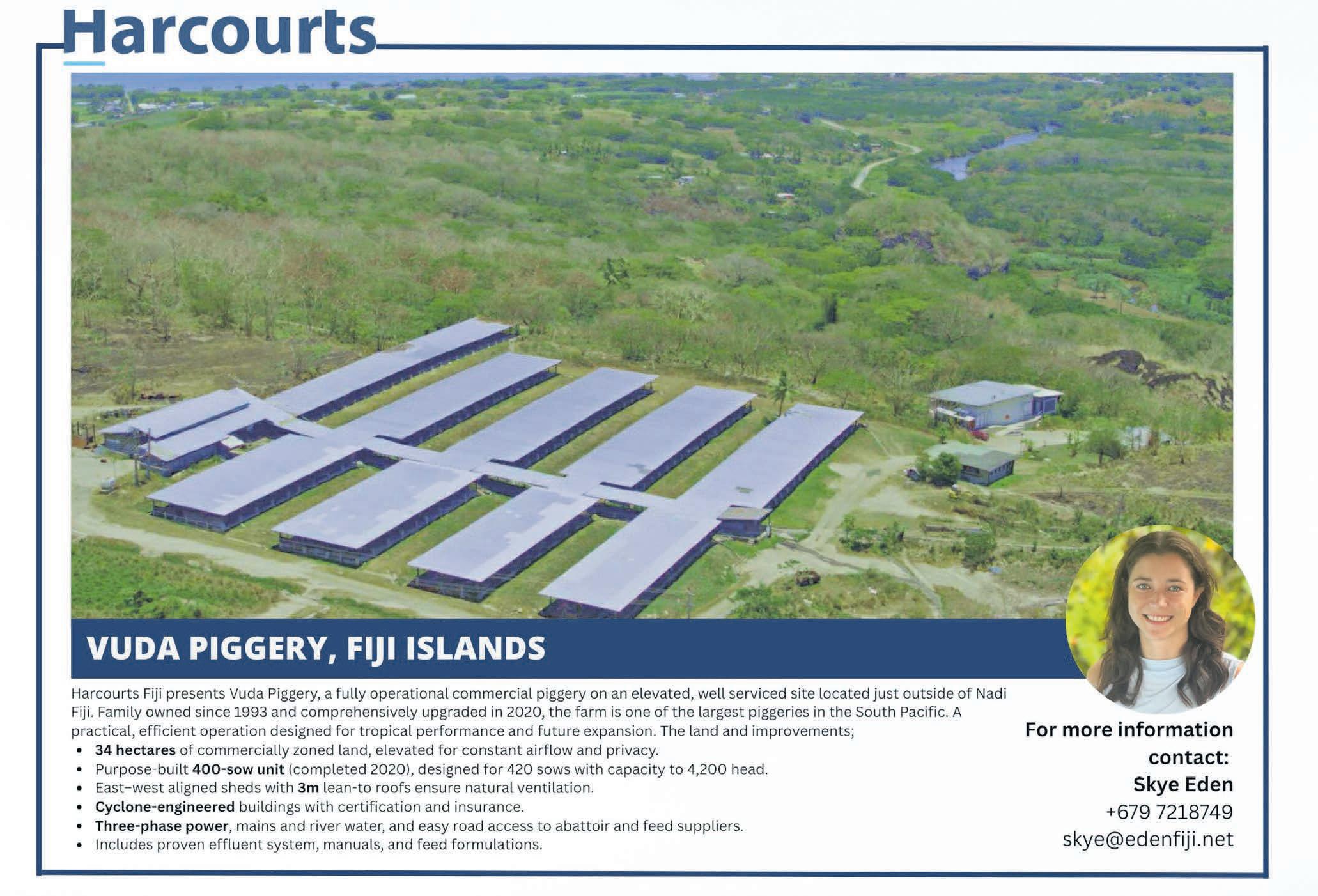


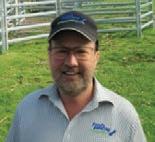
TOURS


Tour 1: Molesworth Station, St James, Mailings Pass & Rainbow Stations

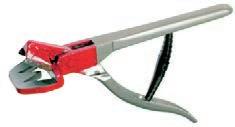
CENTRAL NORTH ISLAND
Taurewa Station
Te Kotahitanga o Ngāti Tūwharetoa
• 2,550 effective hectares, 20,000+ Stock units sheep, cattle and deer
• Flat to easy rolling ash and pumice soil. 35km from Turangi and 15km from National Park



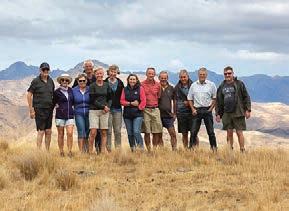
Dates Feb 8-12, Feb 23-27, March 16-20 Molesworth
Dates Feb 2-5, Feb 16-19, March 13-16, March 23-26, April 8-11, April 17-20
Tour 2: North Otago Tag-along Tour
Well developed with full facilities including 4 dwellings,1100ha deer fenced, approx. 220 paddocks, reticulated water throughout
• 6 years from 1 June 2026
Potential for longer term relationship with compatible tenant
• Joint inspections proposed 1pm Tuesday 11 November and Wednesday 19 November Information Pack with basic lease terms & Conditions, proposal requirements and Inspection details available from:
Rob Gollan – Farm Consultant, Whanganui Email: rgollan@xtra.co.nz | Ph:

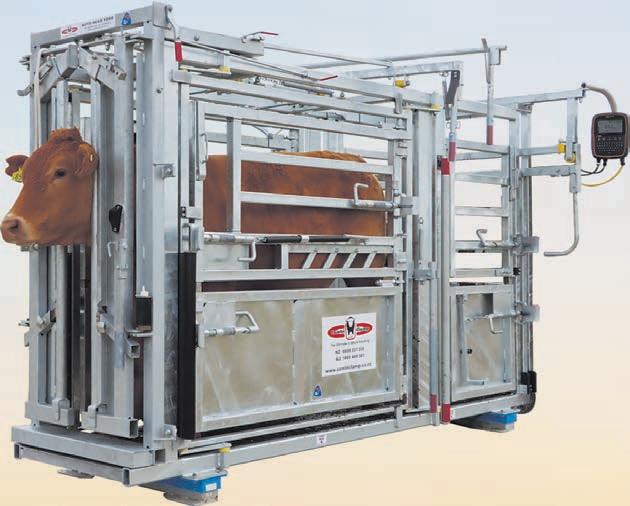
If you want peace of mind when it comes to your young stock, we are the people to see. Operated by a dairy farmer who understands the importance of growing the future of your herd to their potential, giving them the best start at calving. We have the facilities to
and track growth and will work with you to formulate an animal health plan. Located near Upper Hutt, we offer competitive rates and have an open gate policy.
To discuss your grazing requirements today phone (027) 233 1274 or email: totararoaddairies@outlook.com











Hooftrimmers - Dehorners - Ear Markers - Zon Birdscarers

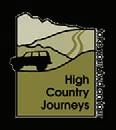


































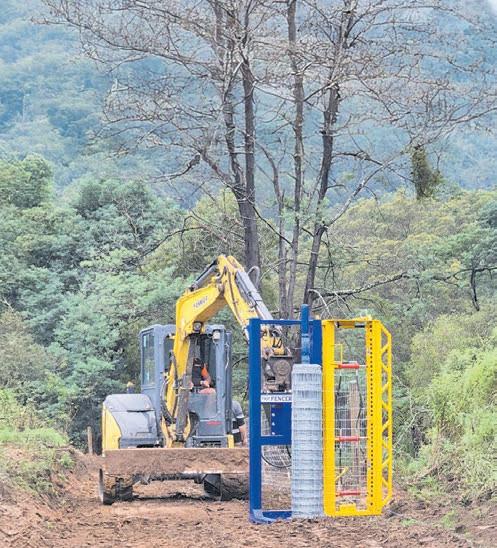








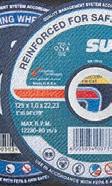


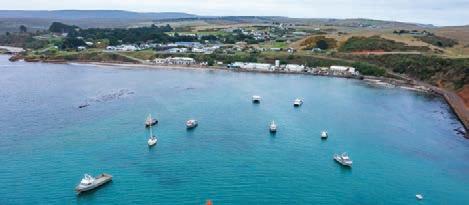
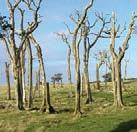



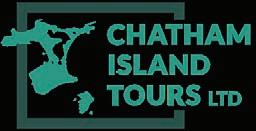




•
•
•
Over 400nm effective range
• Wasp/timezero
• 2021 trailer with brand new WOF included in the price
Owner moving to a launch so reluctantly selling.


handypiece
n Ideal for shearing sheep, alpacas, goats and cow tails
n Variable speed from 2600-3500rpm
n Latest brushless motor technology means minimal heat build up
n 1400gms means 100-200gms lighter than standard handpiece
n At 2800rpm
n We

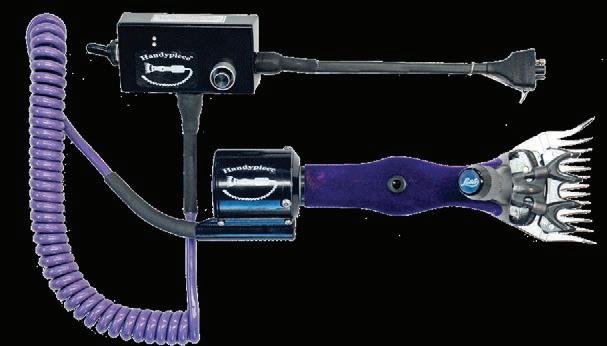

FOR SALE
SALE TALK
TWO WOMEN WHO each own a dog were arguing about which dog was smarter. The first woman said: “My dog is so smart, every morning he waits for the paper boy to come round. He takes the newspaper and brings it to me.” The second woman said: “I know...” “How do you know?” “My dog told me.”
TREES FOR FARMS
ADDITIONAL INCOME.
Stock shelter, erosion control, Truffle income, animal fodder, fireproof cork and Natives. 021garden.co.nz Litherland Truffles 021 327 637.
HORTICULTURE
milled for use in agriculture and horticulture. Growth promotant / stock health food. As seen on Country Calendar. Orders to: 03 322 6115 or info@nzkelp.co.nz
SEEKING COUNTRY FRIENDSHIP & companionship. Christine is a down-to-earth country woman who truly loves rural life. Born and raised on the land, she’s attractive with a slim build, blonde hair and blue eyes. Her passions include gardening, home cooking, spending time outdoors, fishing, reading and enjoying life’s simple pleasures. Christine is looking to connect with a genuine sincere man. Please call 0800 446 332. Quote code


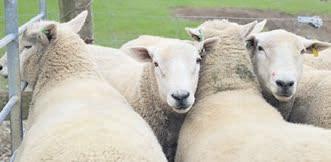


MACROCARPA AND PINE TREES. Plantations, Shelterbelts, Farm lots, Big or small, Lower North Island, Good $$$ paid. No obligation free quote. Call Grant 021 246 4329 HSF Ltd.
WHAT’S SITTING IN your barn? Ford, Ferguson, Hitachi, Komatsu, JD. Be it an excavator, loader or tractor, wherever it is in NZ. Don’t let it rust. We may trade in and return you a brand new bucket for your digger or cash for your pocket. Email admin@loaderparts.co.nz or phone Colin 0274 426 936.
NATIVE LOGS WANTED. Salvage logs and Green standing trees, all species. Top prices paid. We acquire all necessary MPI and Council consents. All enquiries welcome. Phone Mike 027 458 5250.
WORK WANTED EXPERIENCED ANGUS BEEF breeder. 60 years on the land. Looking for something to do. Please email waimeadowns@ gmail.com











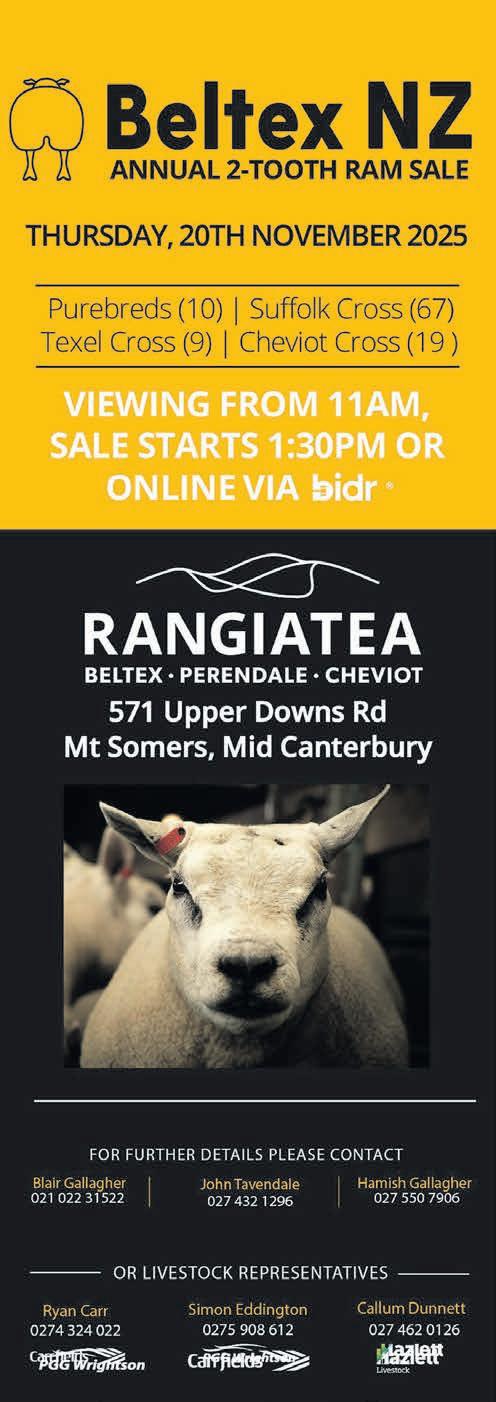
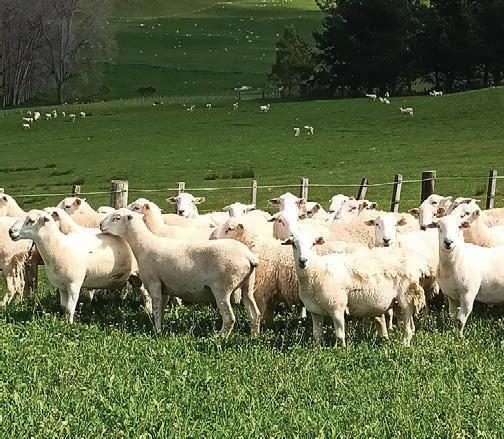
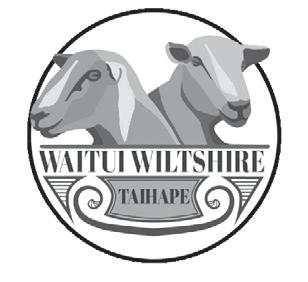
Wiltshire 2th Rams

FEILDING SALEYARDS VIEWING FROM 11AM
Contact:
Charles (farm owner) 027 753 2099 Matt (stock agent) 027 242 9479


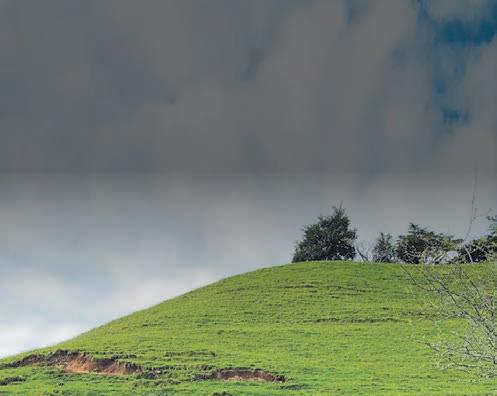
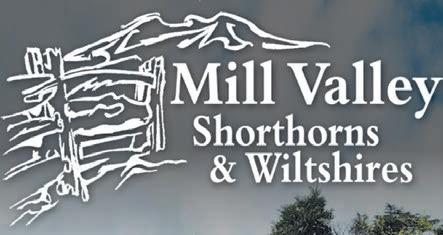
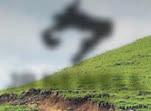
ADELONG POLL DORSET STUD

06 762 8080 027 664 8835 jeremy@jrnlivestock.co.nz
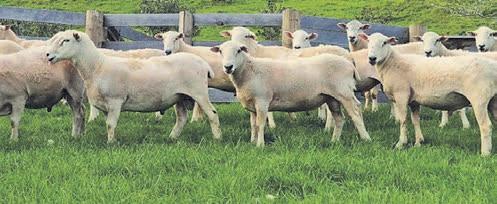
40 x 2th SIL recorded purebred Wiltshire rams Friday 14th November 2025 - 1pm 5th Annual Ram Sale
360 Arnold Road, RD 25, Stratford, Taranaki 027 345 2680 (Aaron) 027 698 8291 (Amanda) millvalleynz@gmail com millvalleyshorthorns Selected for:



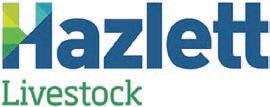


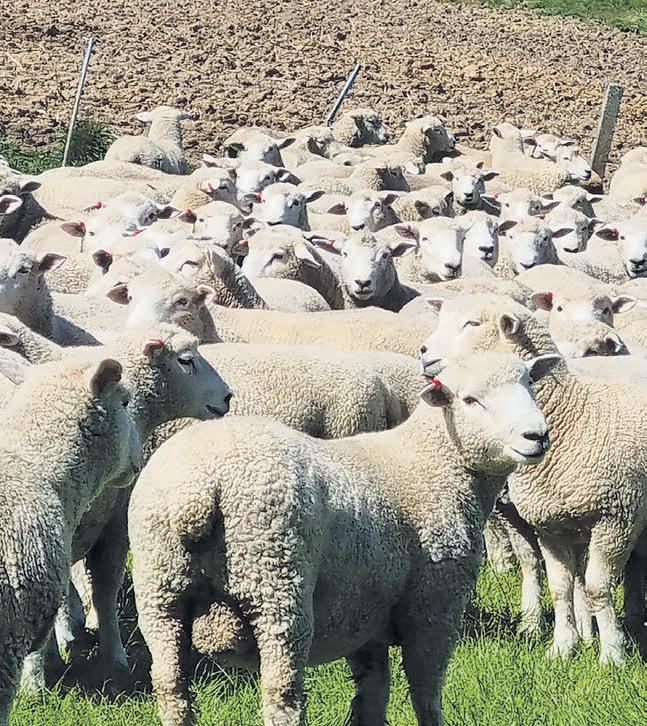





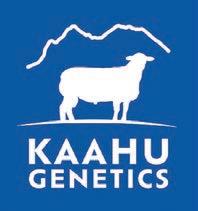

















SOUTHDOWNS
4 Hogget mating
www.southdownsheep.org.nz
Easycare Genetics NZ
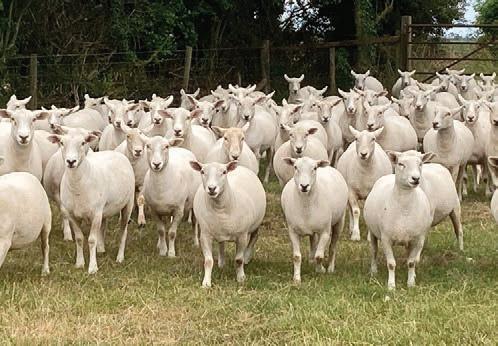
Building Better Bloodlines
Piquet Hill Rams are:
• Moderately framed and structurally sound
Renowned for their resilience and adaptability, Easycare sheep are a stabilised shedding breed established in the UK 20+ years ago.
2th rams derived from embryos imported to NZ in 2024 from top UK Easycare studs will be available this season.
Open Day – Wed 19th Nov at 1.30pm 7 Crow Road, Winton Rams and ewe hoggets with lambs available for inspection
For further information phone 027 229 7267 or email: easycaregeneticsnz@gmail.com
200 Facial Eczema Rams for Wiltshires
Wiltshires Auction - 40 Rams: Tuesday 25th November - 11am Taupo Saleyards, 15 Oruanui Road. My Top 10 rams for sale will be
• FUTURE FOCUSED - 30 Years of Performance Recording Shedding Sheep.
• FIRST for FACIAL ECZEMA - Ramguard™ since 2006, 0.55.
• FIRST for PARASITES - Carla™ antibody test since 2012.
• FIRST for MEAT, FERTILITY - AnimalPlan/SIL recording since 1995.
• TOP MEAT YIELDING RAMS - Low Input Trial Results.
• HOOF SCORING - Every Ewe and Ram Hogget.
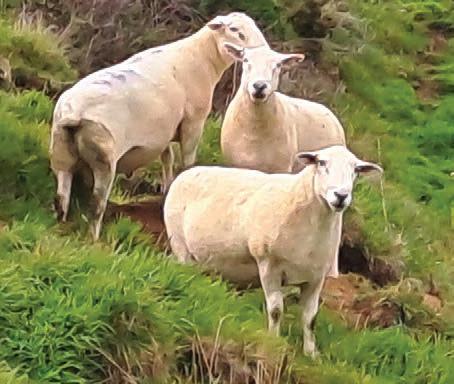
On Farm Sales – WELLSFORD, BOMBAY, MATAMATA David Arvidson 027 277 1556 | arvidsonz@gmail.com

• Extremely hardy
• Prolific and vigorous
• FE tolerant

• Worm resistant

• DNA profiled and parent verified

Maternal composite (FE testing @ .67)
Sheddmaster (FE testing @ .40)
Romney (FE testing @ .72)
Blackface terminal composite
Enquiries and viewings welcome Will Jackson 027 739 9939
william@piquethillfarms.co.nz www.piquethillfarms.co.nz

ECZEMA TOLERANT ROMNEYS
RAMGUARD TESTING SINCE 1985
• 5 star rating
• Bred on challenging hill country
• Robust functional sheep that survive
• Structurally sound
• Selecting for parasite tolerance and less dags
• No ewes worm drenched, dipped or vaccinated


KEITH ABBOTT, RAGLAN 027 463 9859 | www.waiteikaromneys.co.nz @waiteikaromneys


ROMNEY
MATERNAL

• 160+ clients purchased/leased Paki-iti rams/hoggets last season
• Bred on a 870ha hard hill country property rising up to 637m asl
• Moderate frame, deep bodied type of sheep
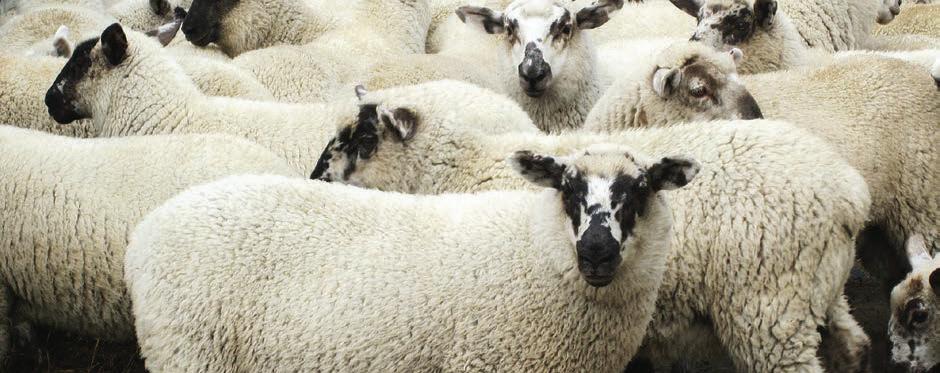


• Growth, fertility, survival, worm tolerance, longevity, hogget fertility

• Facial Eczema flock testing at 0.44mg/kg sporodesmin


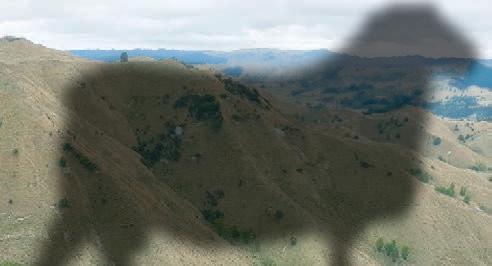





PAKI-ITI ROMTEX
– MATERNAL + GROWTH
• Stabilised breeding programme –better fertility, better structure

• Offering faster growth rates and higher meat yield


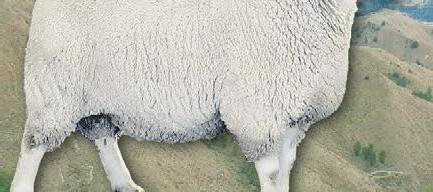

• Growth, yield, fertility, survival, worm tolerance, longevity, hogget fertility








• Romtex rams sold as 22th rams









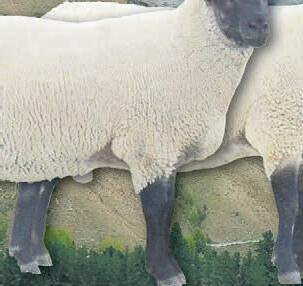






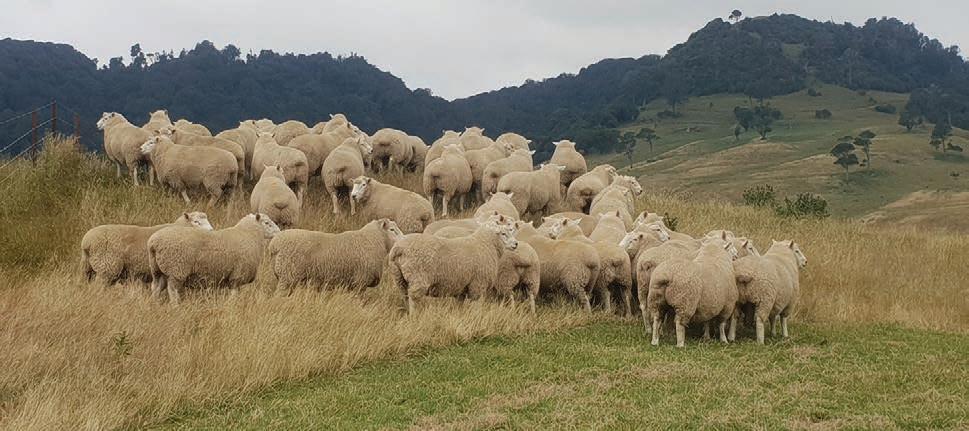



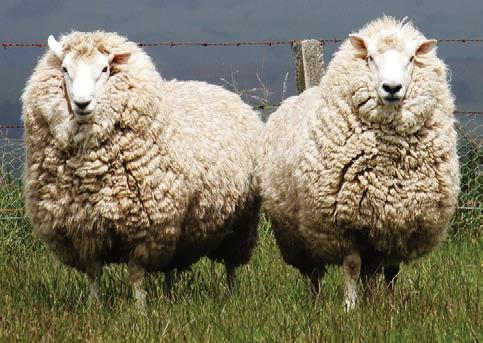

























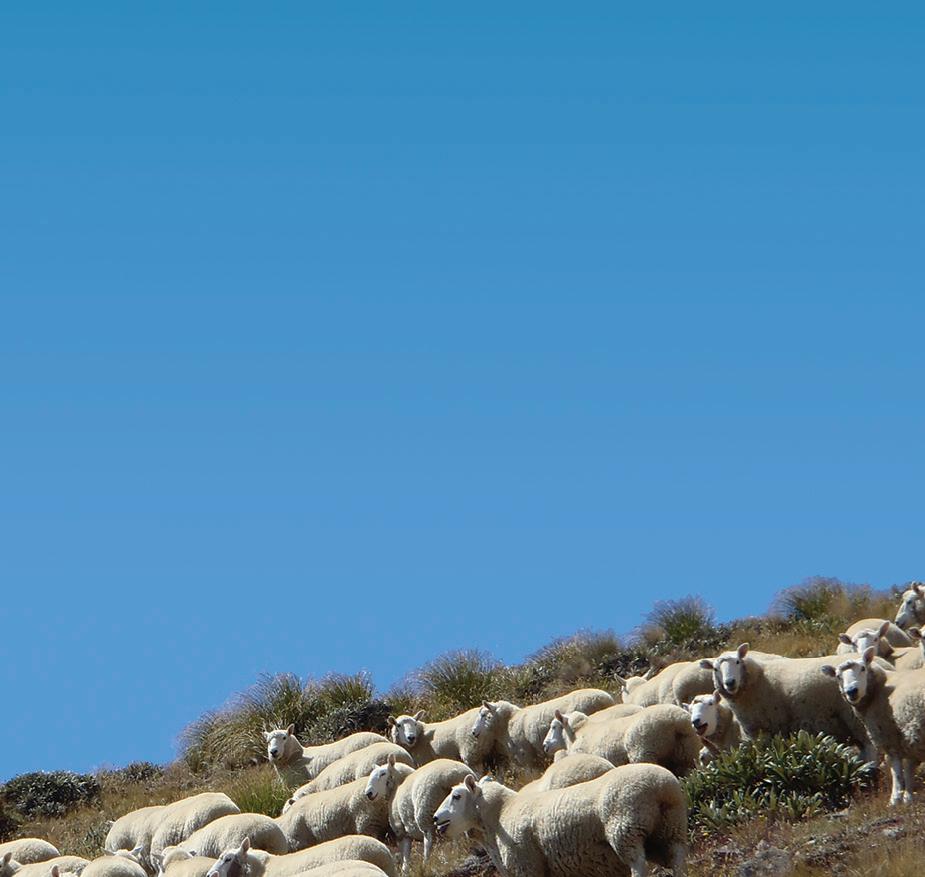



From the slopes of the Tararuas - ASHBY -
•
•
•
•
Do you want Production Performance from your Perendales?
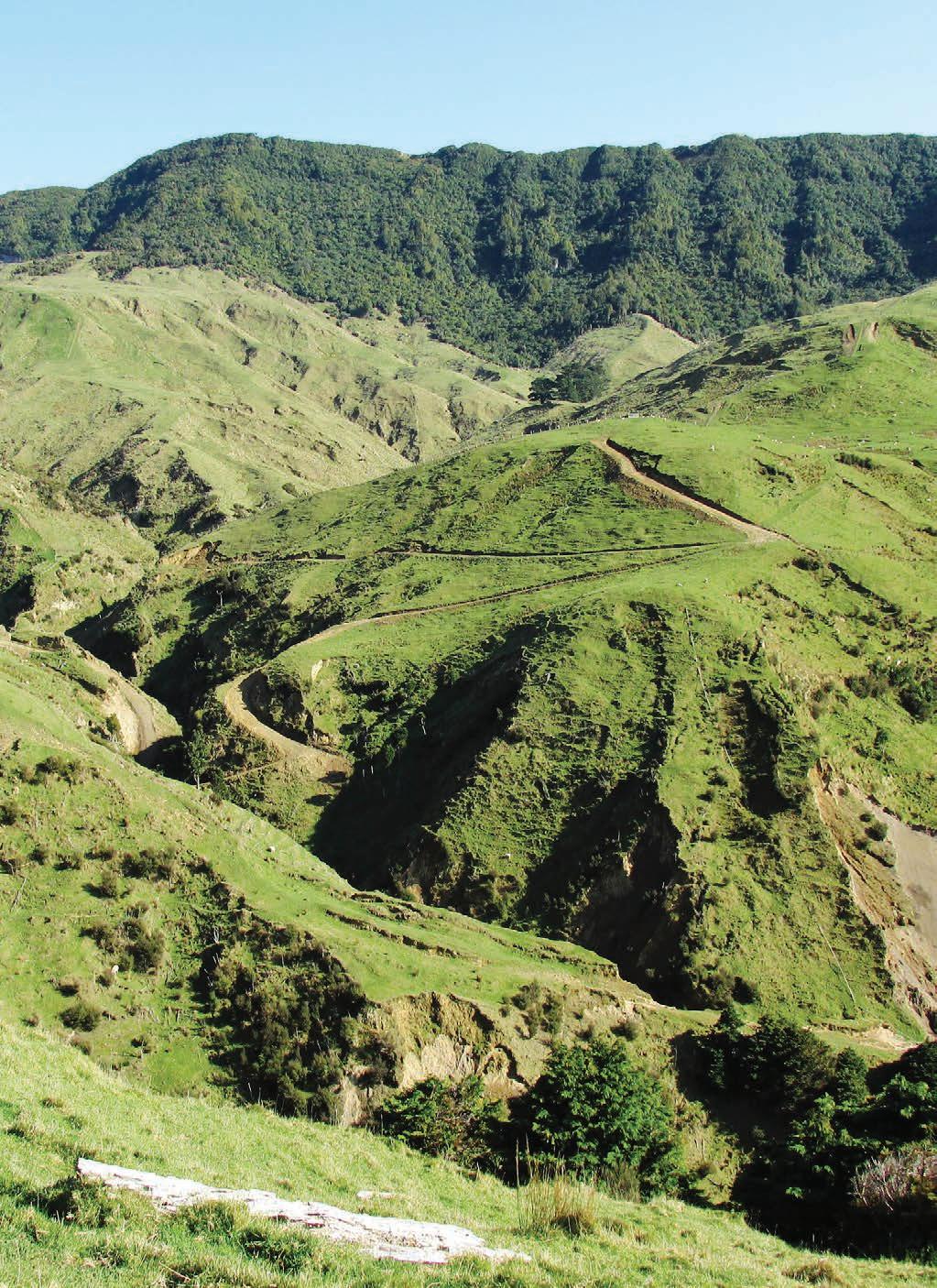
Born and reared under environmentally challenging commercial conditions in the Pongaroa district under the Puketoi range, the Hautere stud aims to breed prolific, structurally correct meaty sheep of sound constitution, good bone, clean colour and quality wool with meaningful production records to back them up.
Constant genetic improvement results in the bar continually being raised.
We welcome you to inspect our sheep and their records to form your own opinion as to whether we are on the right track.


Hardy sheep bred on hard hill that perform on any country Fertile, high yielding, meaty rams with constitution WormFEC programme for 25 years, less drenching,
Stud ewes haven’t been drenched for 25+ years
Using 5k and 50k DNA technology
Lambing hoggets for 10+ years unassisted




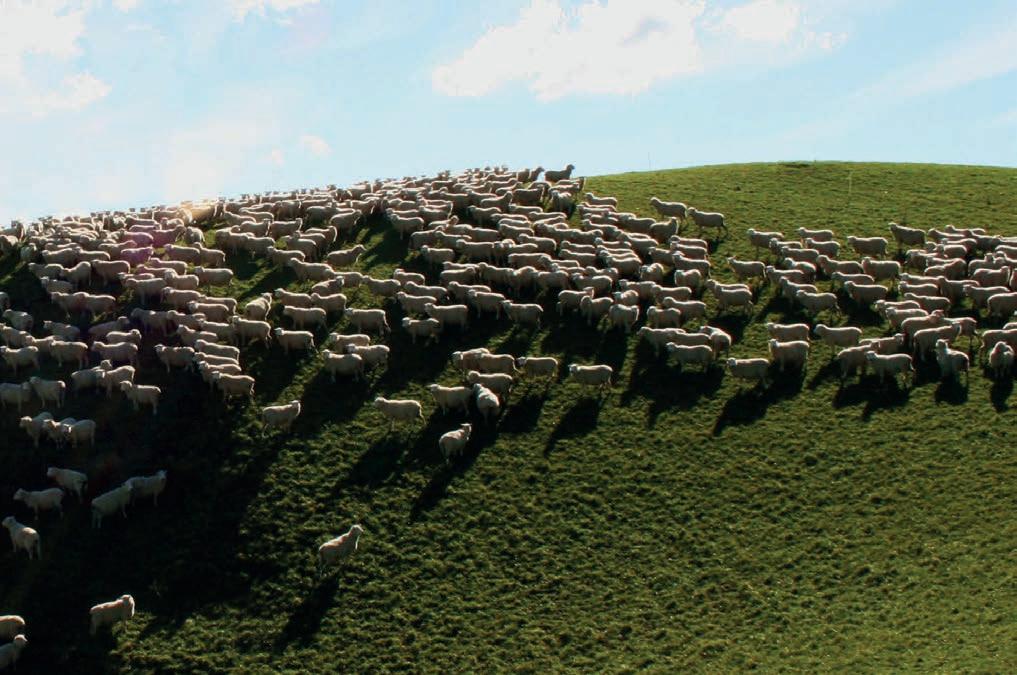
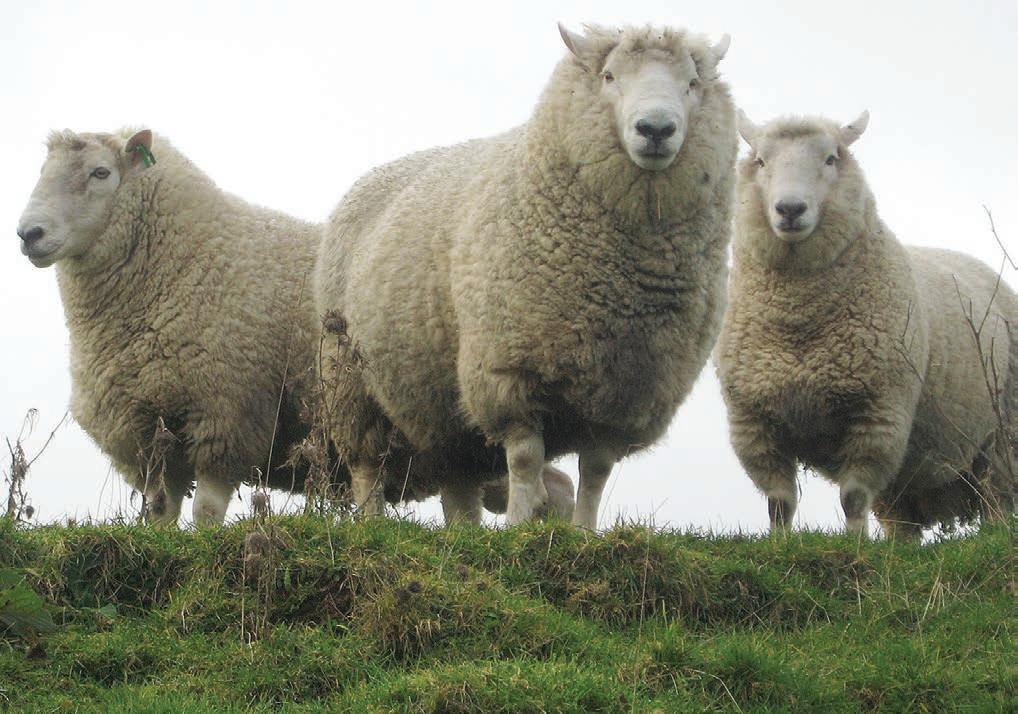
Proudly sponsored by
US beef market hit with a new challenge
Trump has turned his erratic attention to the price of beef, and that has ranchers worried.

NOVEMBER tends to signal the first flush of finished cattle into processing plants across the country. Processors have been eagerly awaiting their arrival in order to capitalise on the record returns still swirling through export markets.
The United States imported beef market has been a standout performer this year, building on foundations laid through 2024.
The continued lift in imported beef prices stems from a US beef herd that has yet to show signs of a meaningful rebuild, while surging demand continues to stretch already tight supplies.
This has seen a far greater reliance on imported beef, and although trade to the US has exploded this year, it has yet to dampen prices.
US imported 95CL bull meat is currently trading at over US$3.50/ lb. This compares with US$2.97/lb last year and a five-year average of US$2.67/lb.
Coinciding with these strong prices is a low NZD:USD crossrate. This has propelled returns in NZD terms to well over $13/kg and enabled very strong farmgate returns for bull beef.
Now, as the spring bull kill starts to gather momentum, farmers can finally start to enjoy these

This unnecessary fear of potentially lower beef prices will likely make it even harder to trigger a rebuild of any scale.
higher returns, rather than simply reading about them.
With US domestic supplies remaining hamstrung and consumer demand robust, beef prices in the US are forecast to remain strong. This bodes well for imported beef prices in 2026.
But as we have already seen this year, changes to trade in the US have been swift, and there is nothing to suggest this won’t continue. With US President Donald Trump now focusing his attention on US beef prices, it
brings another challenge to an already apprehensive market.
The US beef market has faced a series of external challenges this year – from tariffs to closed borders – and the hits just keep coming. The latest obstacle stems from Trump’s decision to increase imports of Argentine beef in an effort to lower domestic beef prices.
The announcement sent US beef futures into a tailspin and drew sharp criticism from ranchers in the US, who argue they’ll be the ones most directly affected.
As many ranchers pointed out, they don’t control beef prices, nor can they dictate consumer demand. The real drivers behind high prices are limited supply and continued strong demand. Even if additional imports do arrive, it could be some time before
consumers see any meaningful impact on prices, if they do at all.
While the plan to raise Argentina’s import quota from 20,000 to 80,000 tonnes sounds significant, in reality it accounts for less than 1% of total US beef production. The effect on overall market prices will likely be minimal.
In contrast, reopening the Mexican border or reducing tariffs on Brazilian beef – both possible moves by Trump – would have a far greater influence on prices, given the sheer volume of live cattle and boxed beef that could flood back into the US market.
For US beef producers, the timing couldn’t feel worse. After years of drought and depressed prices, many are finally benefiting from stronger returns. Now, however, it feels as though the rug
has been pulled out from under them.
There’s no doubt the US beef industry needs to rebuild from its current low base. Incentives have been strong thanks to higher prices, but this has been one of the slowest rebuild efforts in recent memory.
Some believe the high prices are too good to pass up, thus selling rather than retaining cattle has been the favoured option. Now, this unnecessary fear of potentially lower beef prices driven by government policy, rather than weakening demand, will likely make it even harder to trigger a rebuild of any scale. This market needs certainty and once that is locked in, prices will naturally find their feet again as herd rebuilding begins and US supplies tighten further.






Mel Croad MARKETS Sheep and beef
BULL: Political manoeuvres present another challenge to an already apprehensive US beef market.
Cattle Sheep Deer

Weekly saleyard results




f l e x
S c a n n e r, Ca l v i n g J a c k , Ca l f D e h o r n i n g C r u s h , H i p L i f te r s, Tr a s h Pu m p s, Wa te r Sys te m S e t u p, A l k a t h e n e, Fo o t M a t , Wa te r B l a s te r, G e n e r a to r ( N e e d s wo r k ) , Wa te r Fi t t i n g s, Fe n c i n g S u p
D e s k s & Ta b l e s, O f f i ce Ca b i n e t s, Fi l i n g Ca b i n e t s, Wi p e B o a rd, N u m e ro u s Fa r



Photo:
Easing up on the windy westerlies pedal

THERE’S a difference between expected weather and possible weather. The expected weather is what the global weather computer models and local forecasters produce. The possible weather factors in anything that may surprise us or break the forecast.
Spring this year has been near textbook in many measurements, but clearly it’s had more oomph than previous years – making the wind events windier and the rain events slightly more intense.
To make sense of November’s weather forecast, it pays to look back several months to examine the pattern, so we can better project forward.
With no La Niña or El Niño so far this year we’ve been in “neutral”.
That basically means anything can be thrown at us, but neutral does tend see a predominant weather pattern from the west to southwest.
Due to this, winter ended on
a cold note for much of New Zealand, with September bringing further cold weather and the spring equinox winds.
October brought the usual spring peak of severe weather.
The month of October is well known for being a wild one that can see MetService churning out more weather warnings than usual as outgoing winter cold clashes with incoming longer sunshine hours and summer heat.
The entire first week of November is dominated by high pressure in the NZ area.
November can be a bit benign following the previous months. Often the windy westerly flow continues – but eases back.
Often we get a few cold and frosty days – but many days are milder.
November may be shaping up to be the quietest of the spring months so far. That is my current thinking for the start of the month, anyway.
The Indian Ocean Dipole (IOD) is
negative (their version of La Niña and El Niño).
The negative IOD currently has an index value reaching -1.61degC for the week ending October 26 – the most negative IOD value recorded since Australia’s Bureau of Meteorology (BoM) dataset began in August 2008.
This brings wetter and sometimes cooler weather to central and southern Australia, and may flow on to NZ, possibly bringing more West Coast rain as any leftovers get caught up in our westerly flow.
North of NZ the El NiñoSouthern Oscillation (ENSO) remains “neutral”. While there are signs of possible La Niña development in the tropical Pacific Ocean, these signals have not yet been sustained at a sufficient strength or duration to meet criteria for an active event, says BoM.
The entire first week of November is dominated by high pressure in the NZ area. What a BIG change!
But week two of November may be classic for this month – with a hint of a southerly, followed by a subtropical low developing, which

WET: The big picture to mid-November shows rainfall increasing in the north, and the chance of wet weather in most regions, following a mainly dry first week of November.
may see easterlies in the mix too. November can surprise us once those windy westerlies relax and our weather patterns slow down –meaning lows and highs can form and sit over NZ much easier and wind directions can reverse.
A slower pattern usually produces longer stretches of dry, but can bring slower-moving lowpressure zones and still the odd wintry change. So we expect things to slow down – but it’s possible we’ll still get a surprise.


Philip Duncan NEWS Weather




